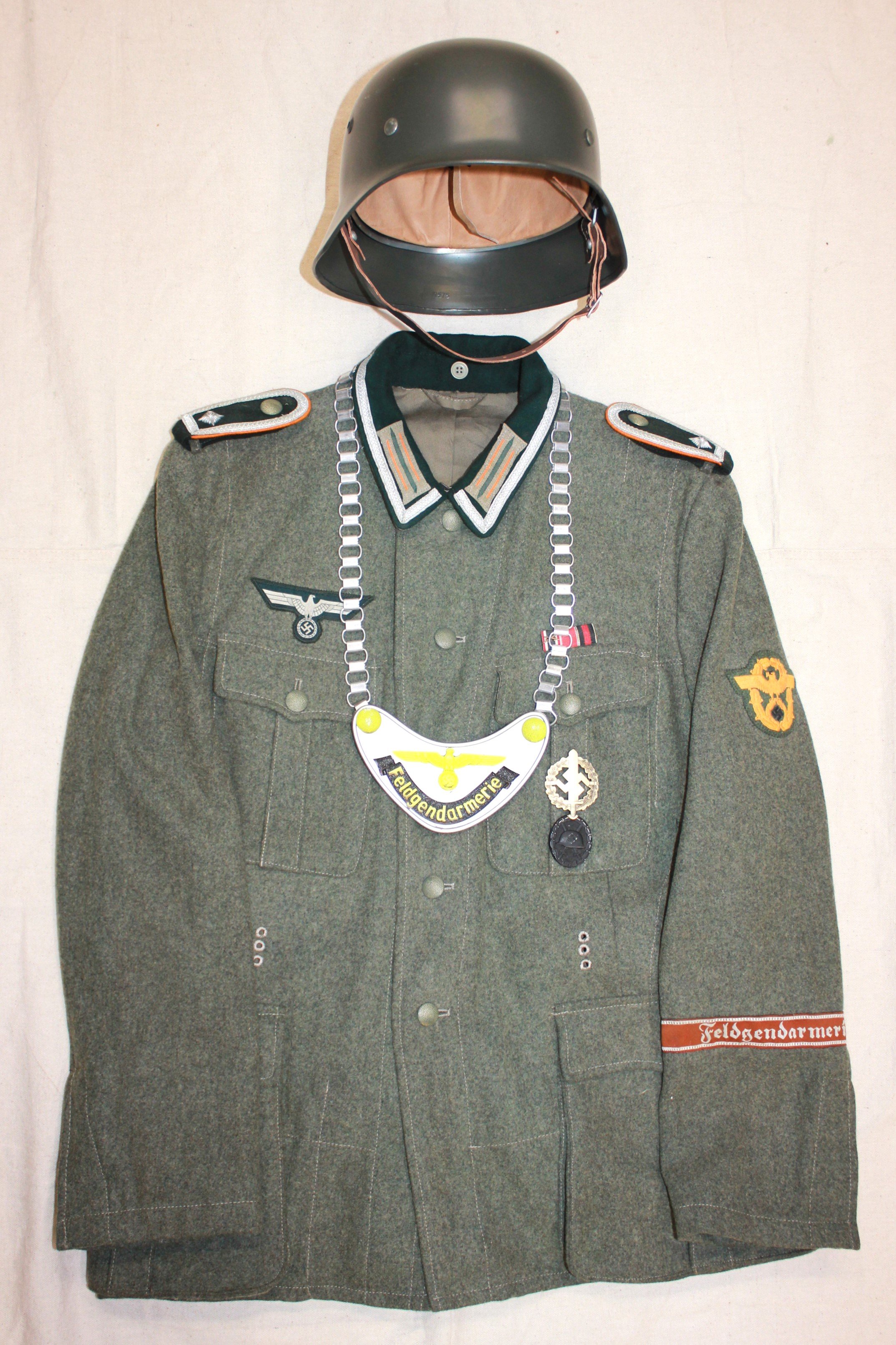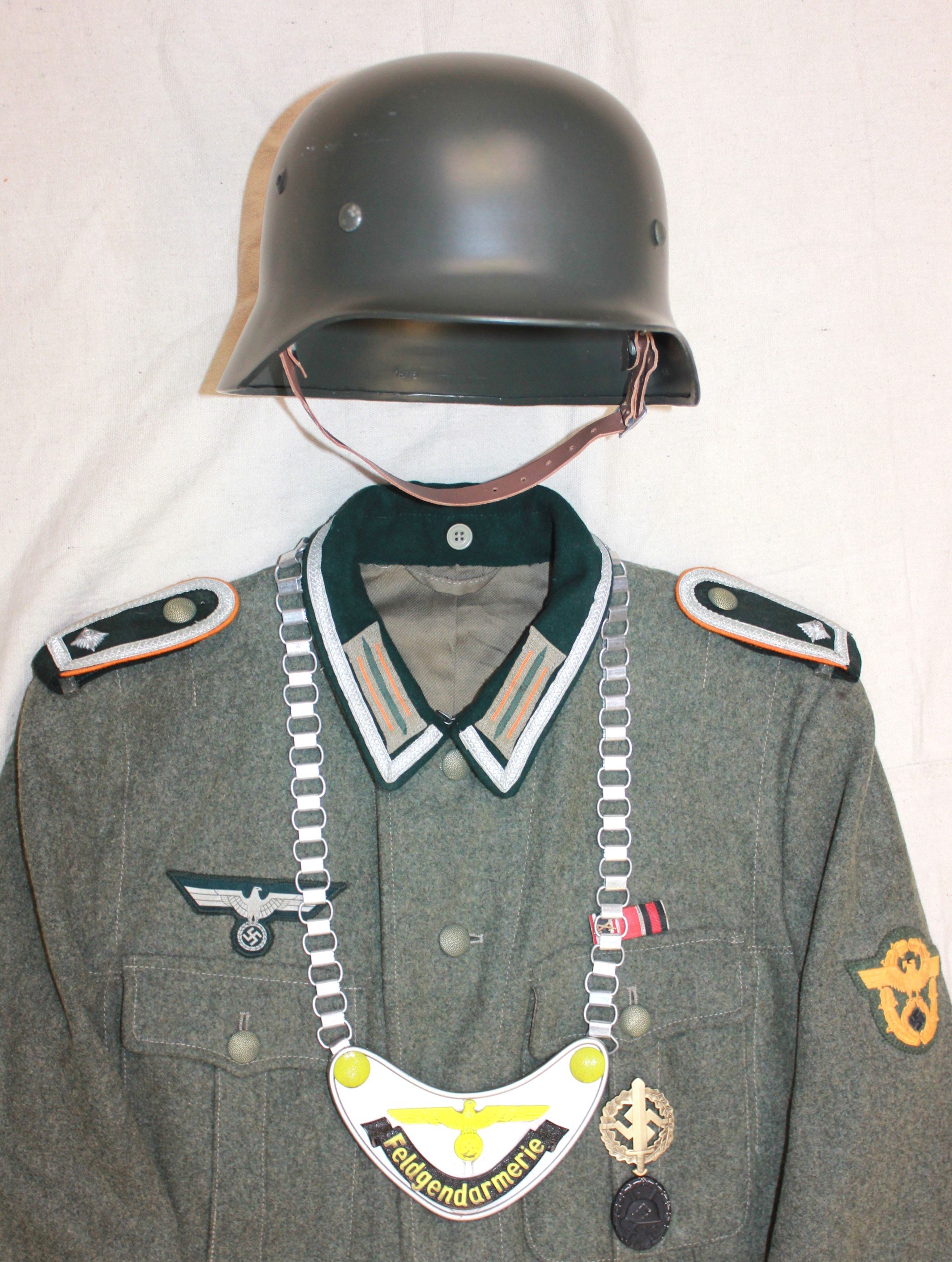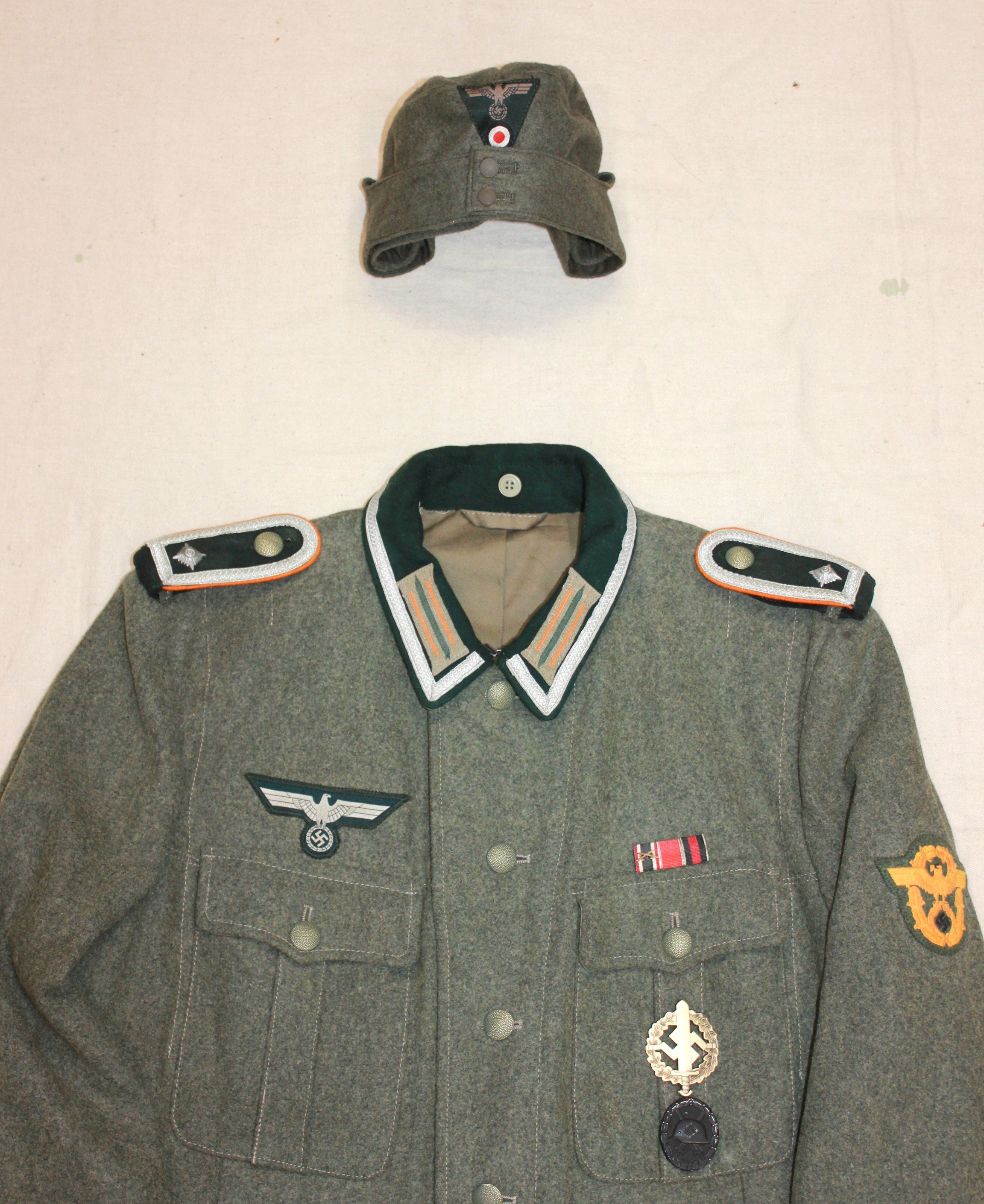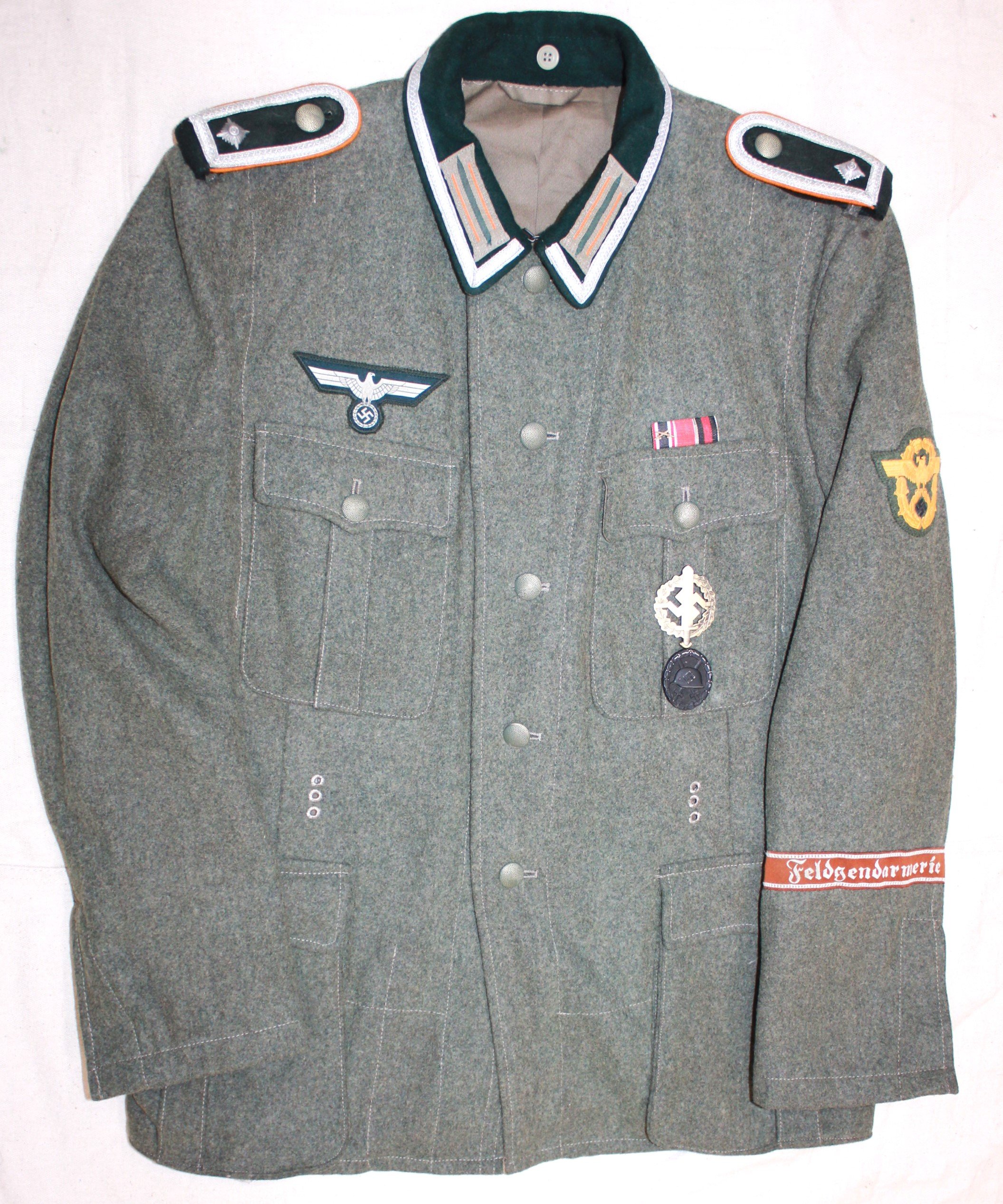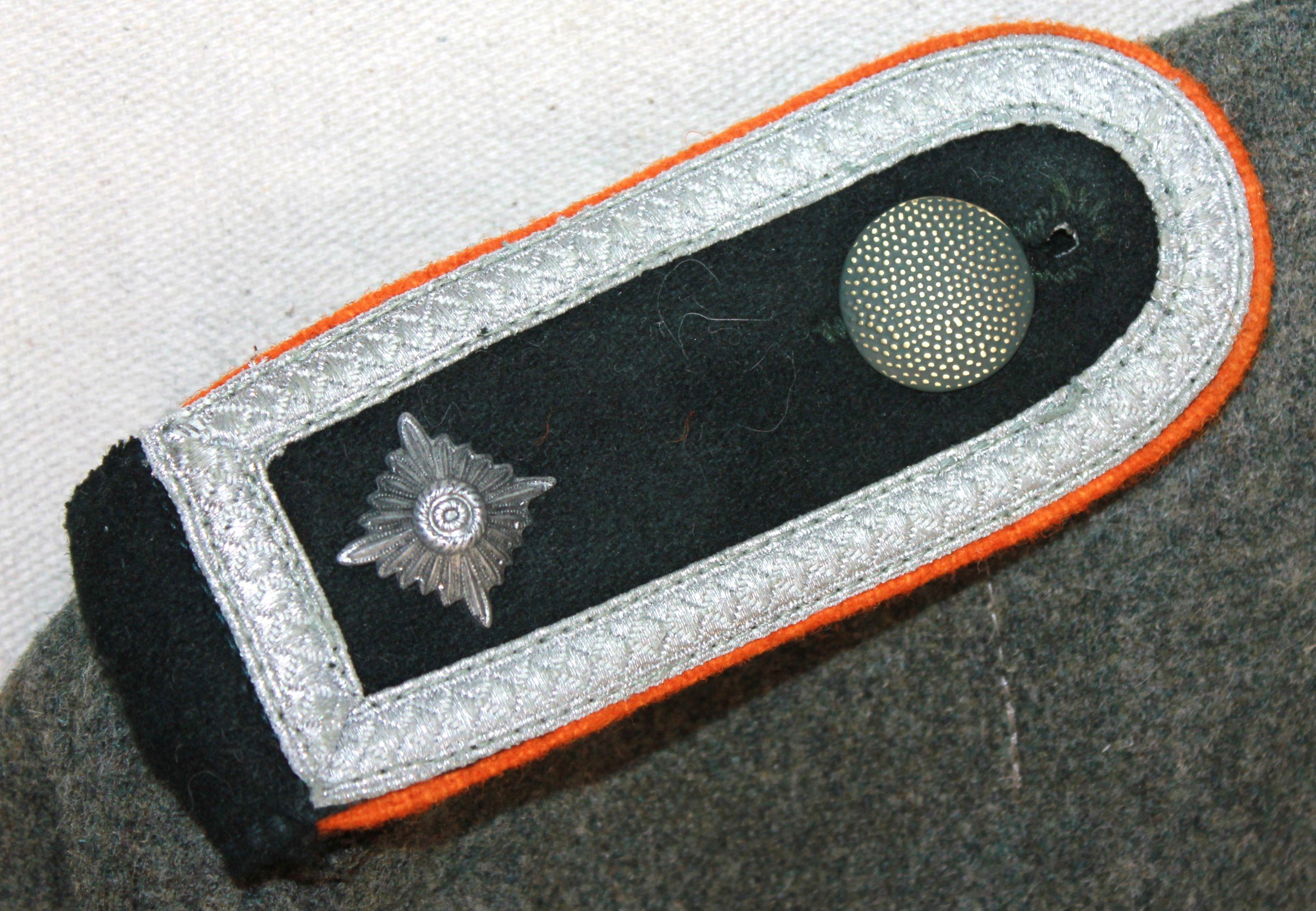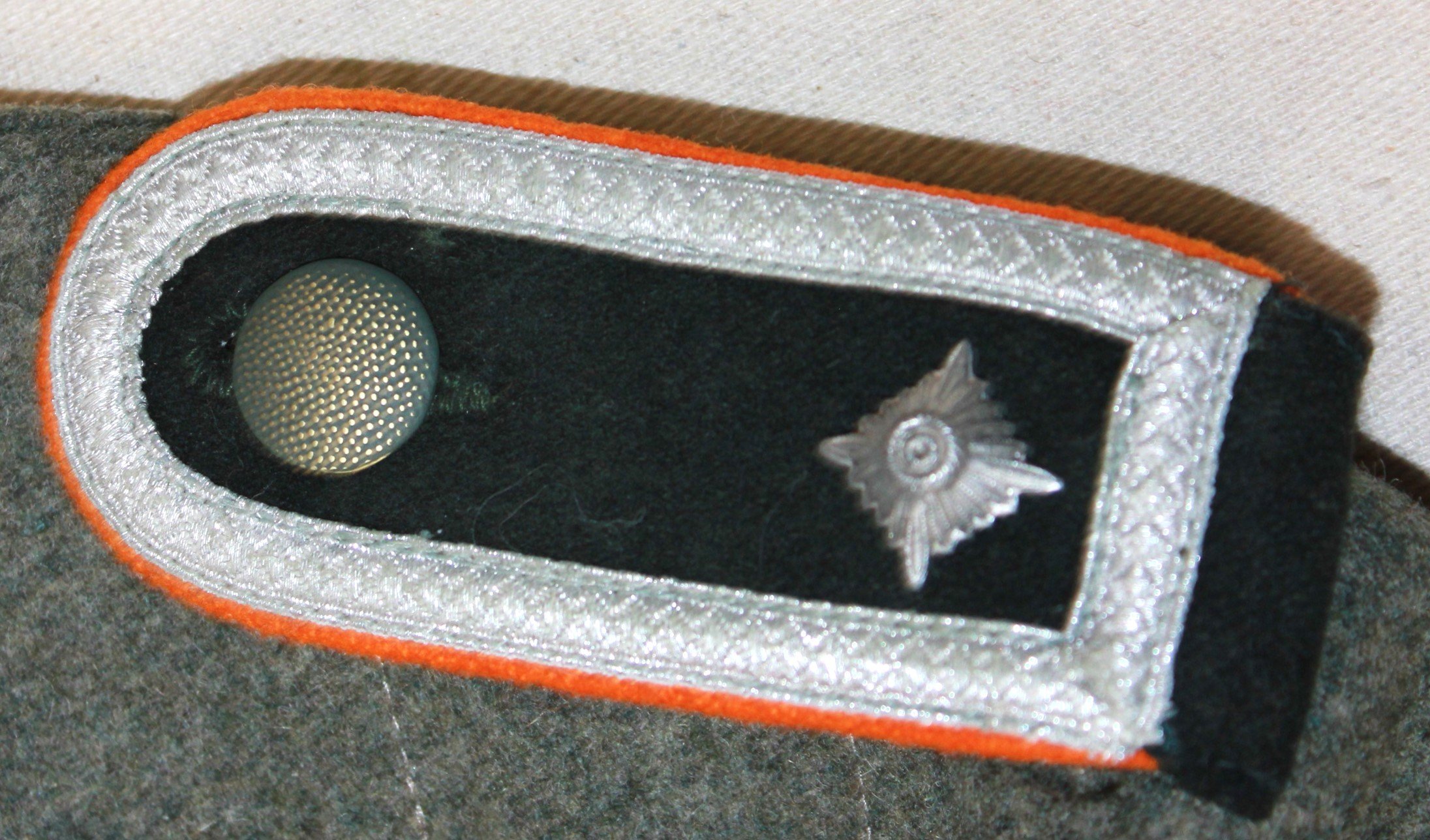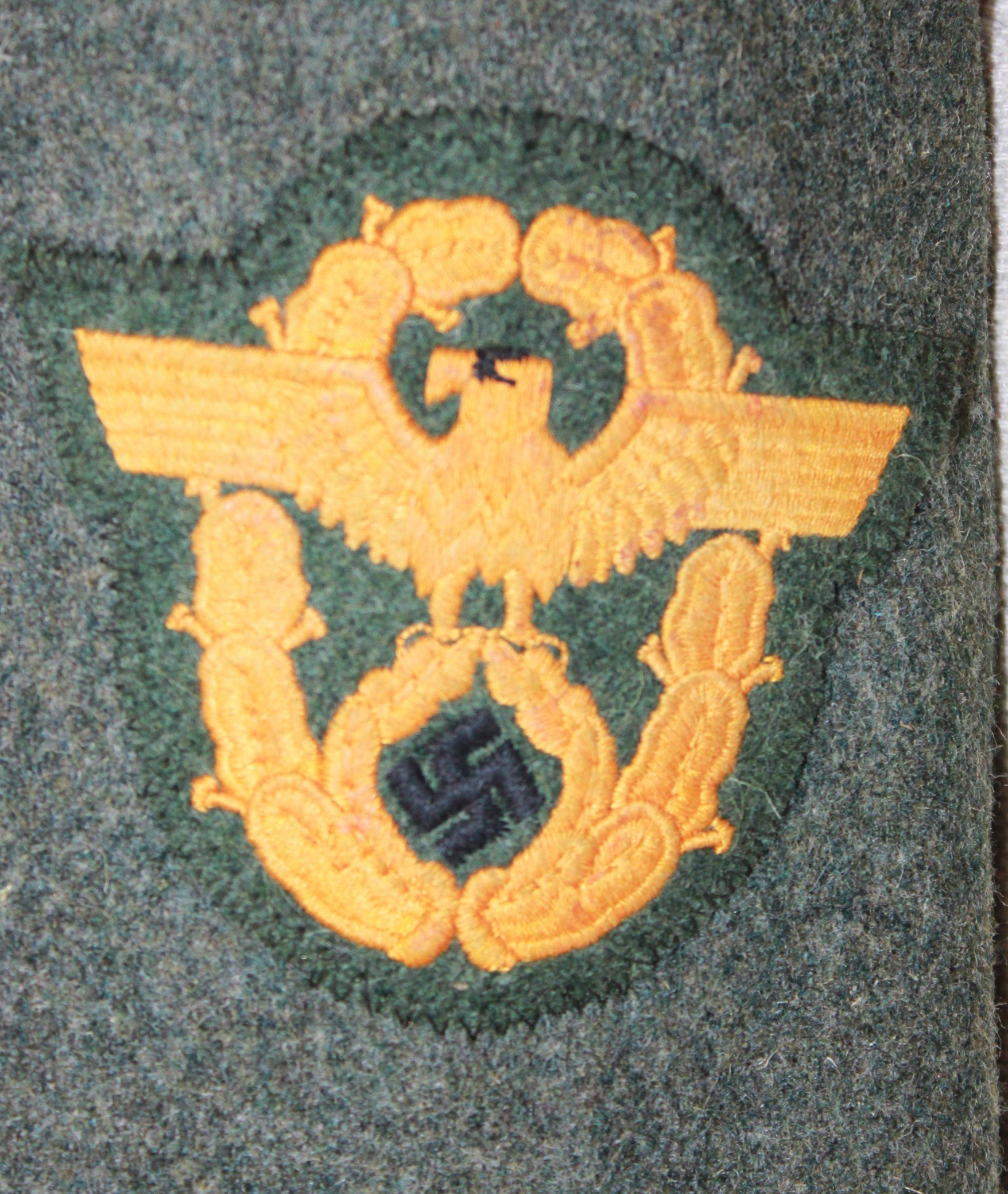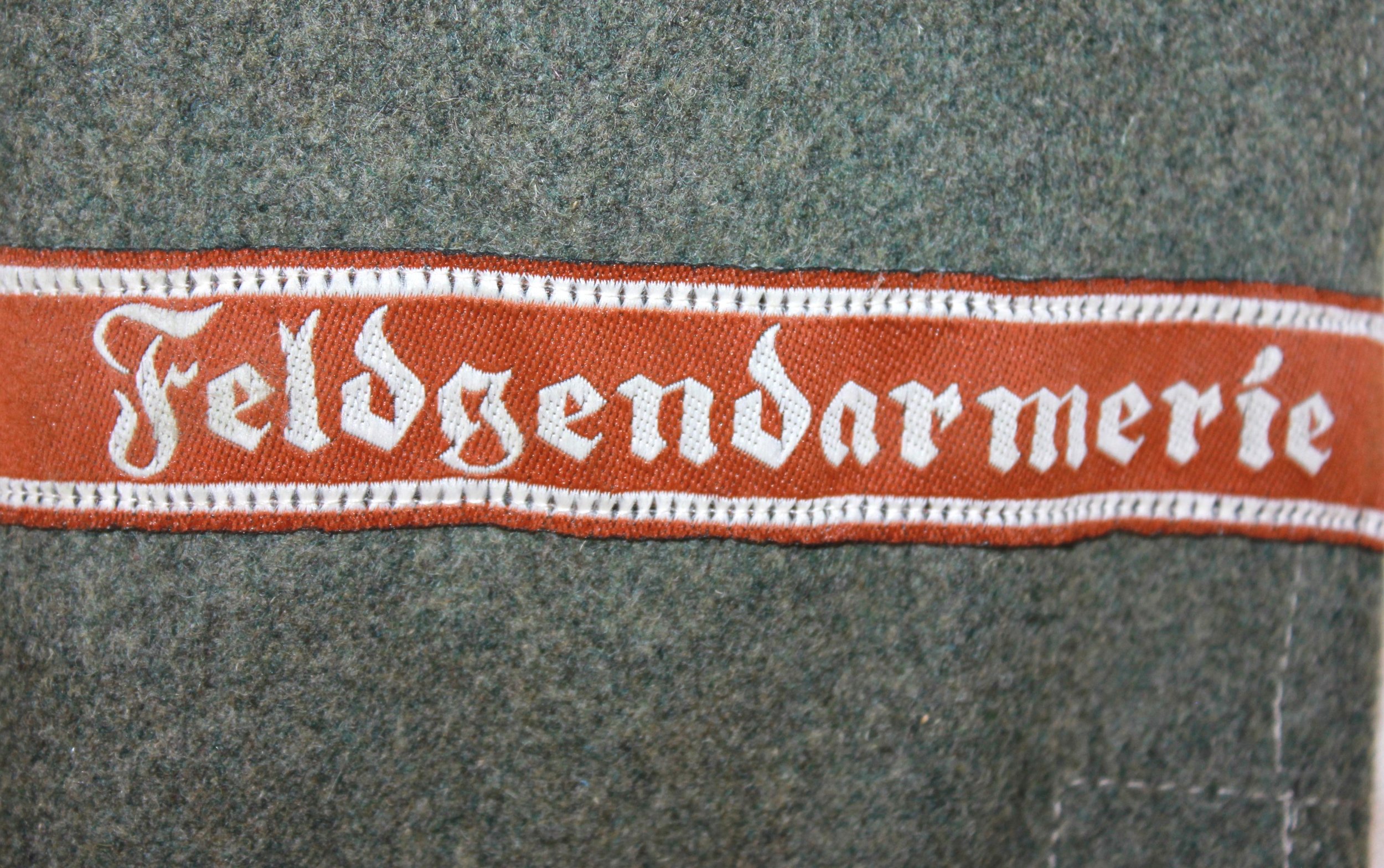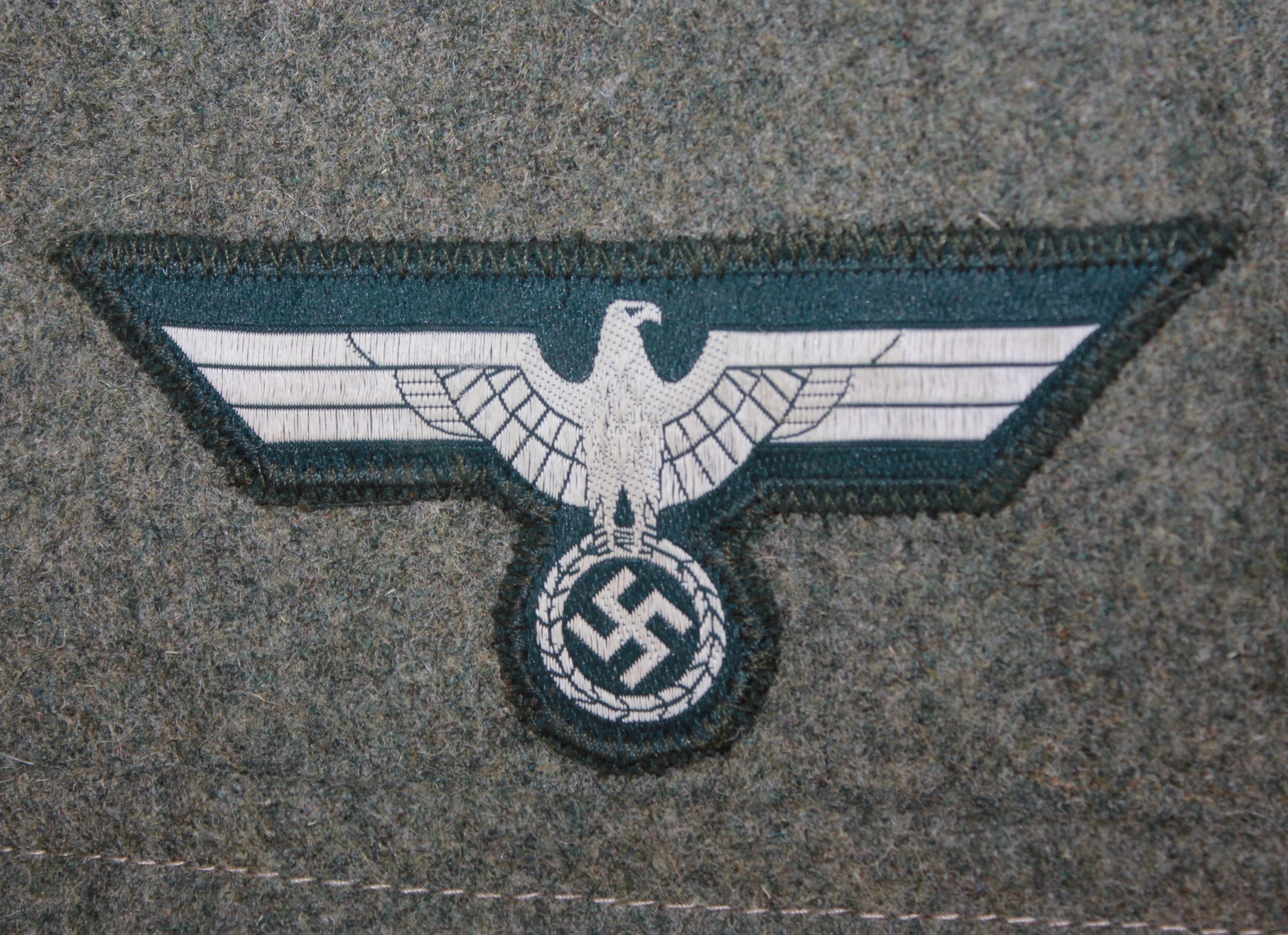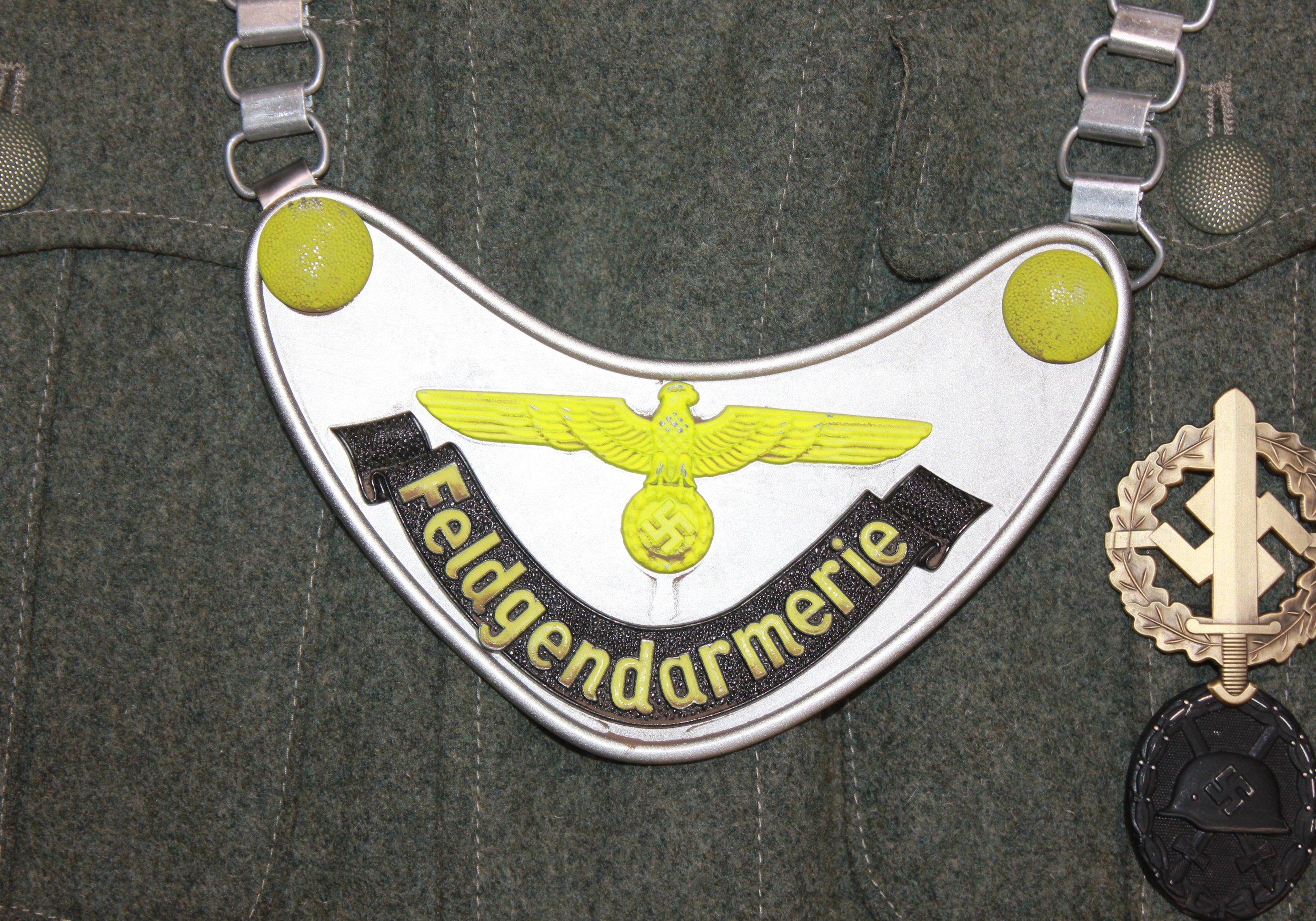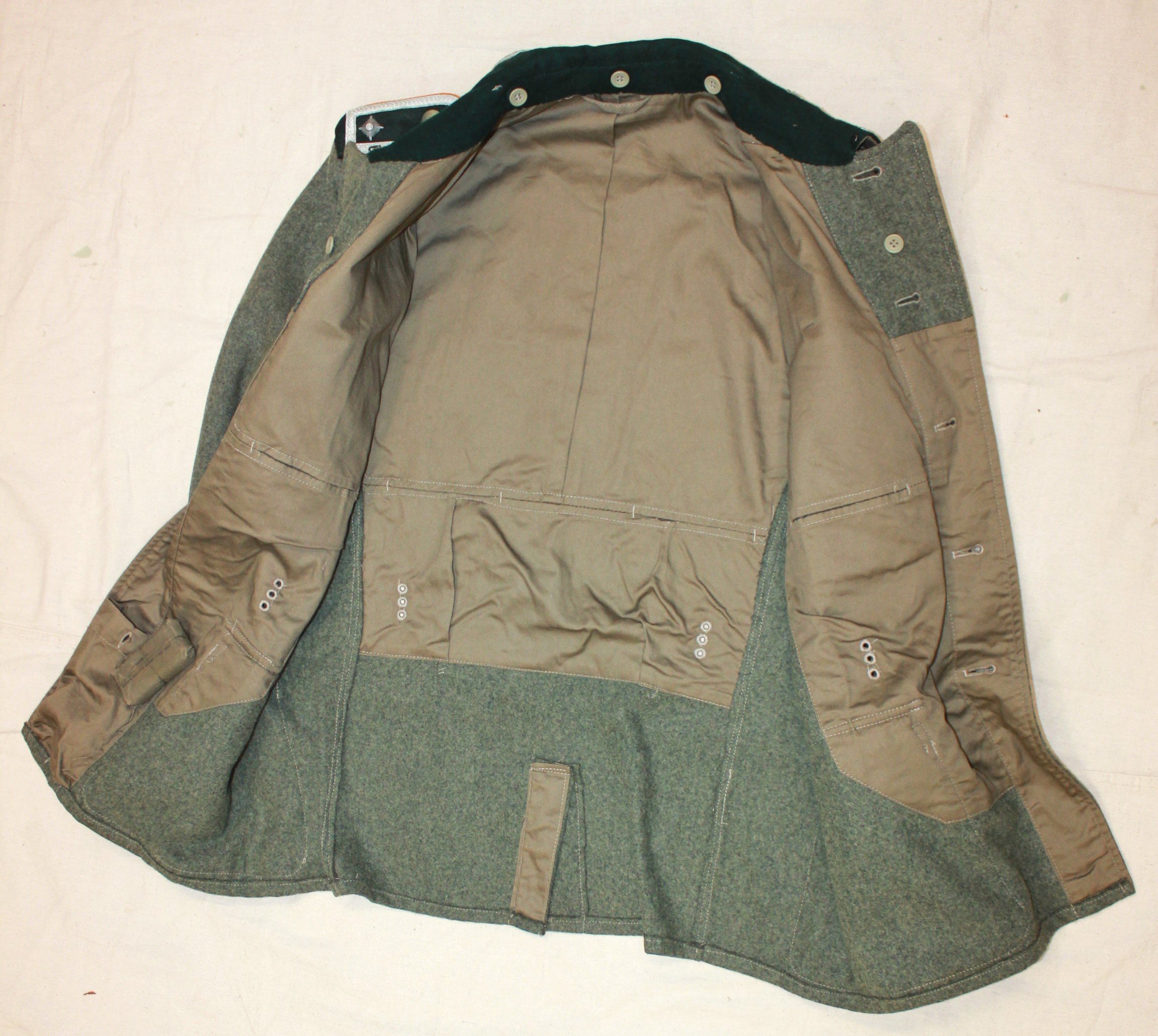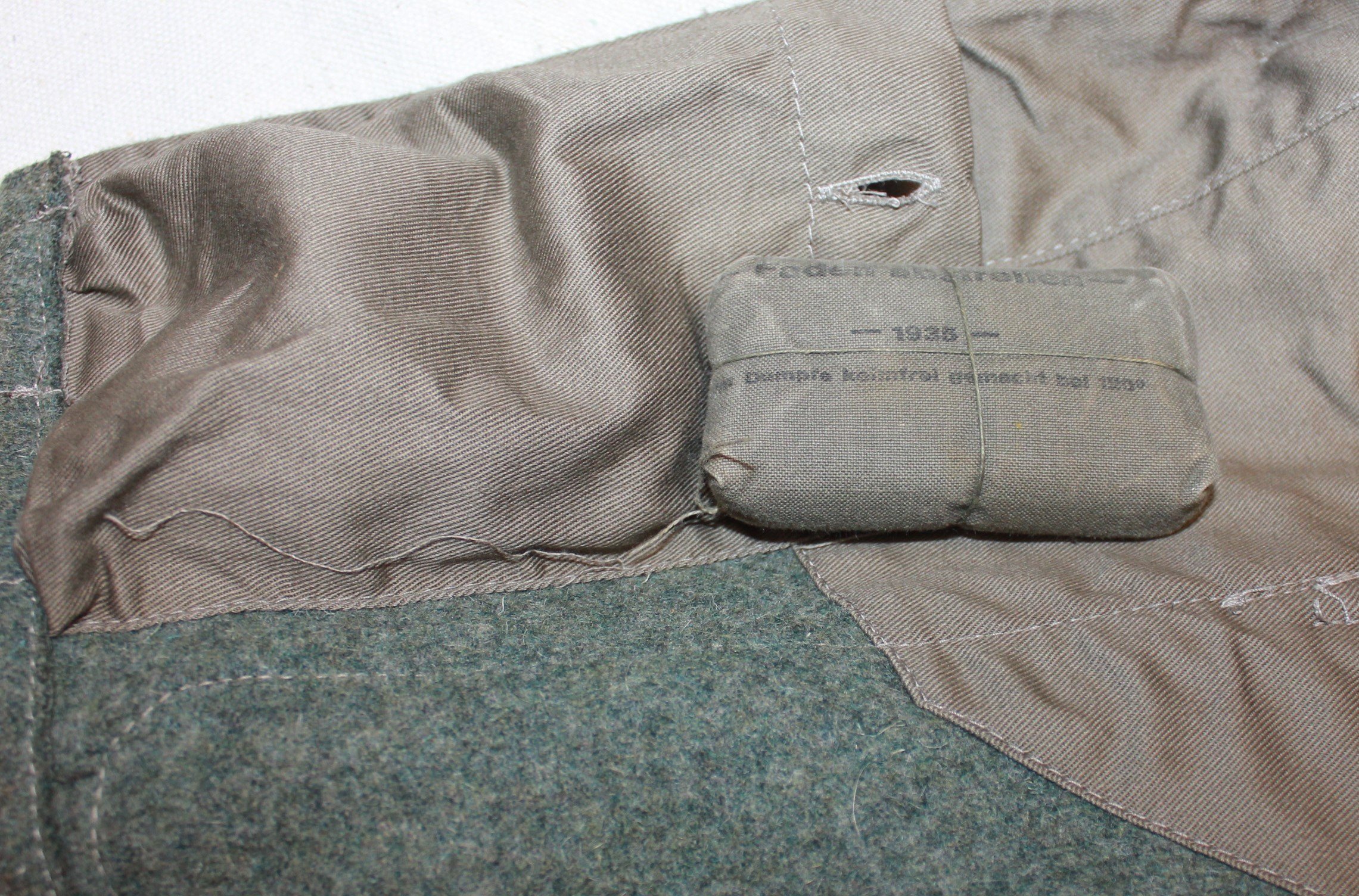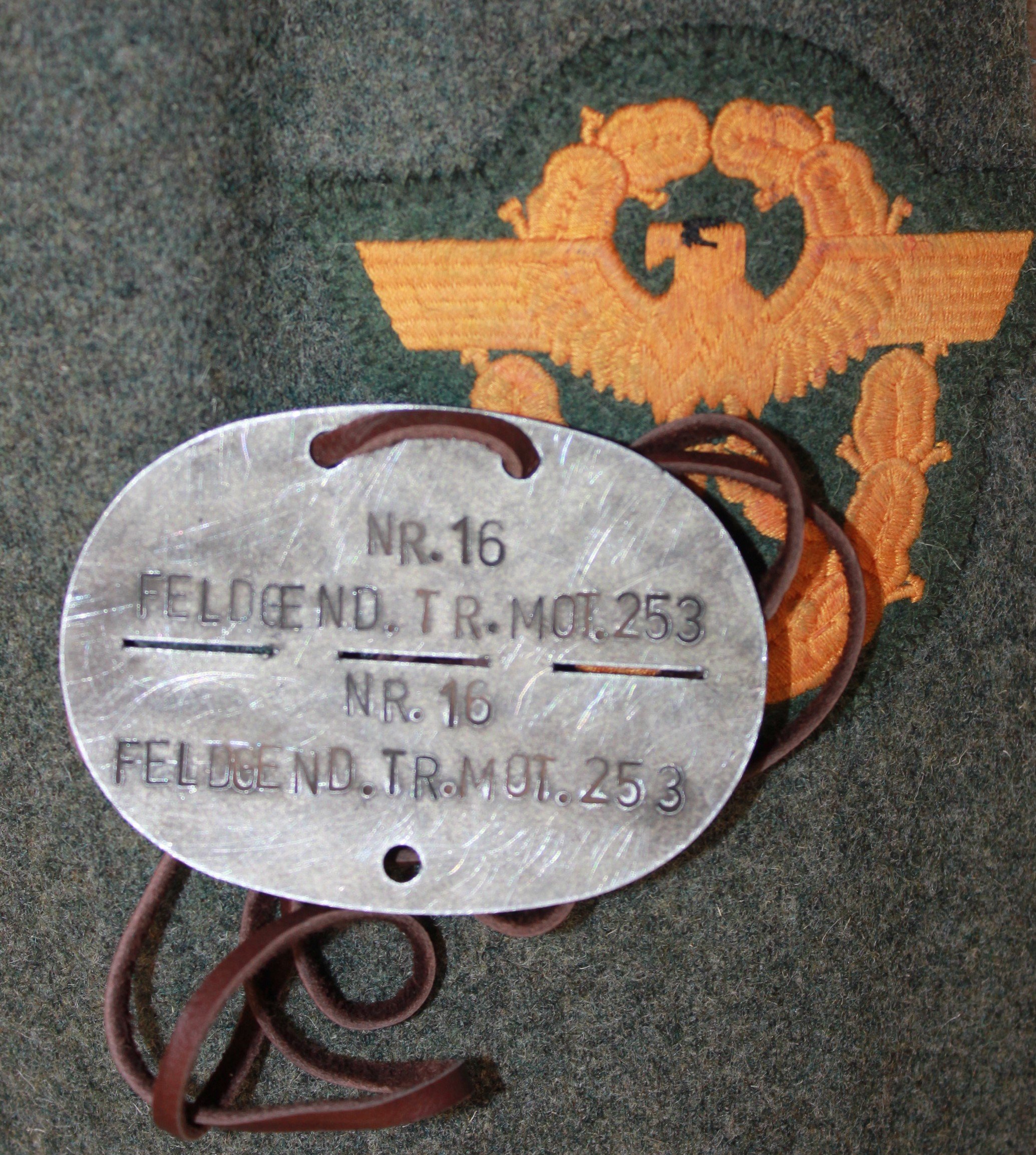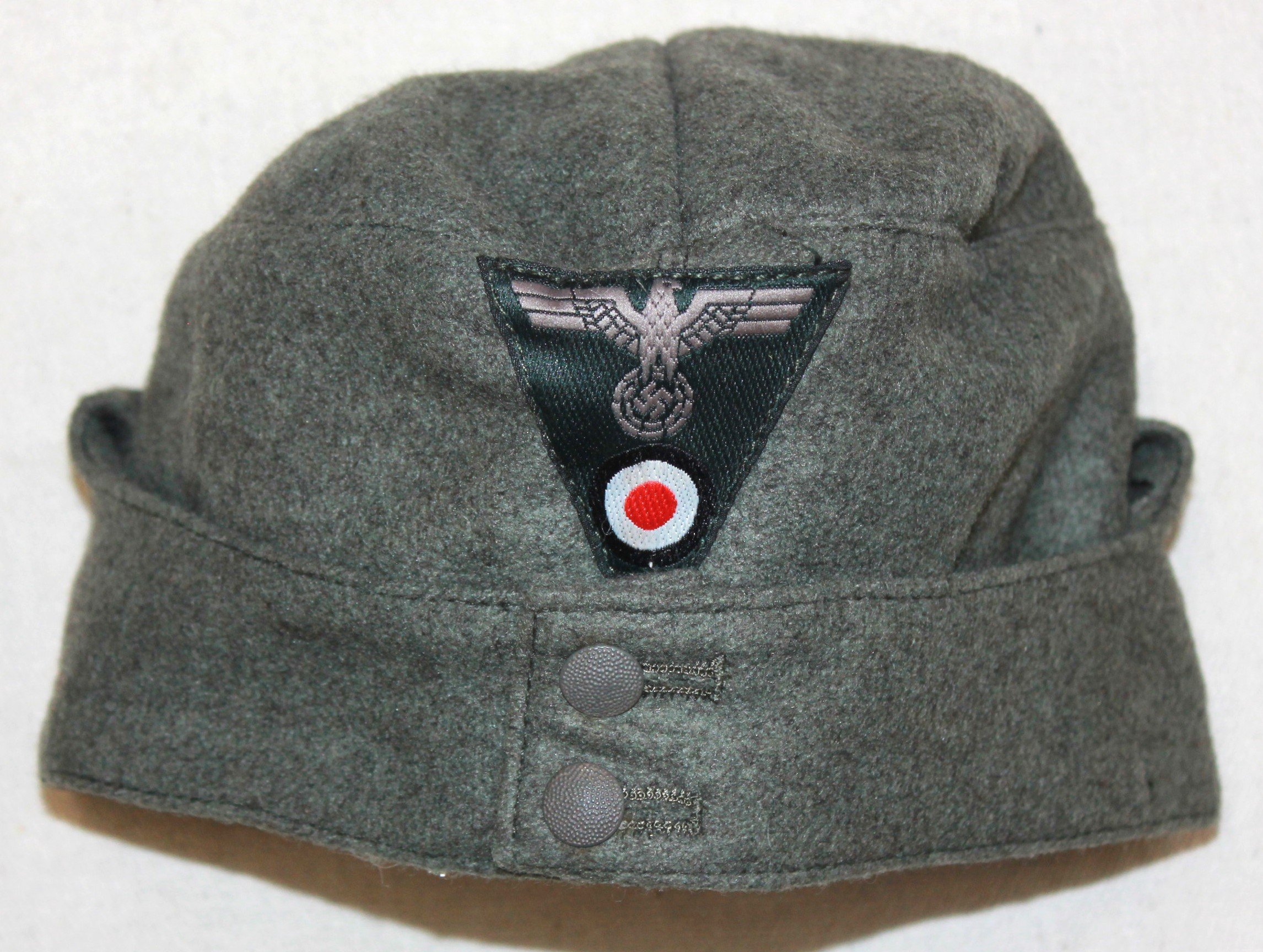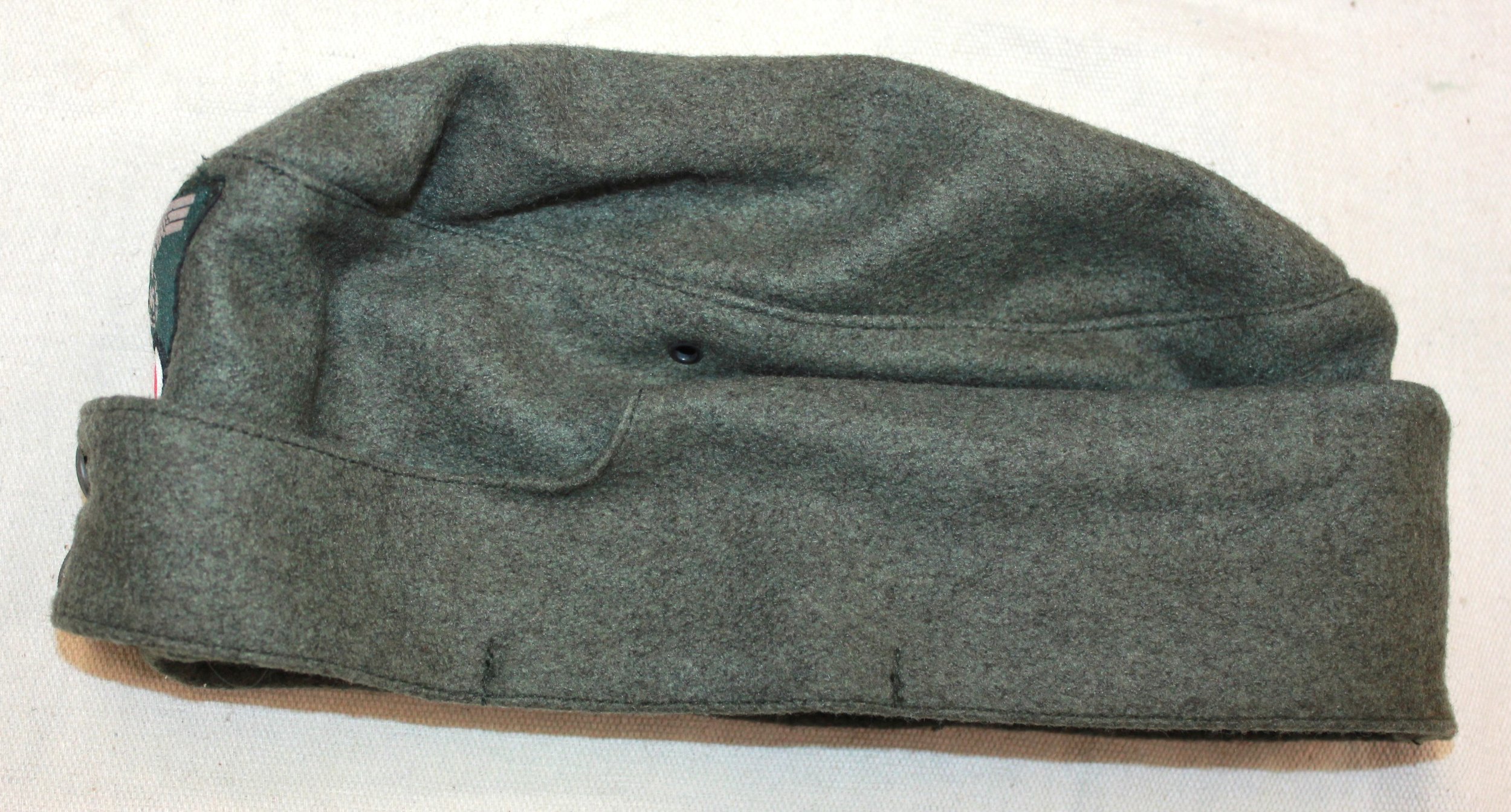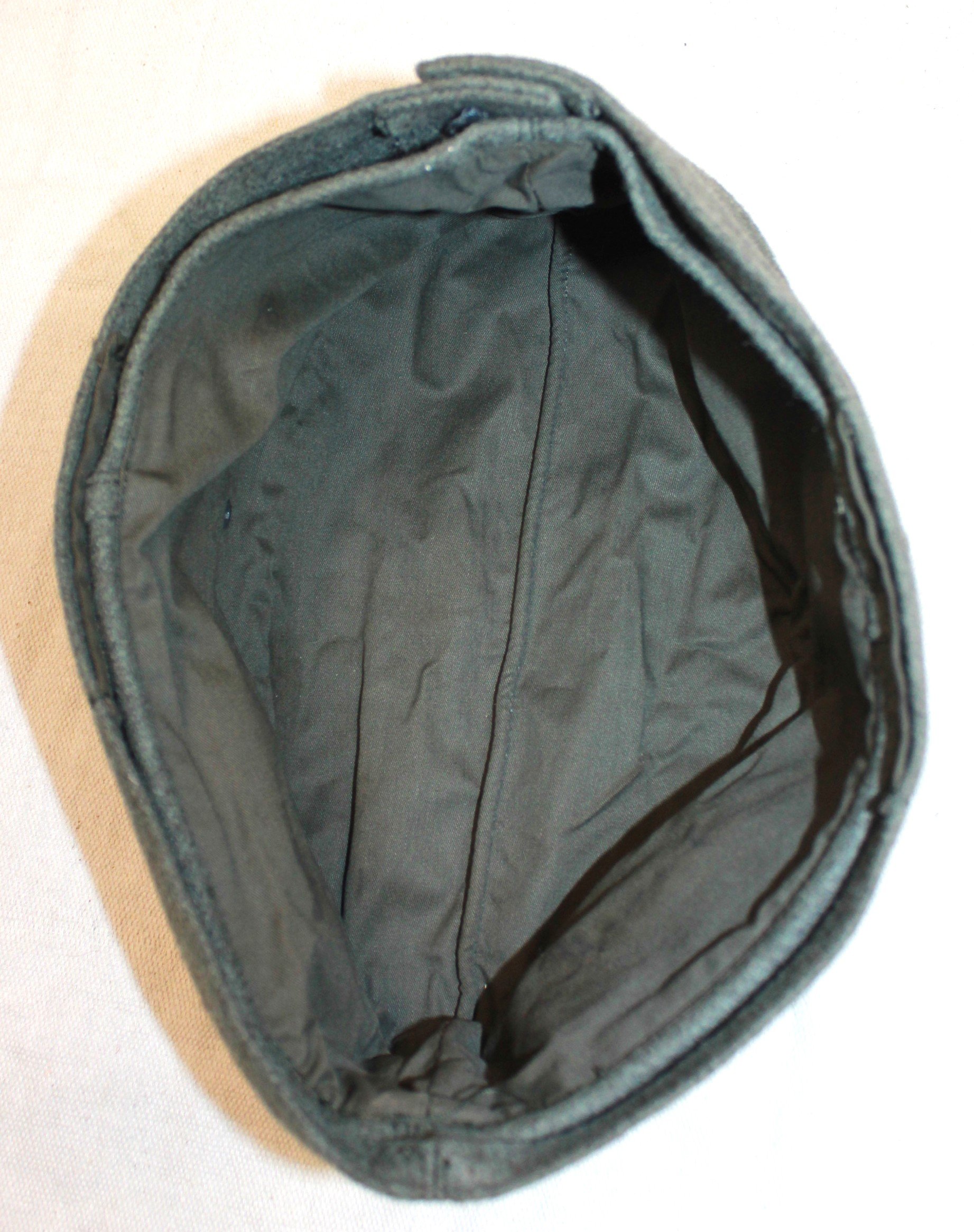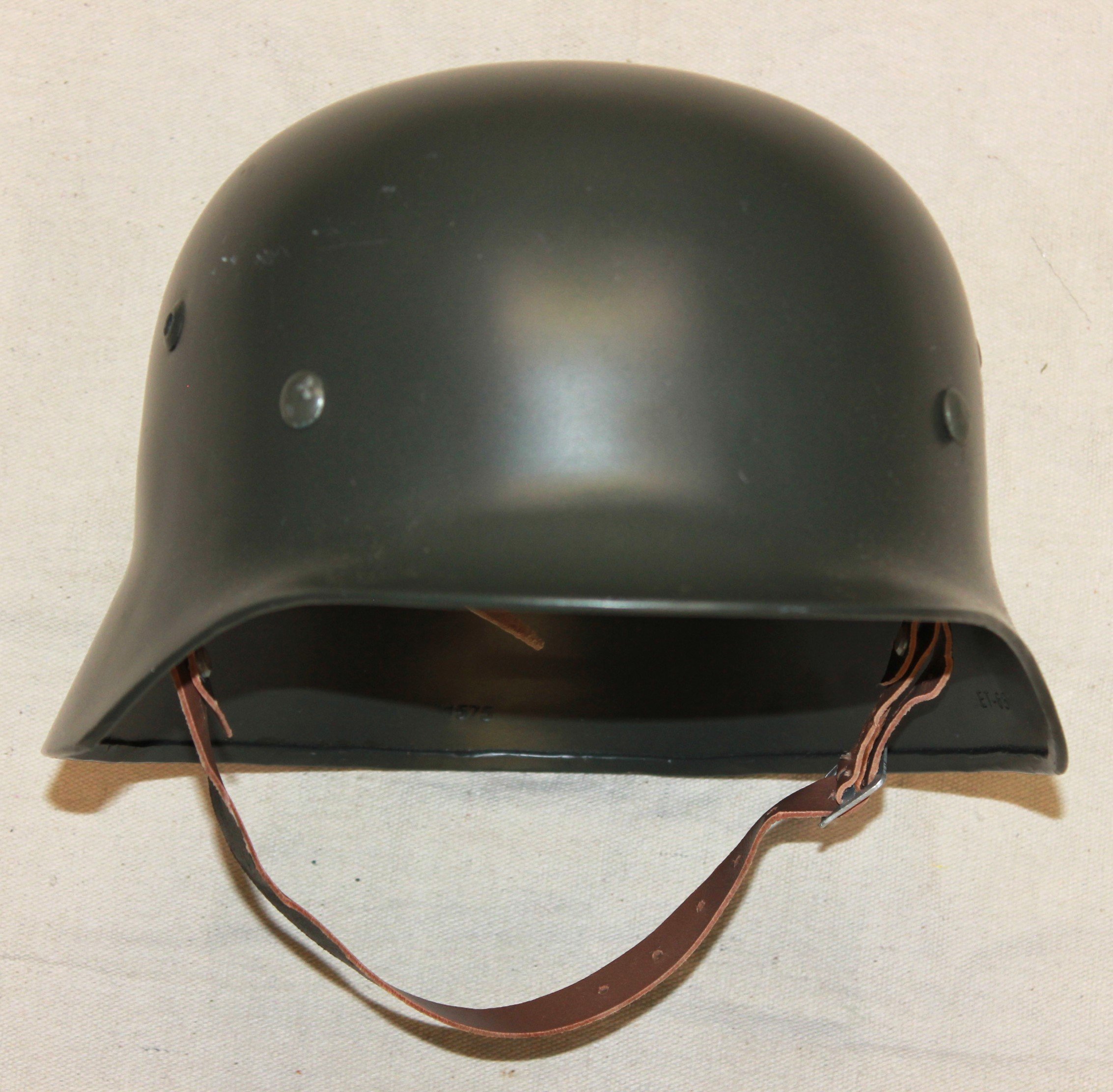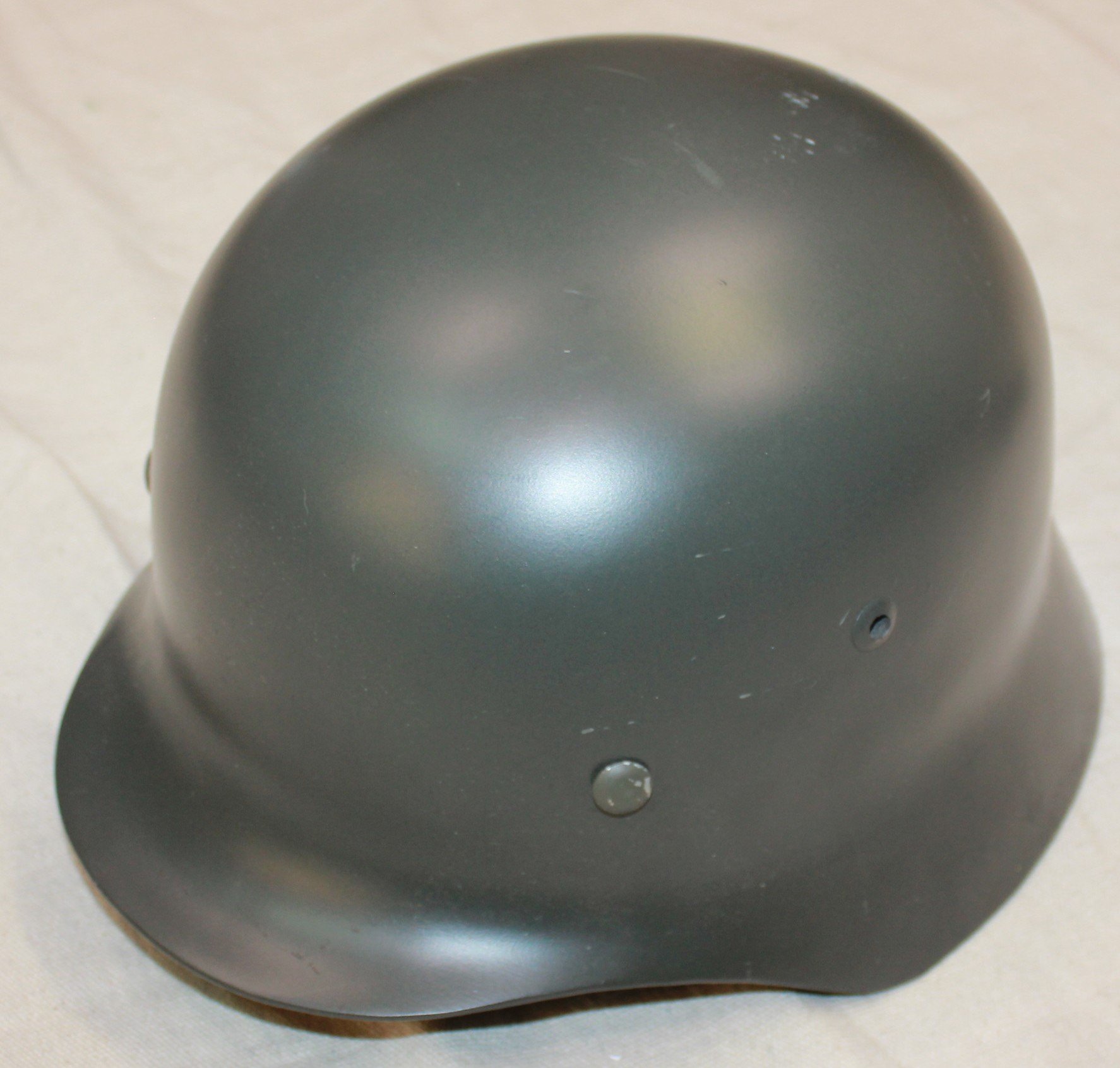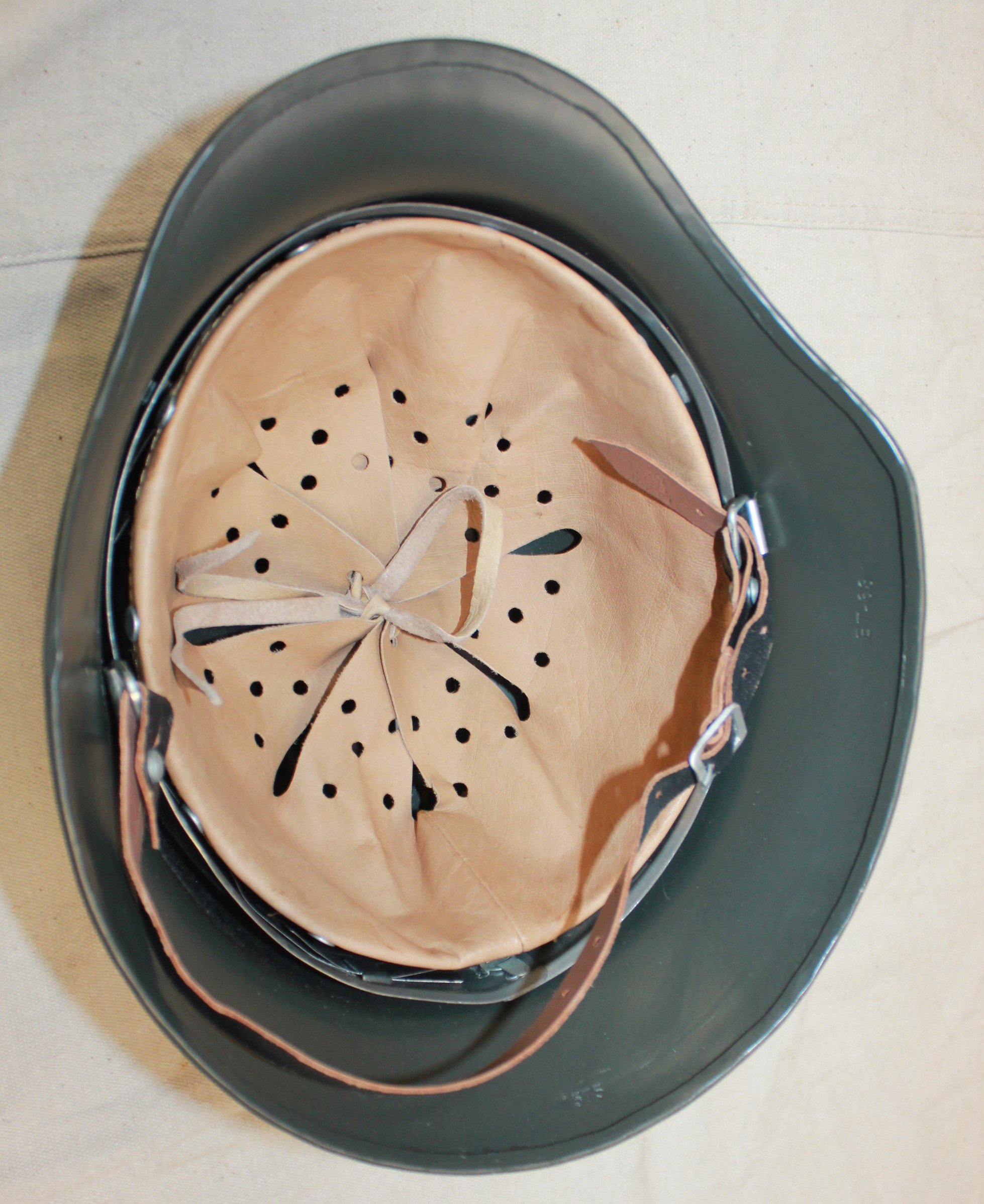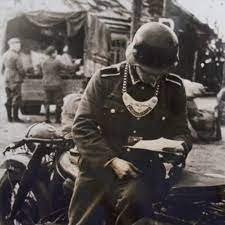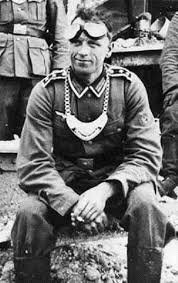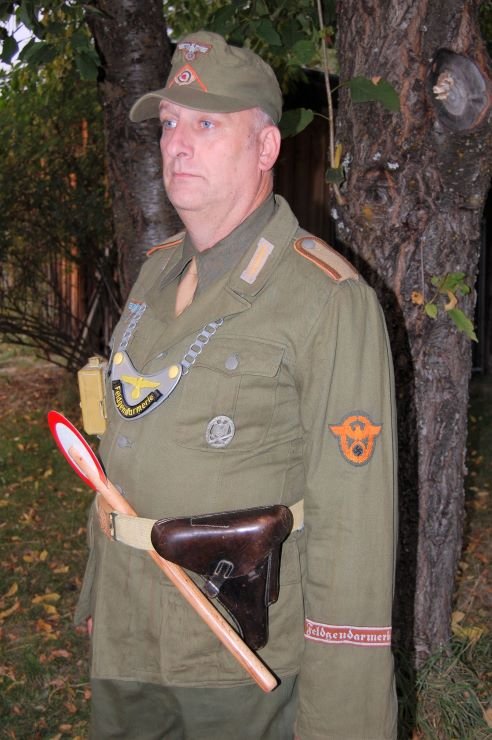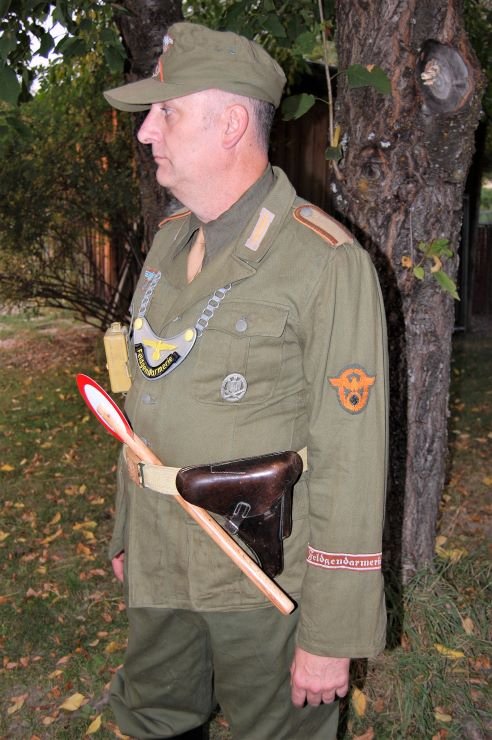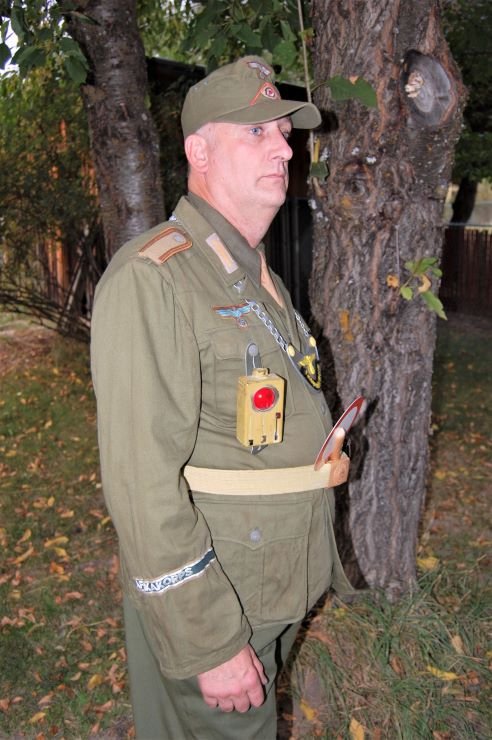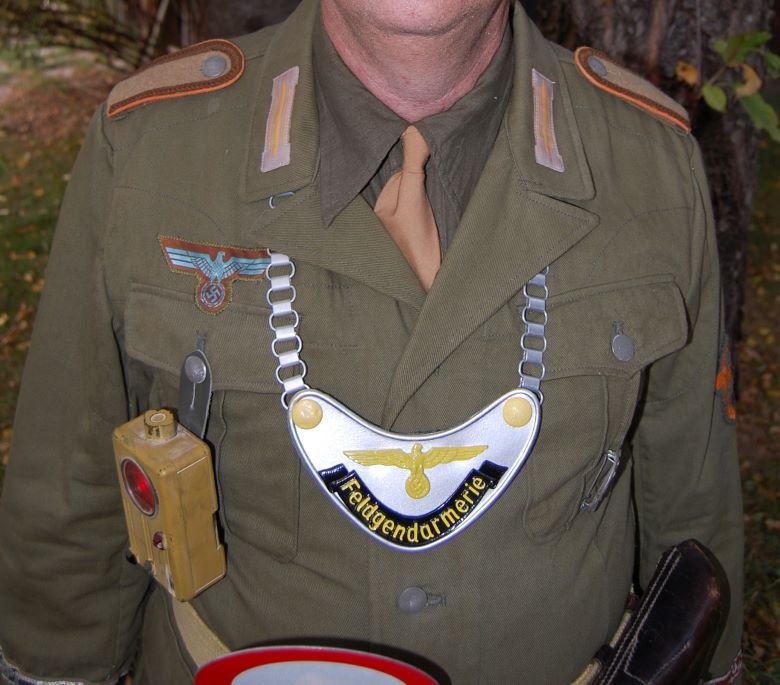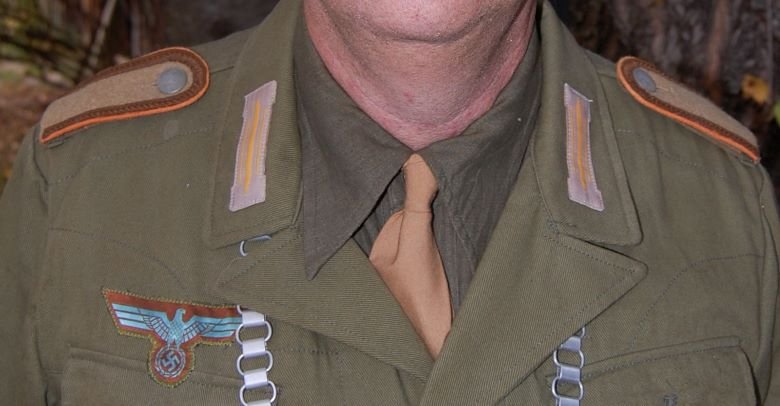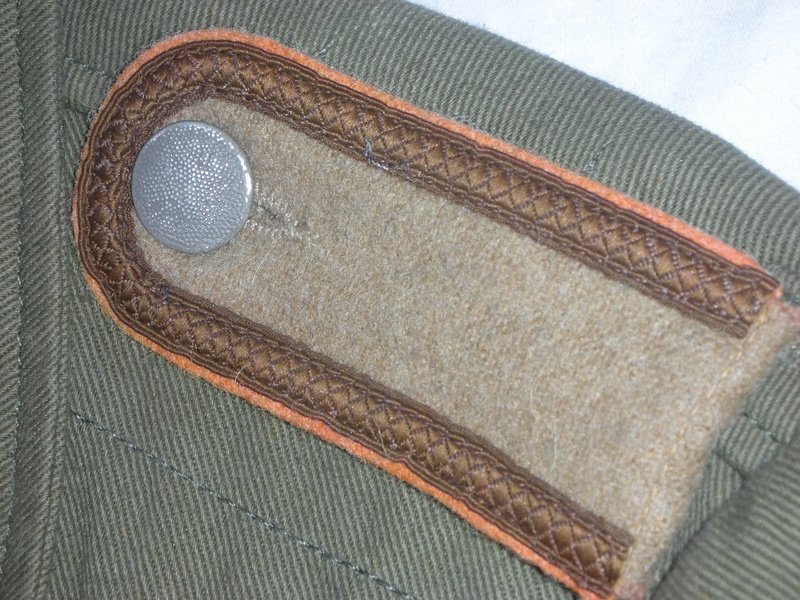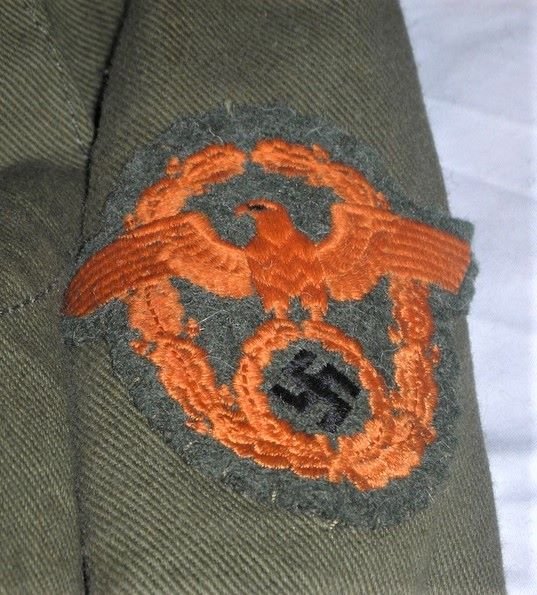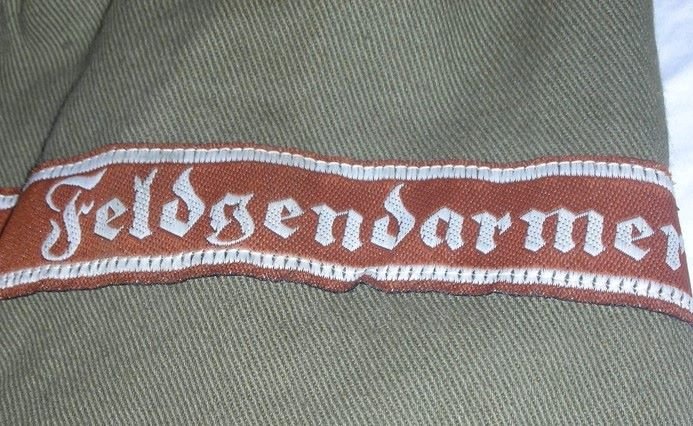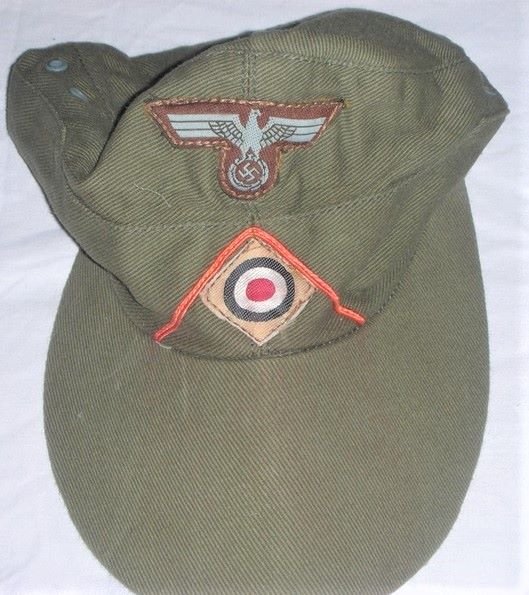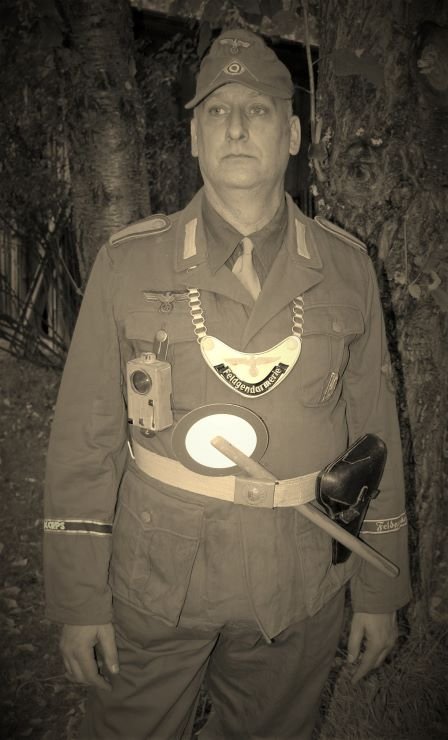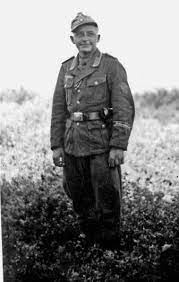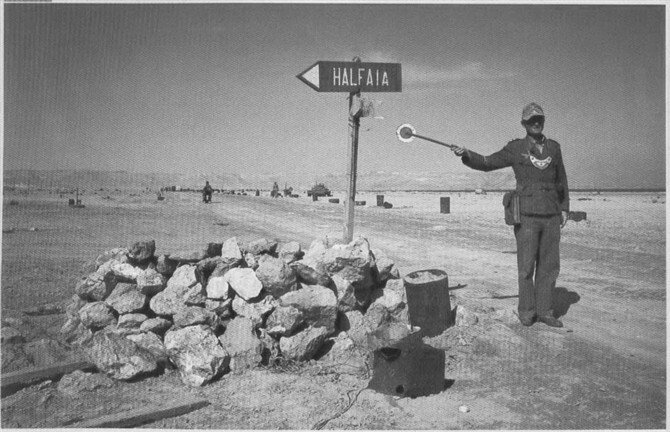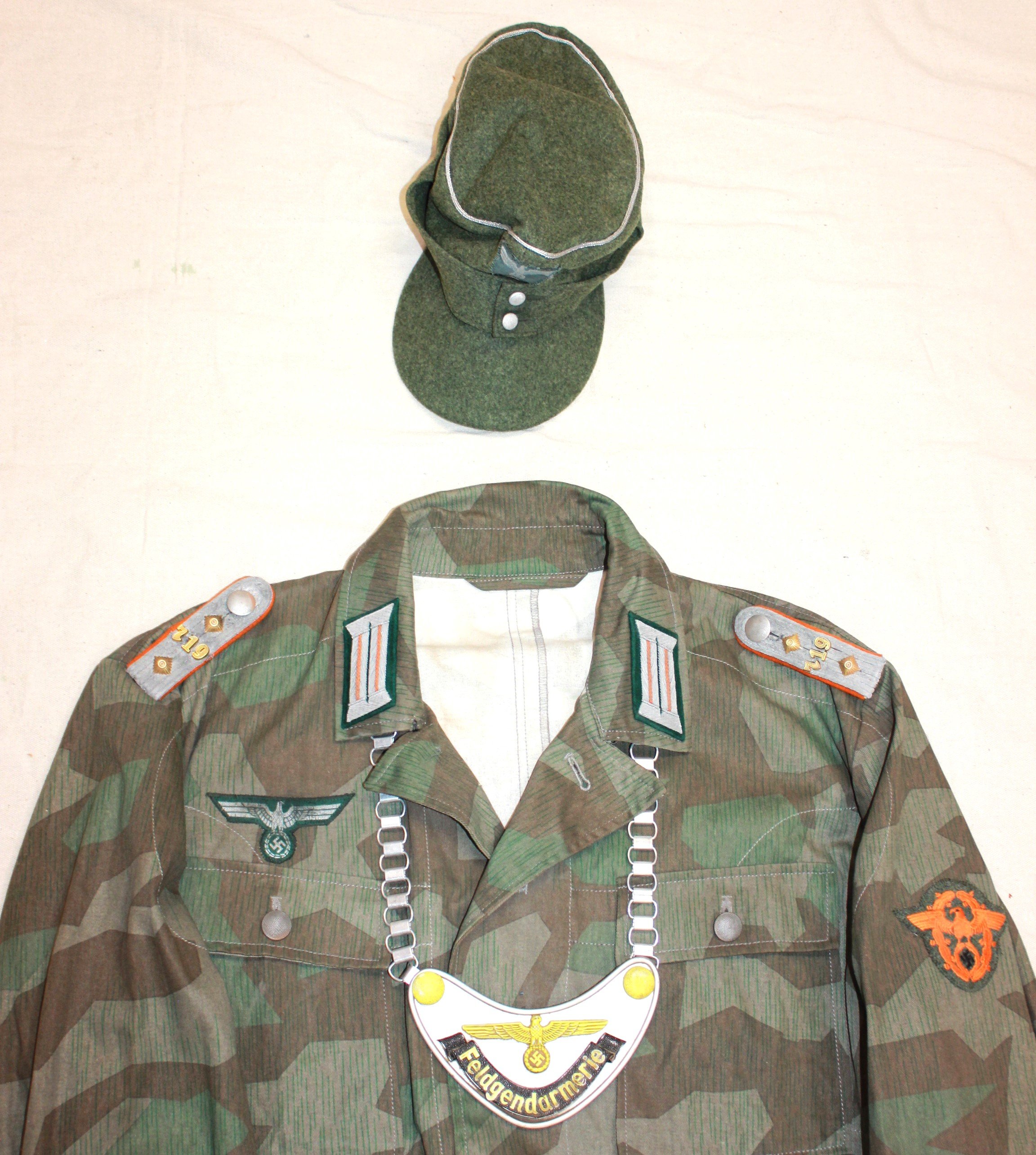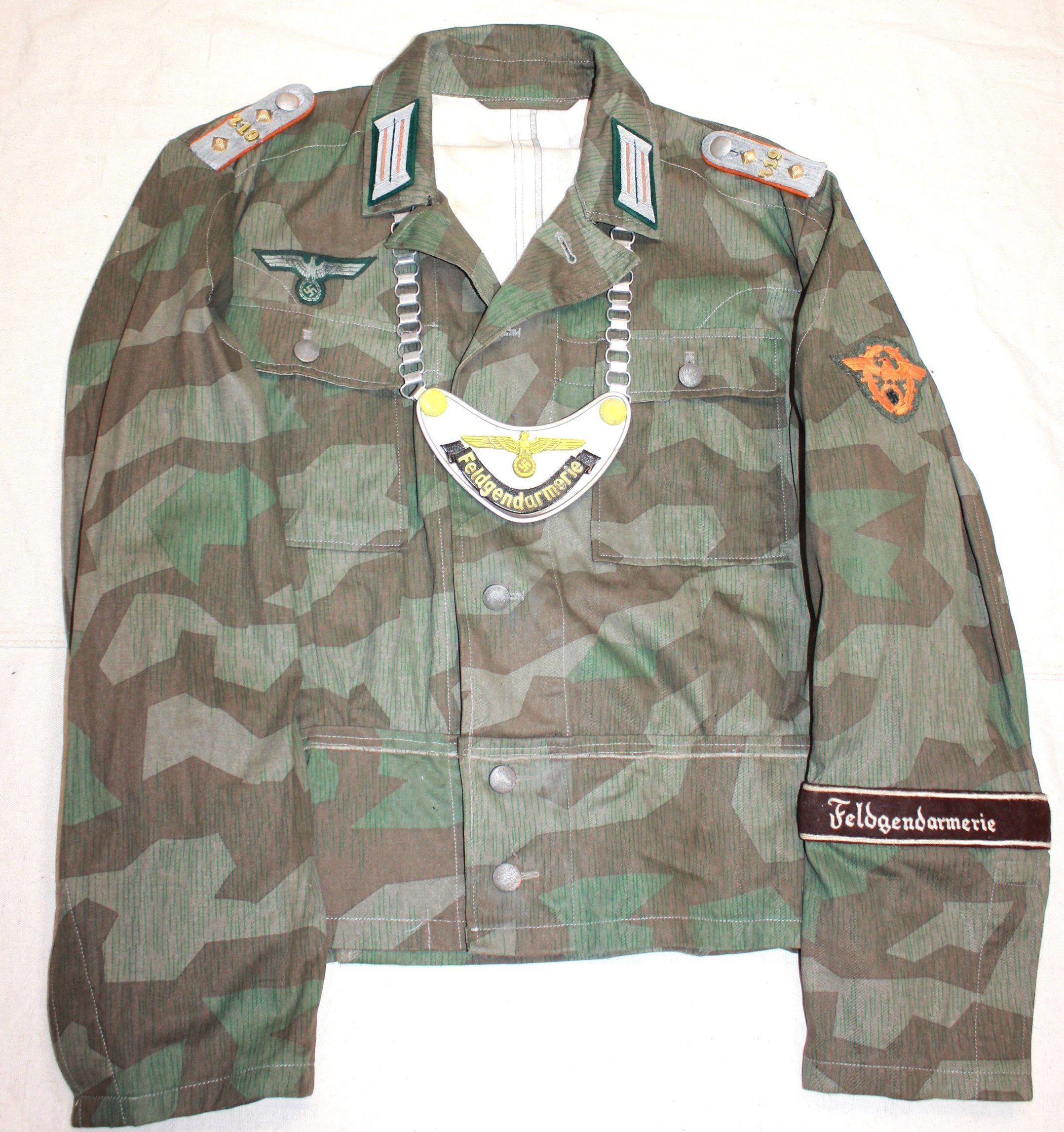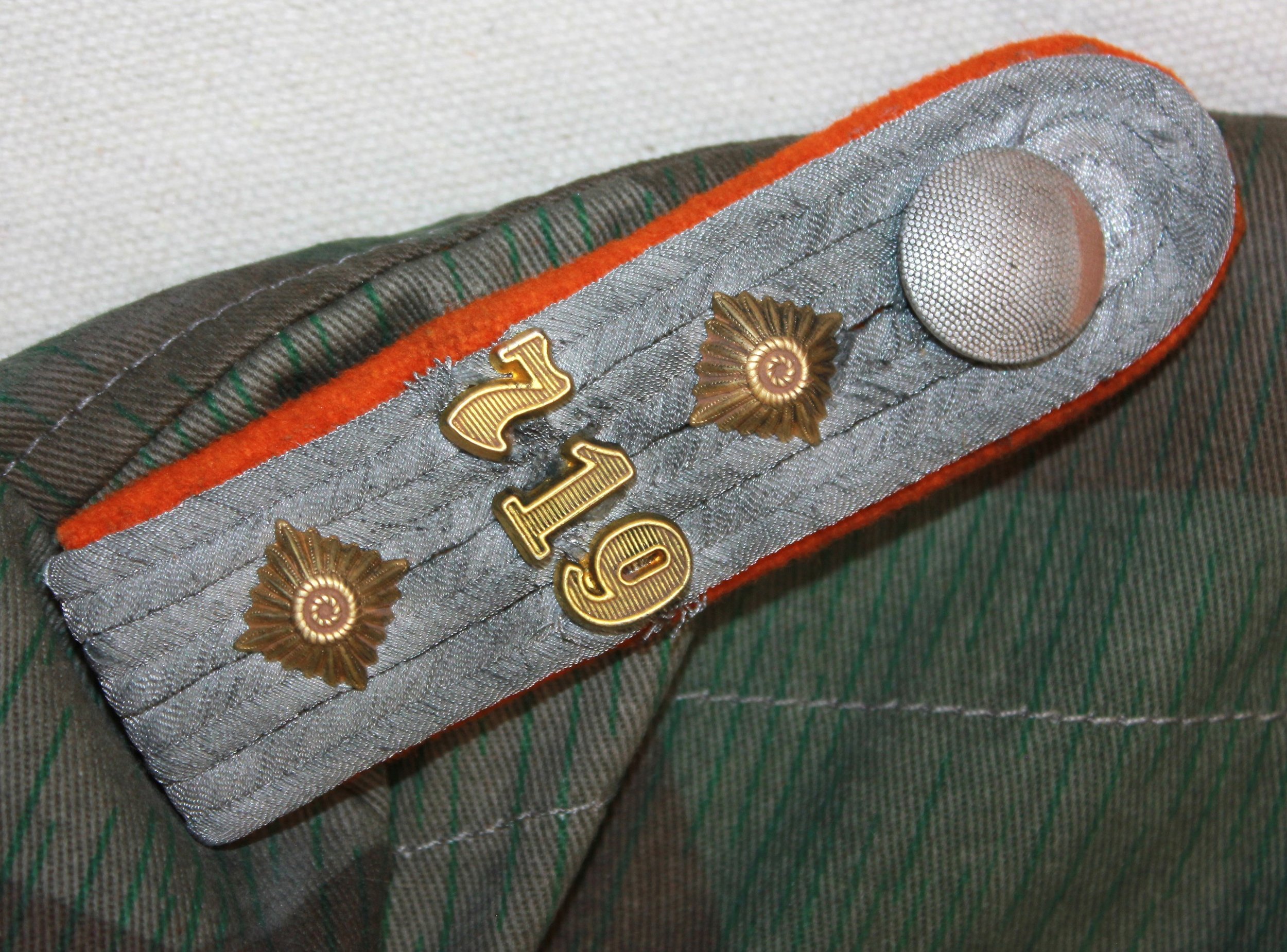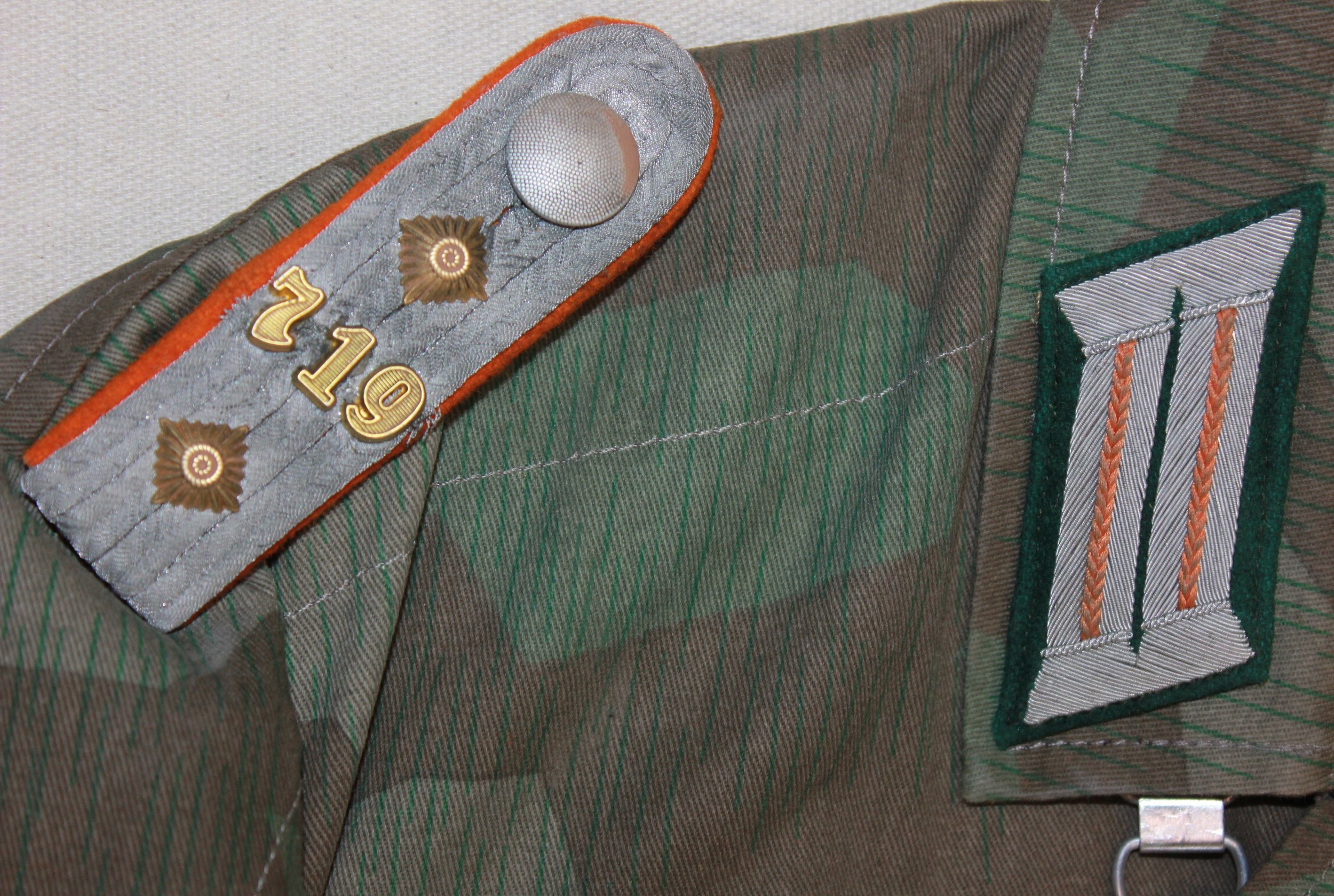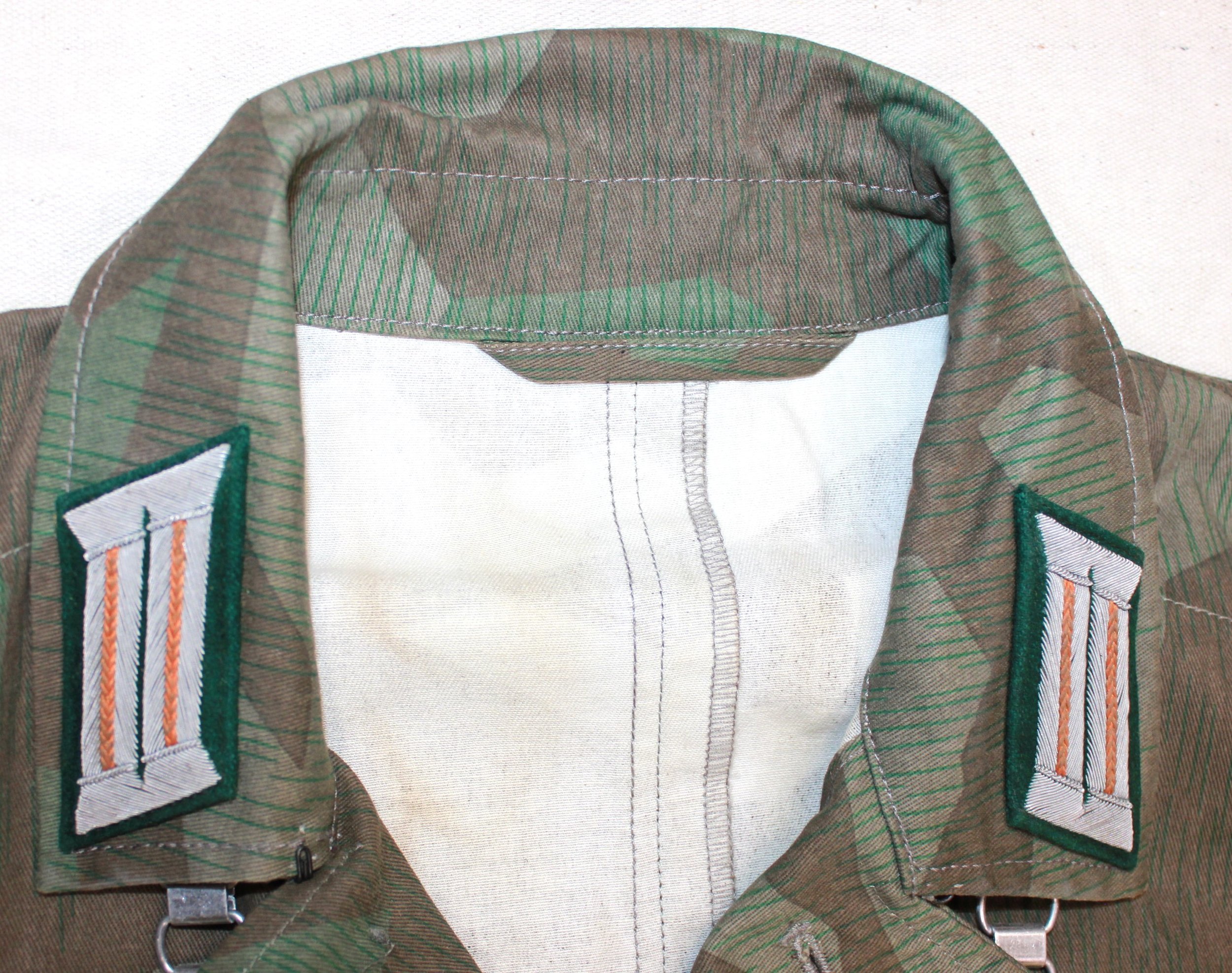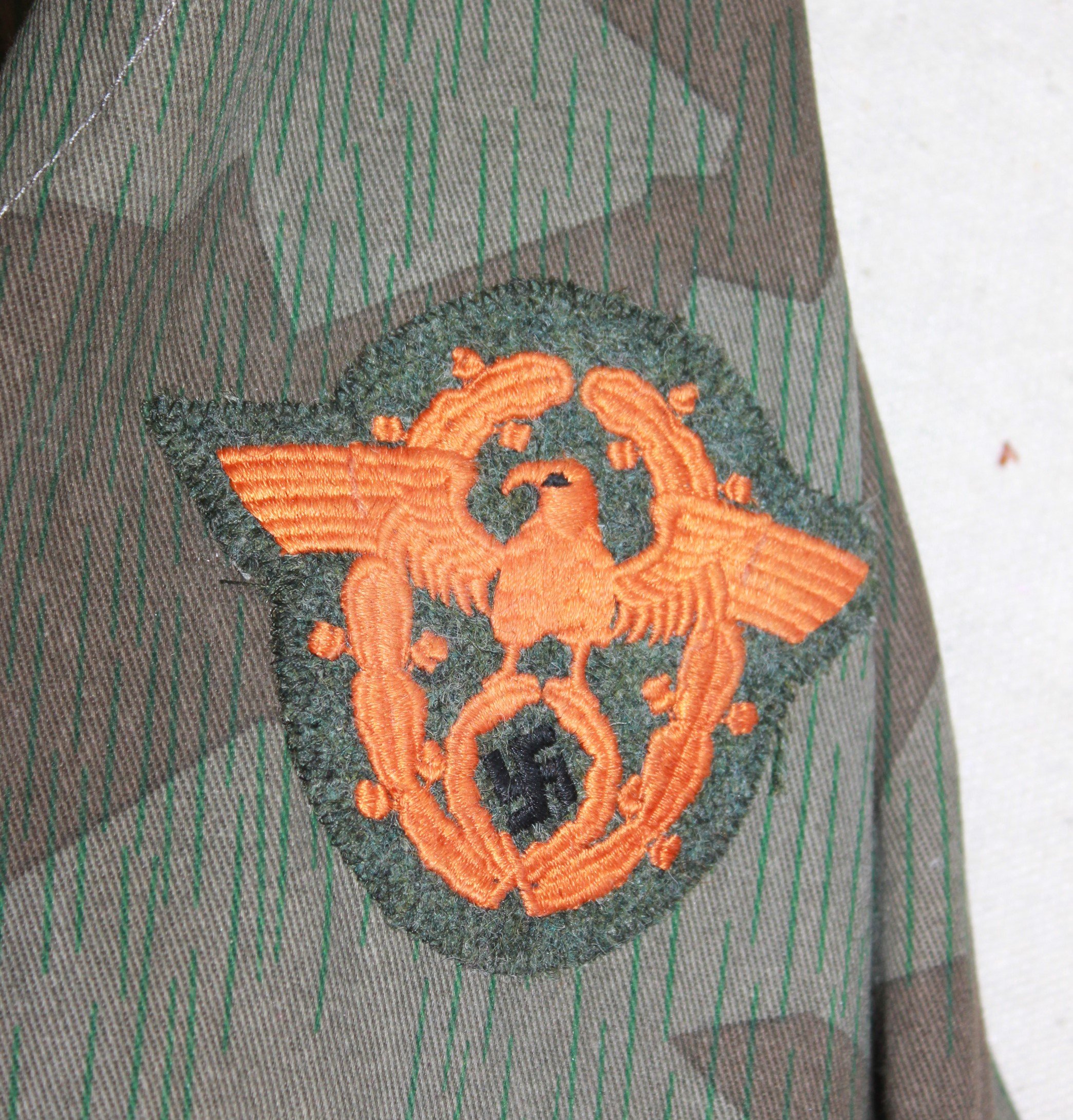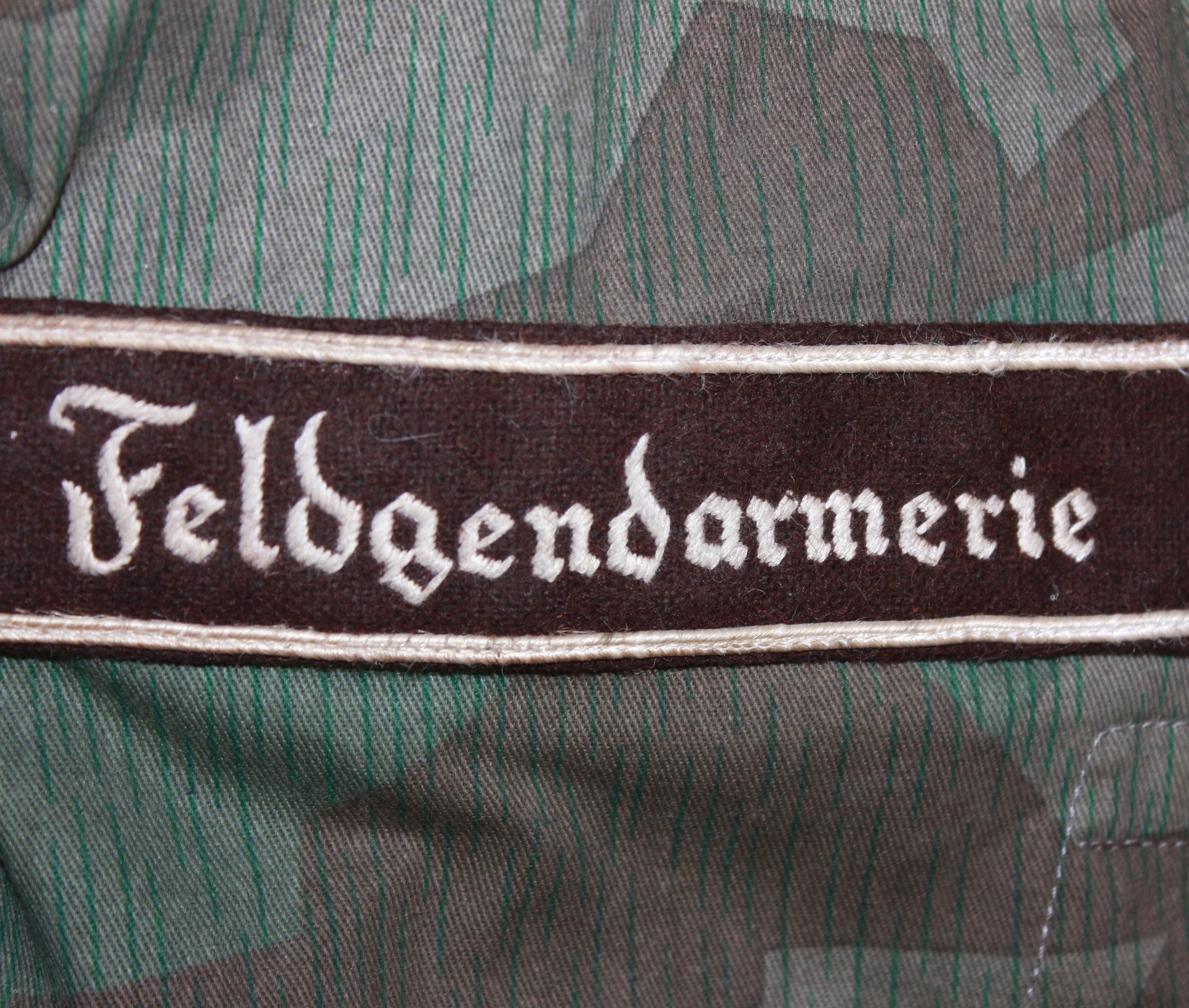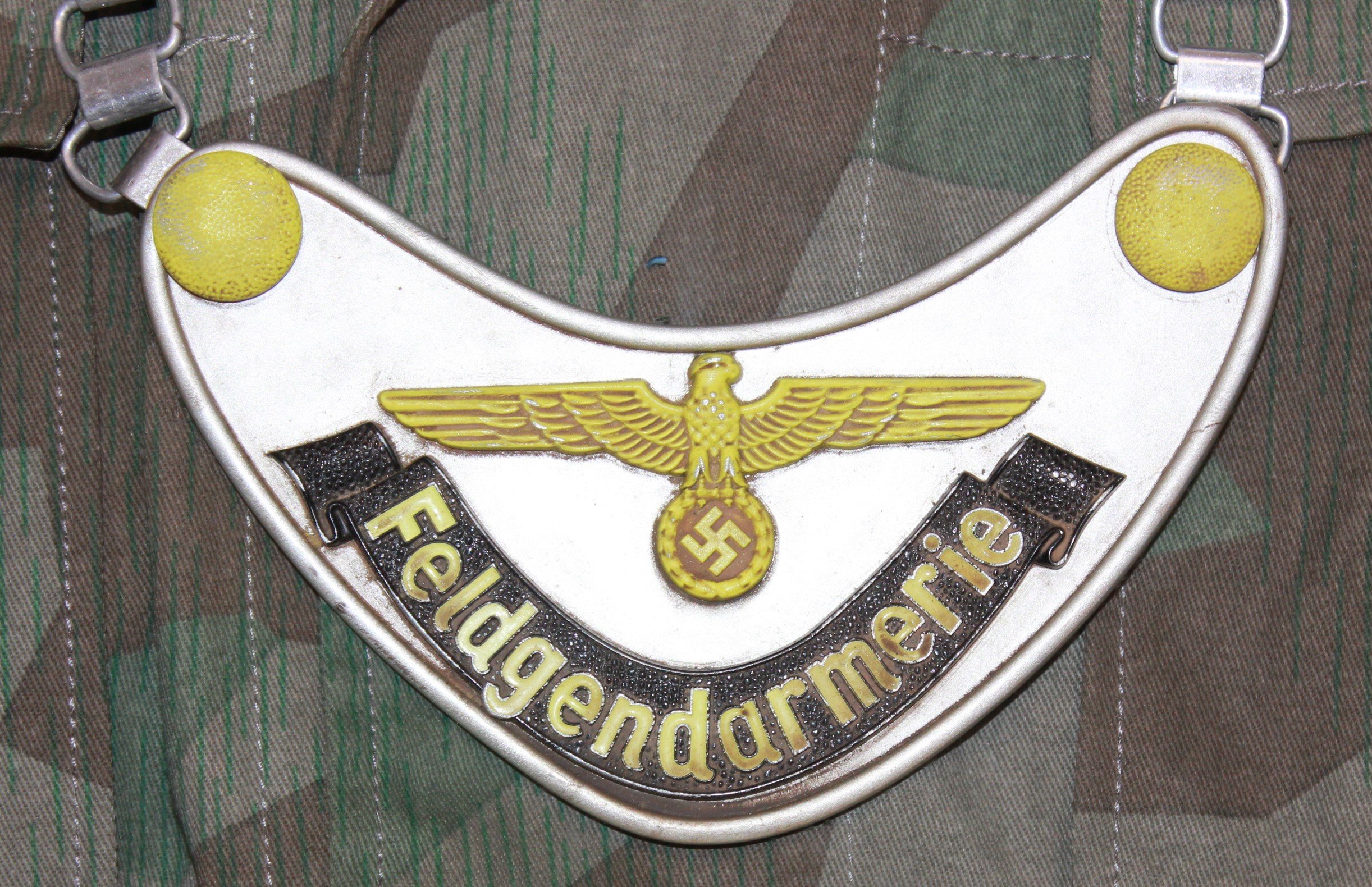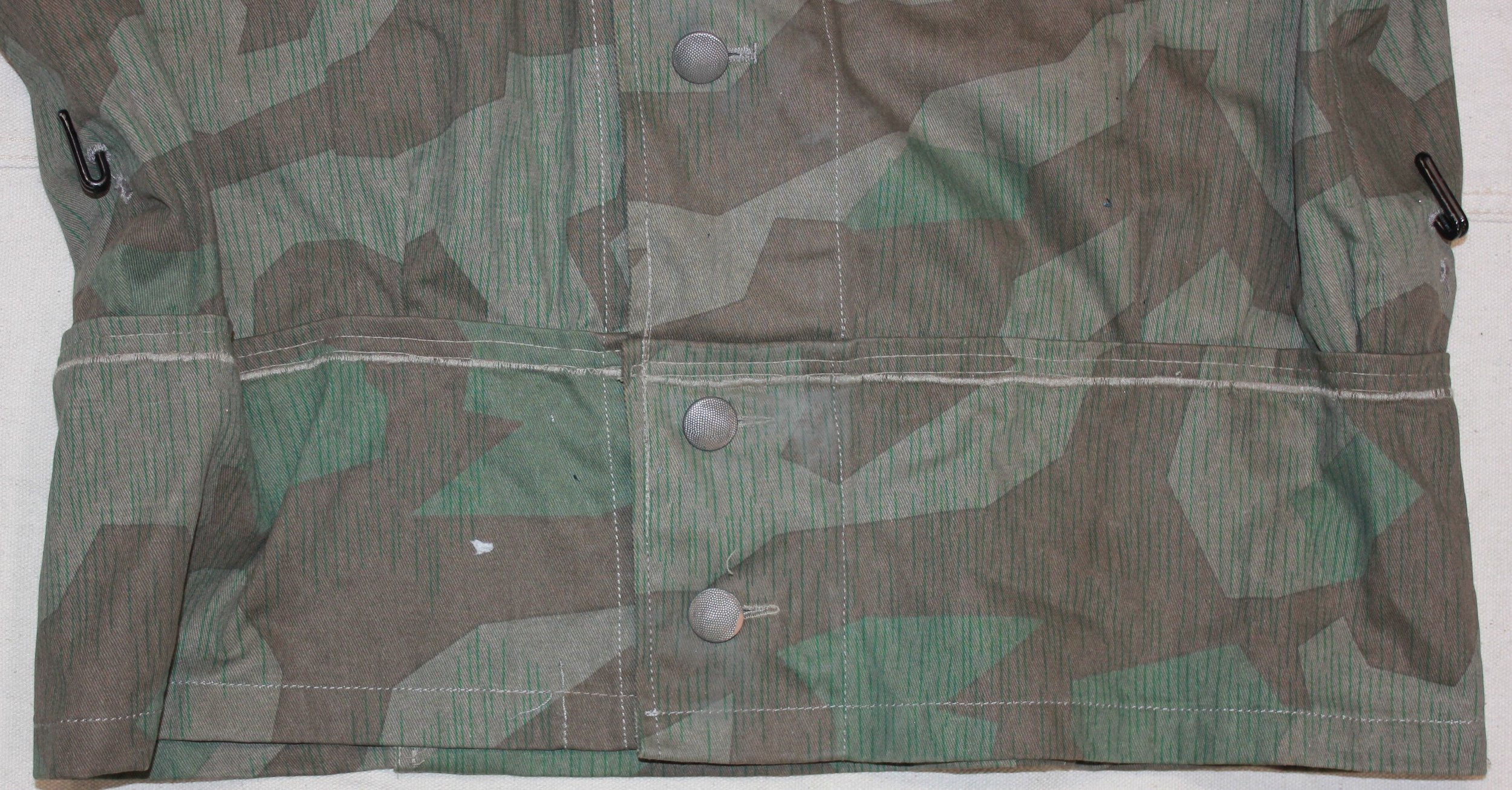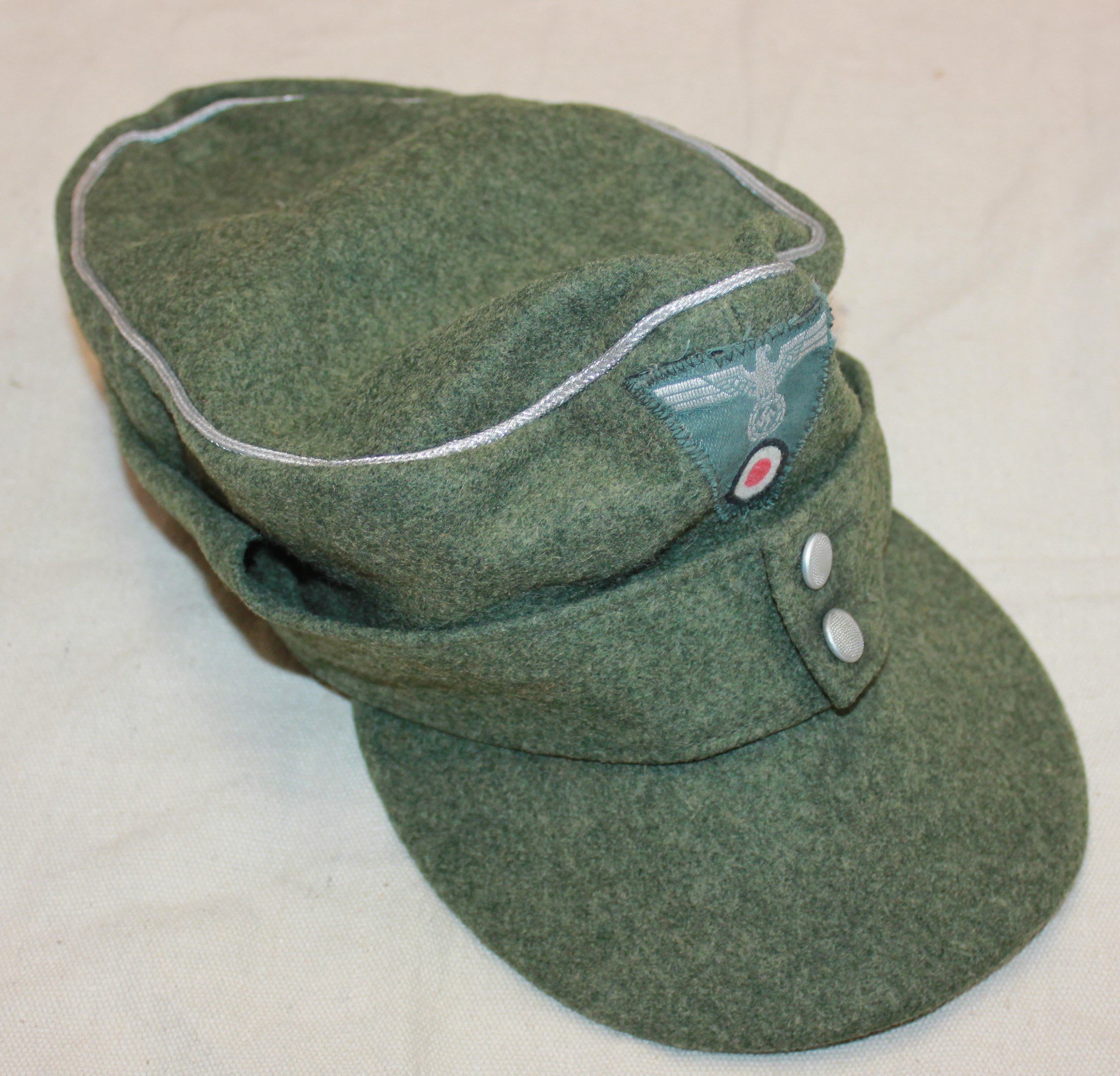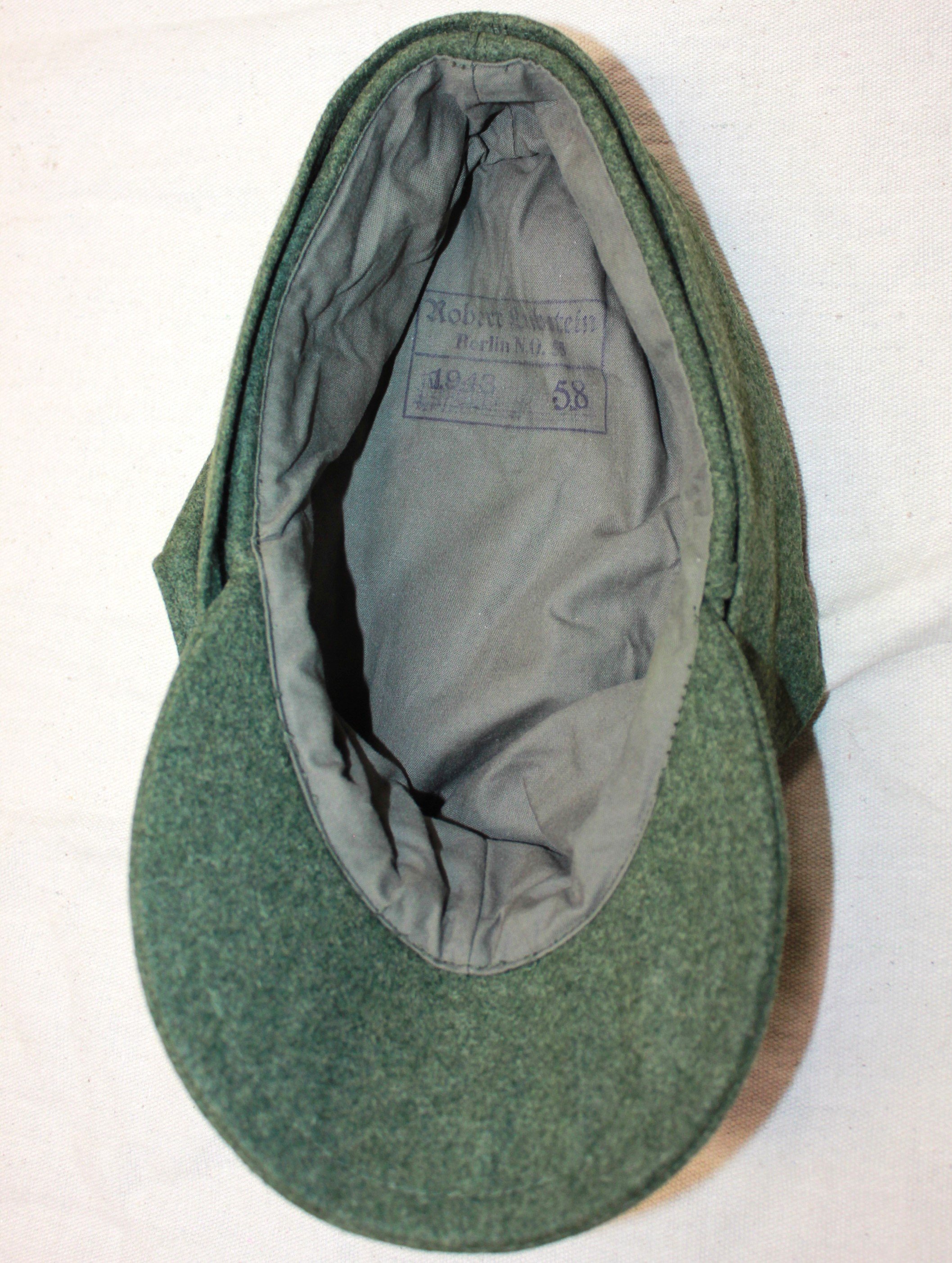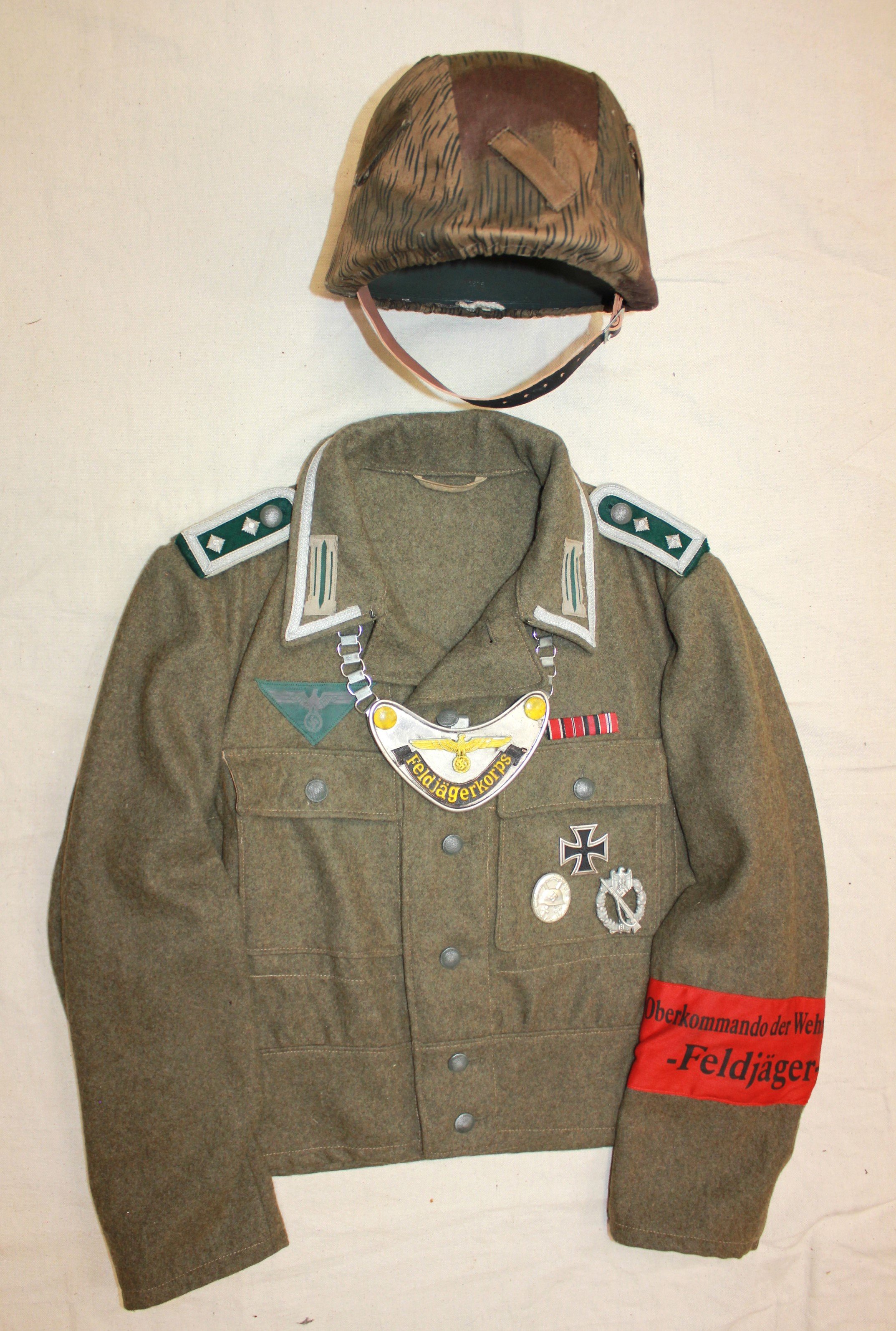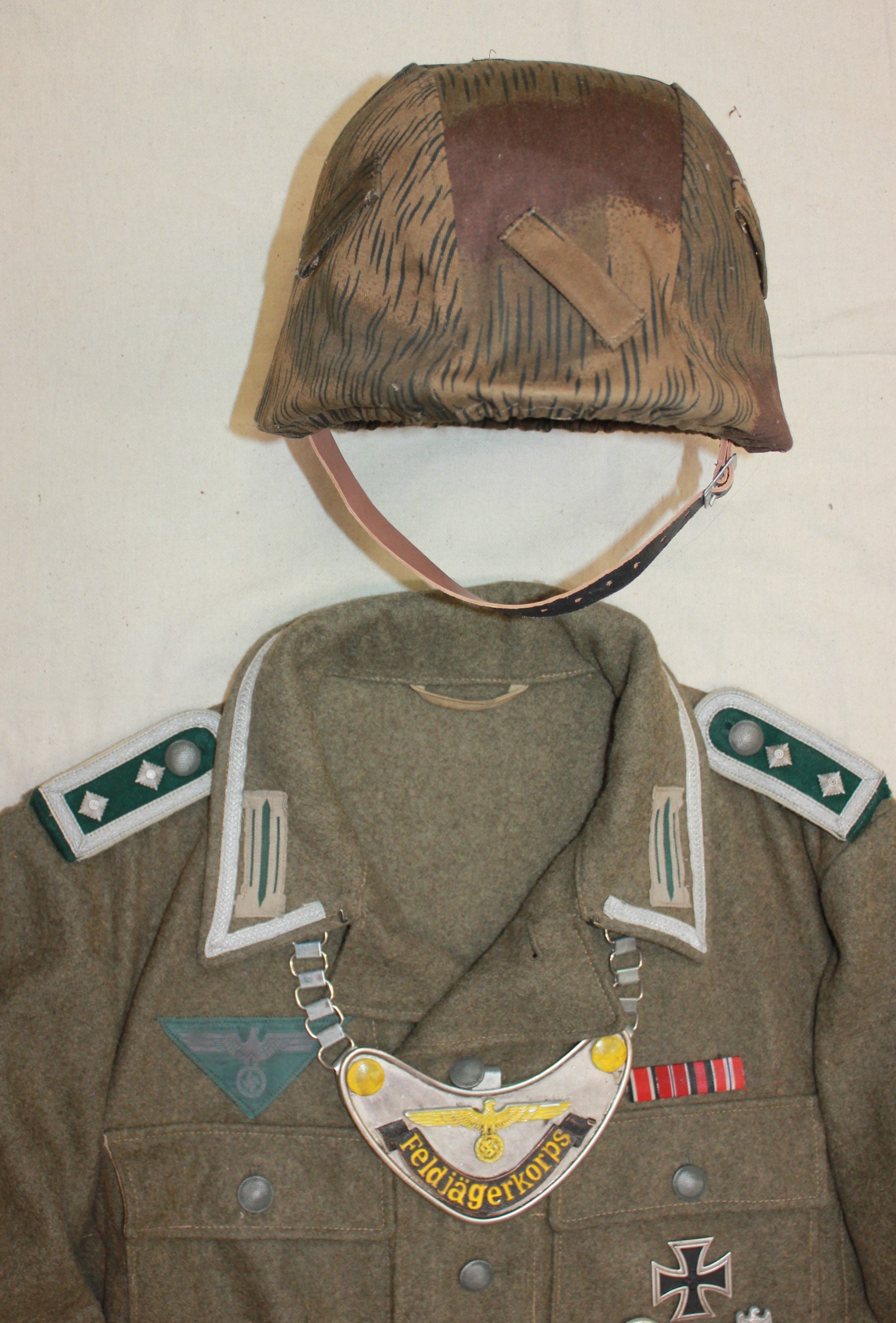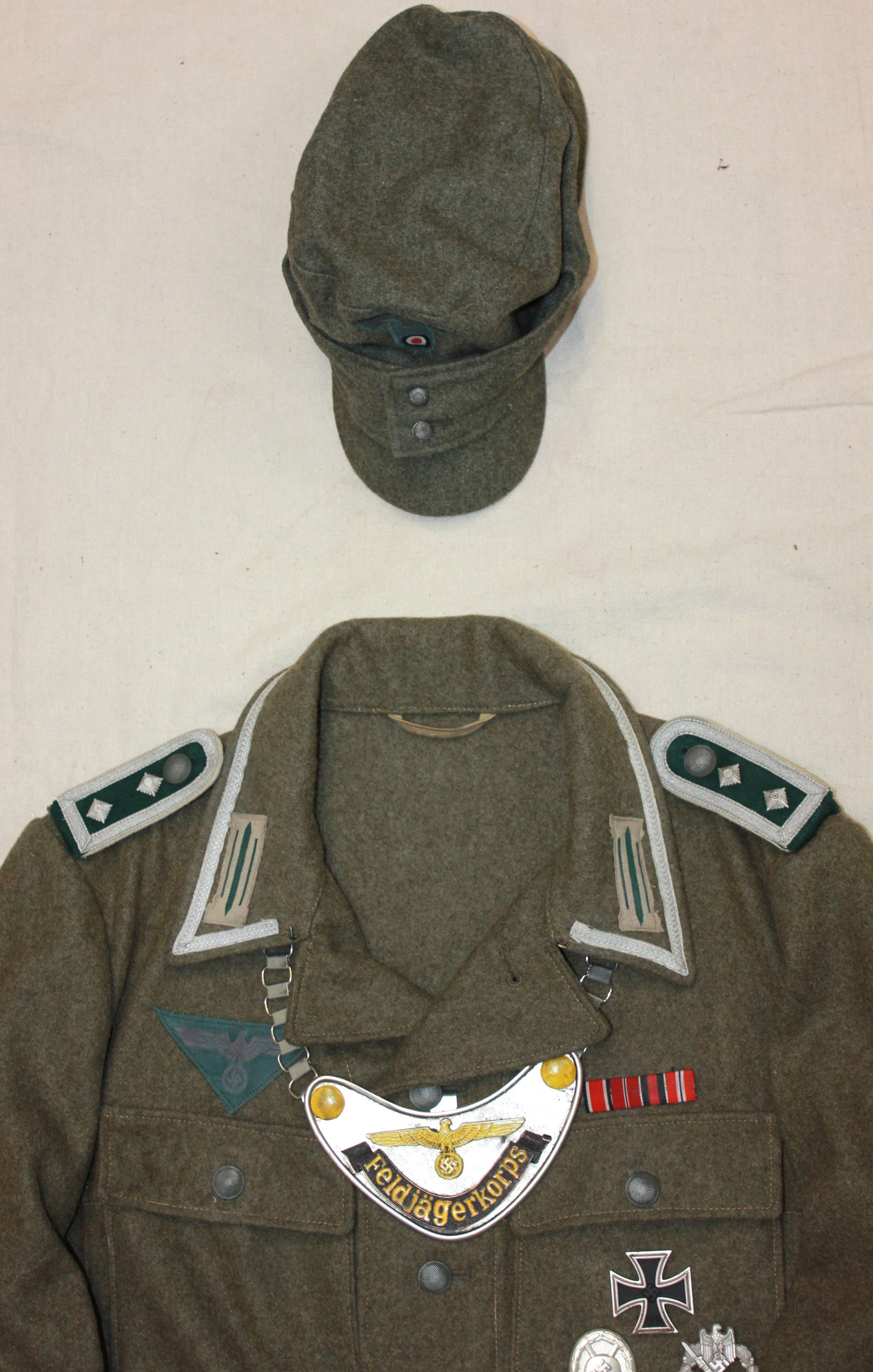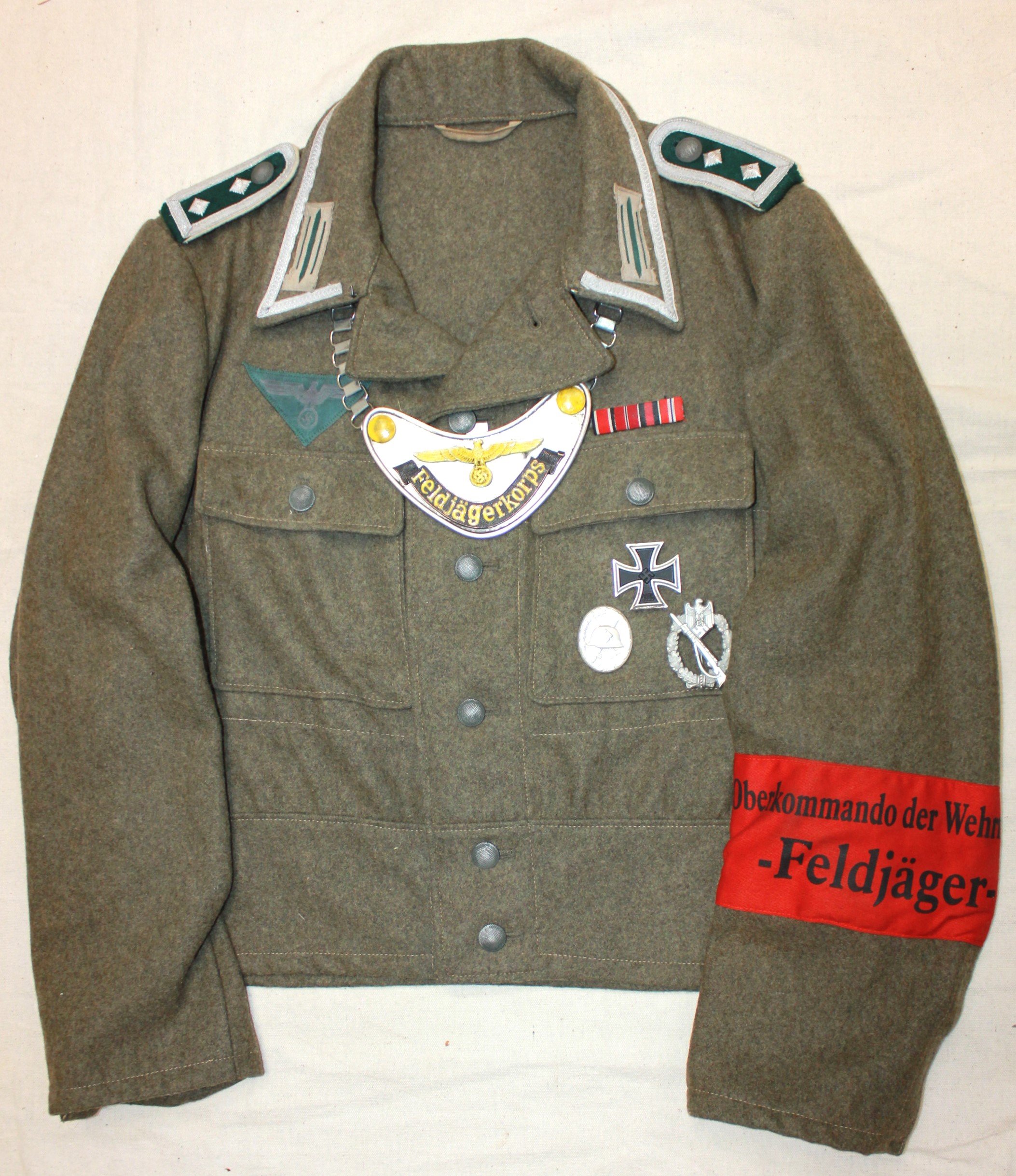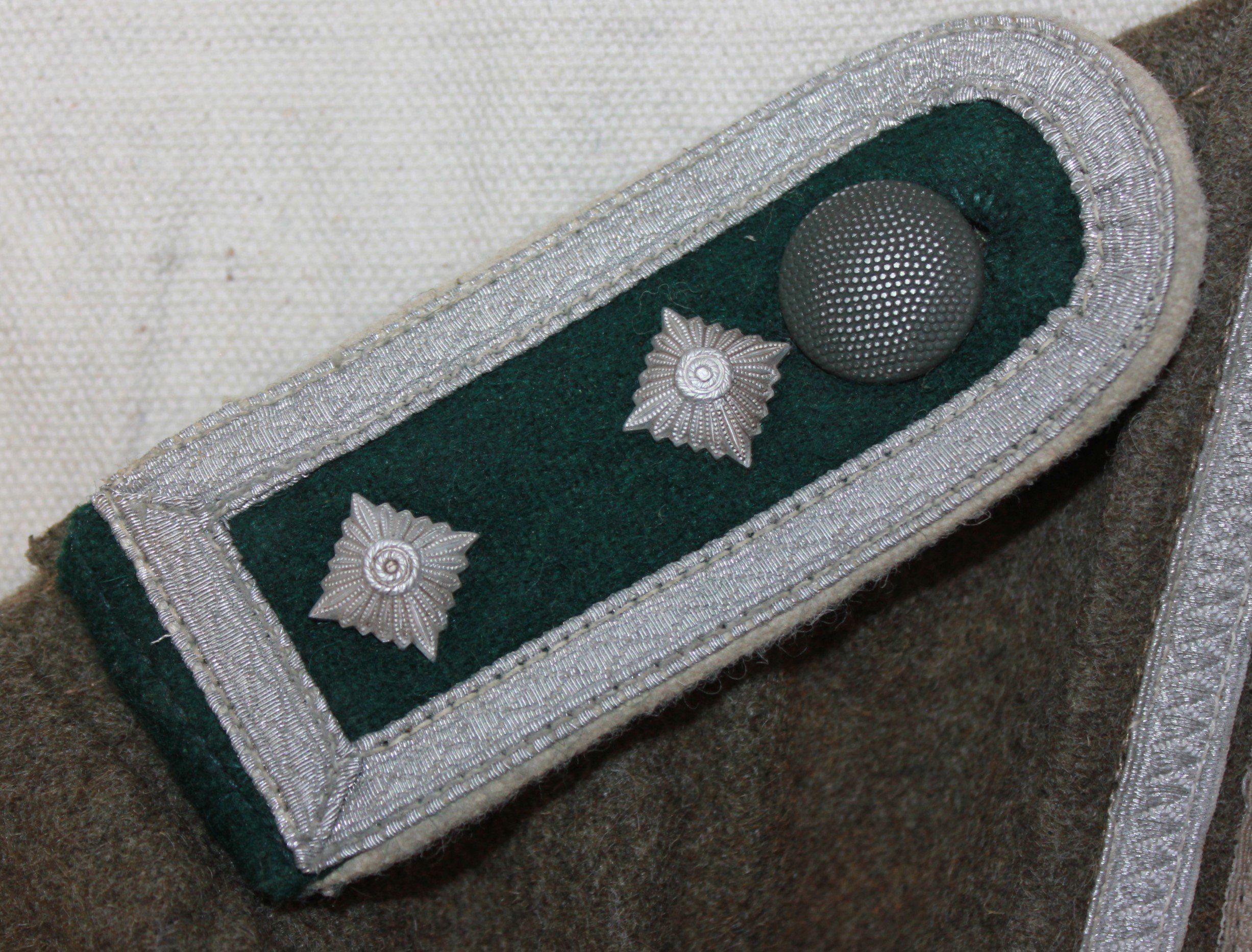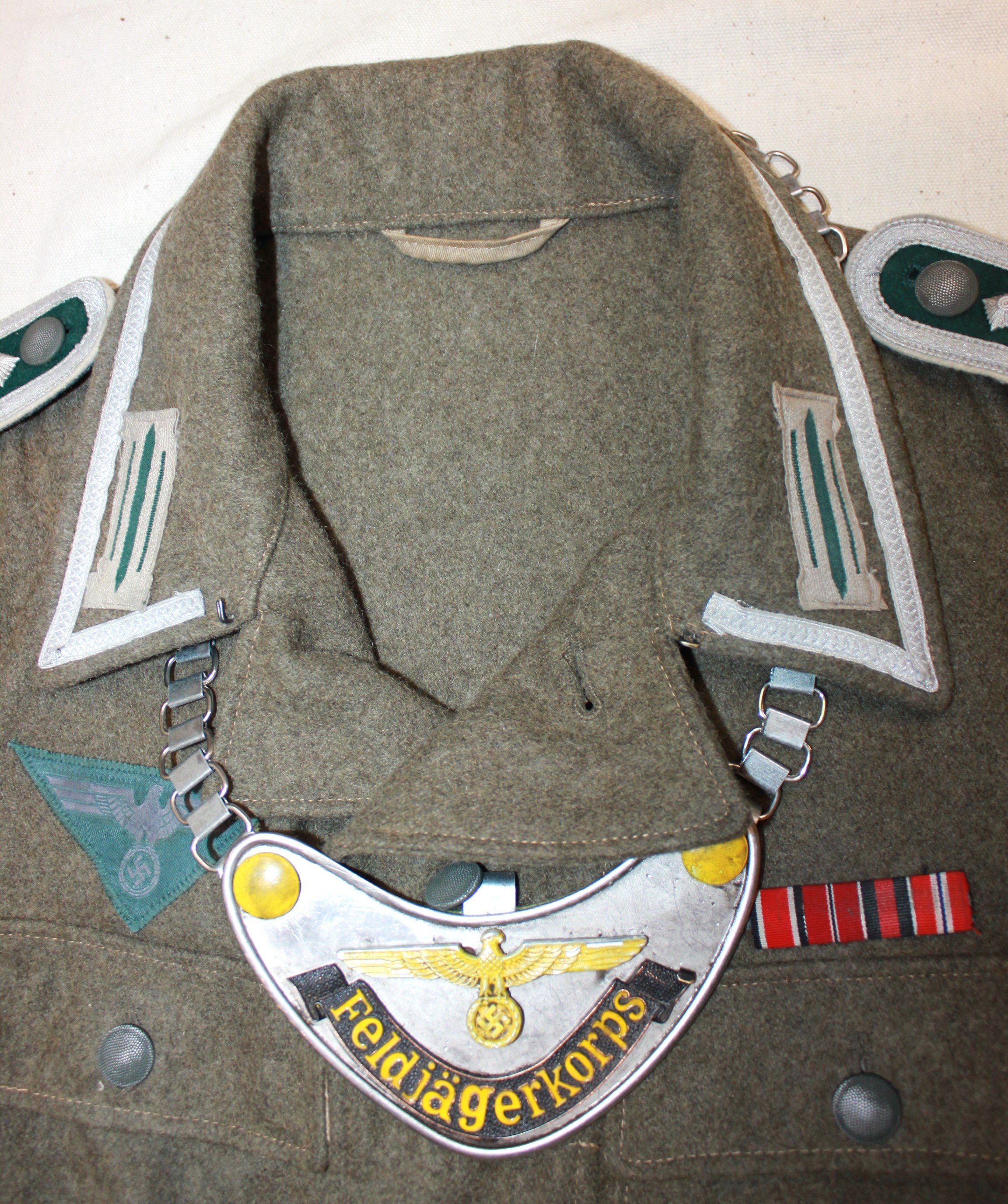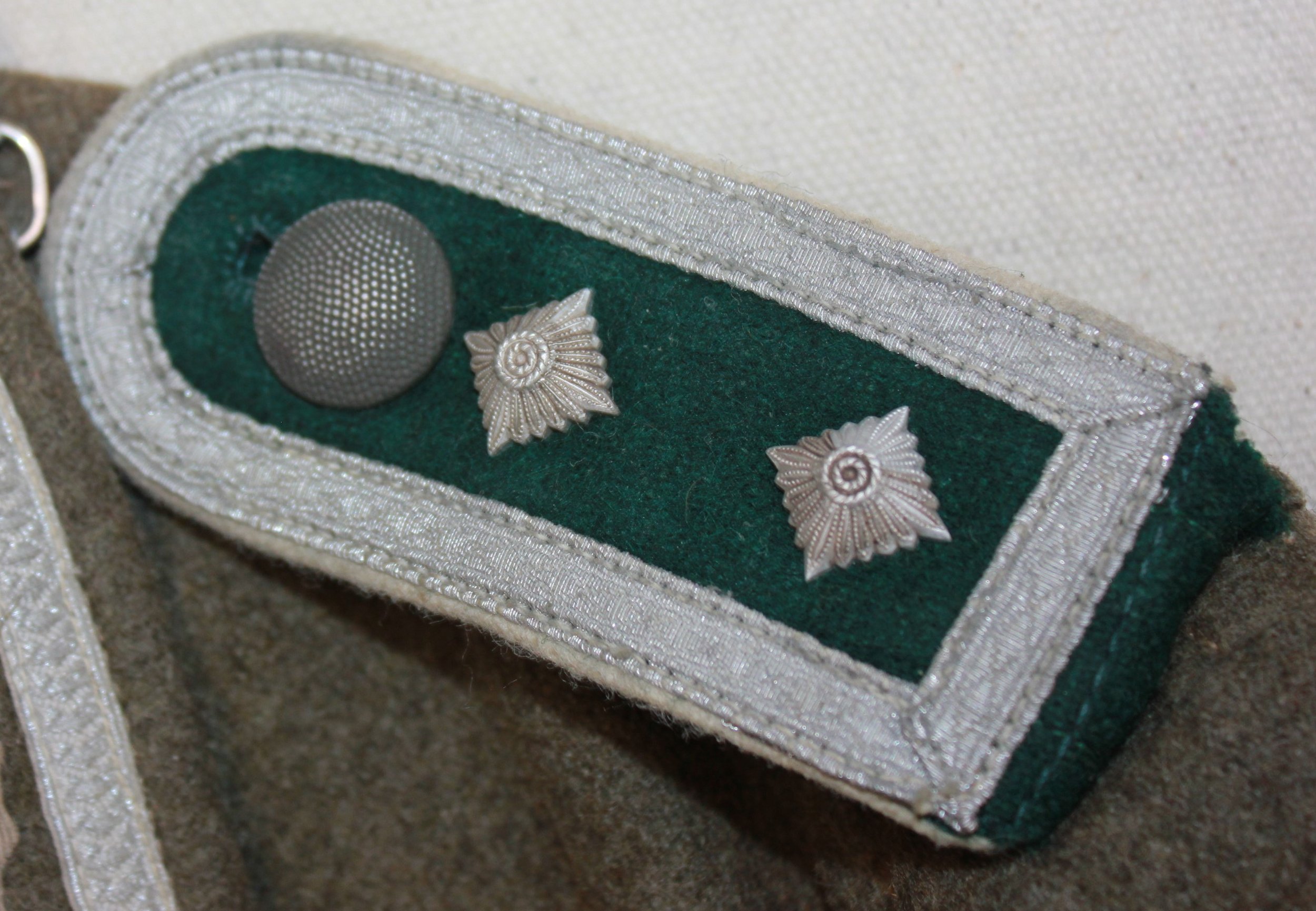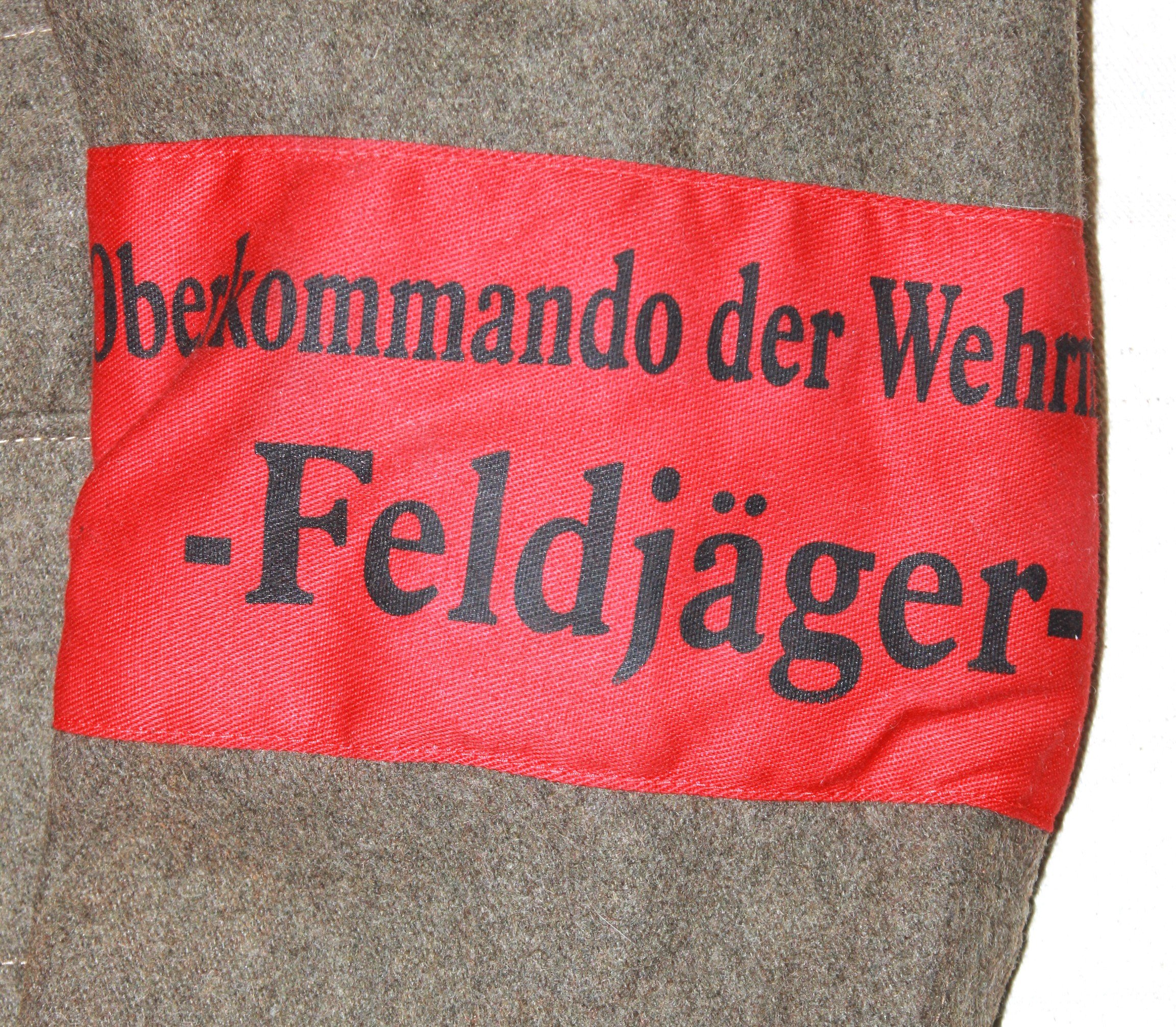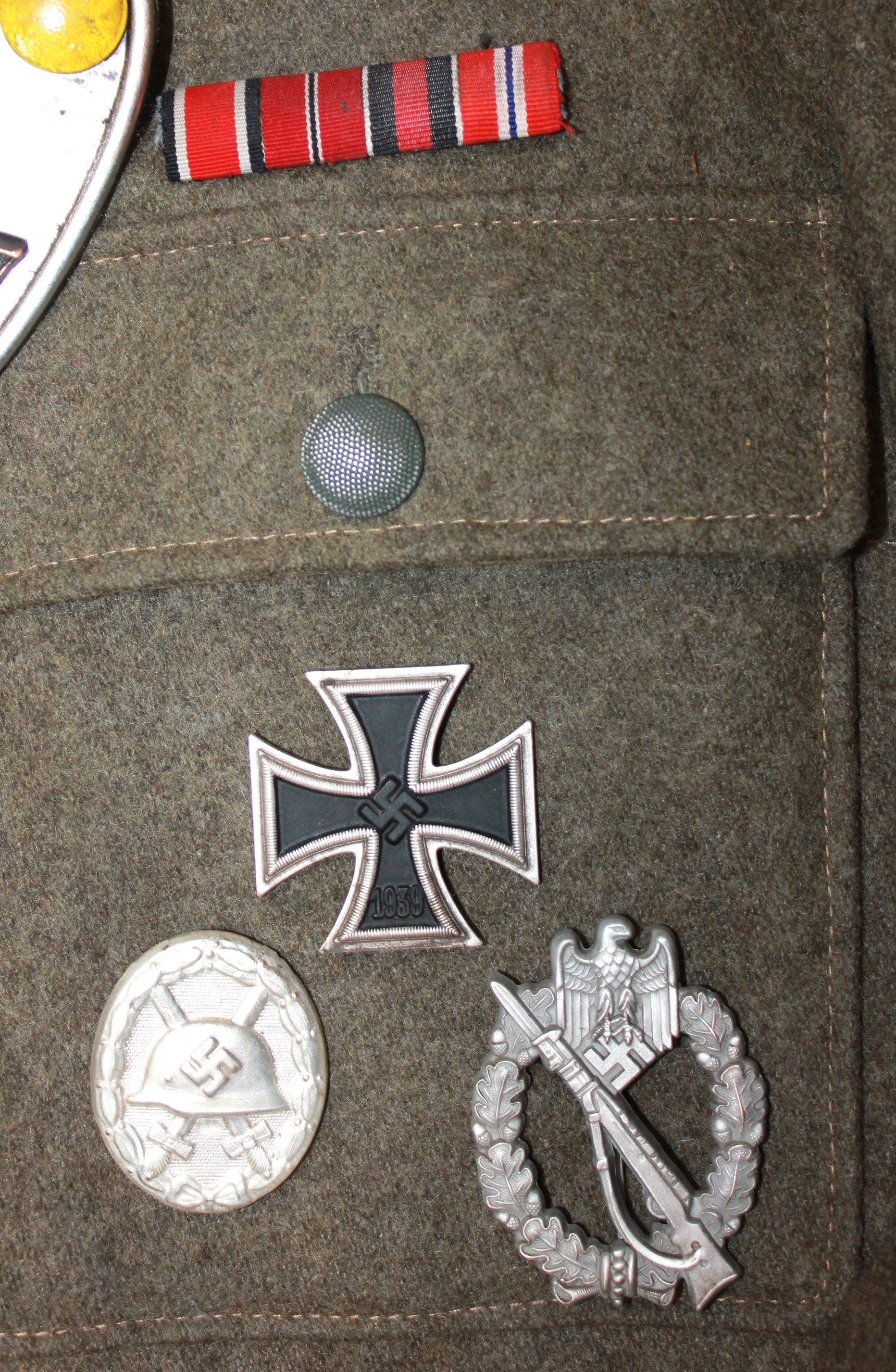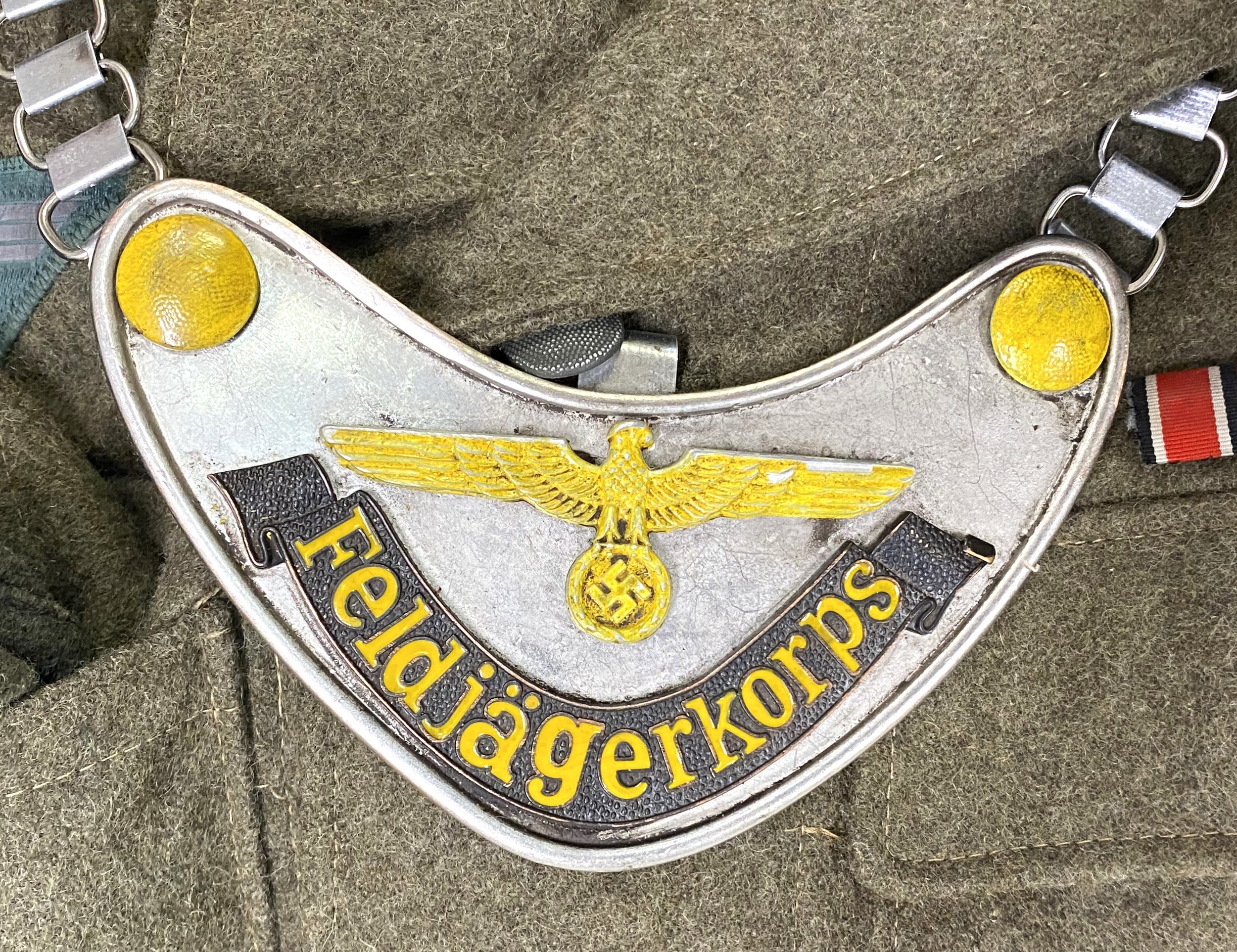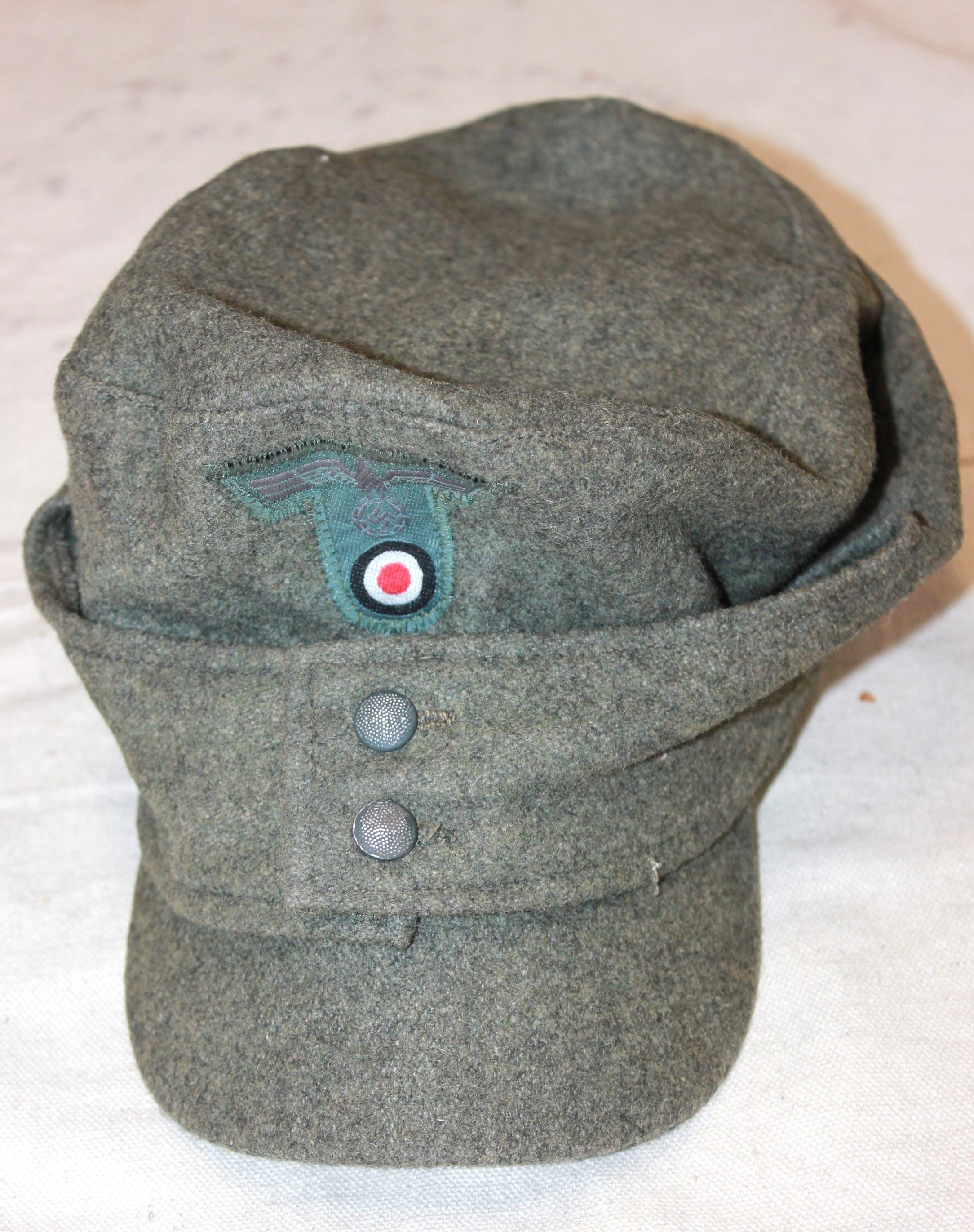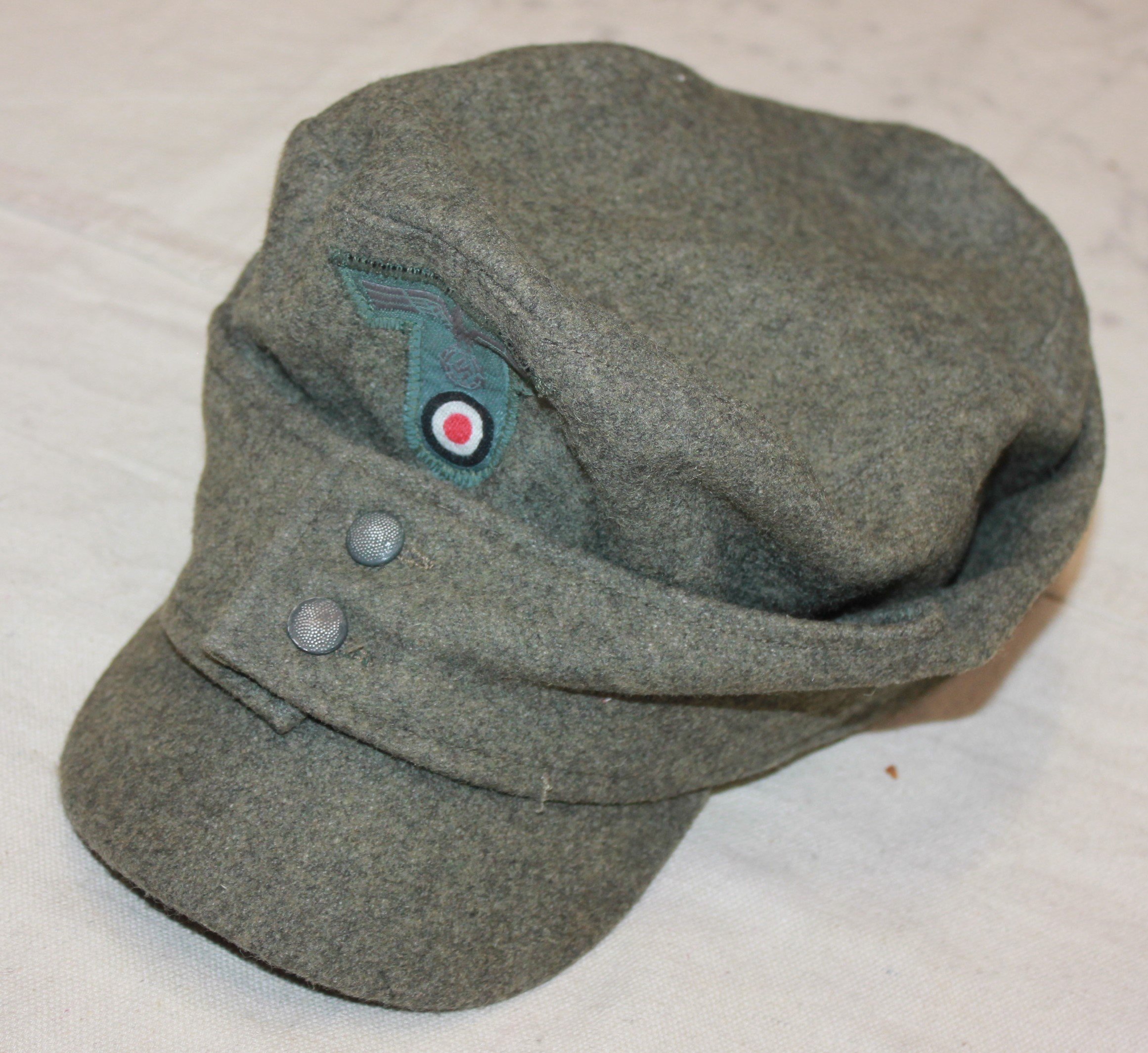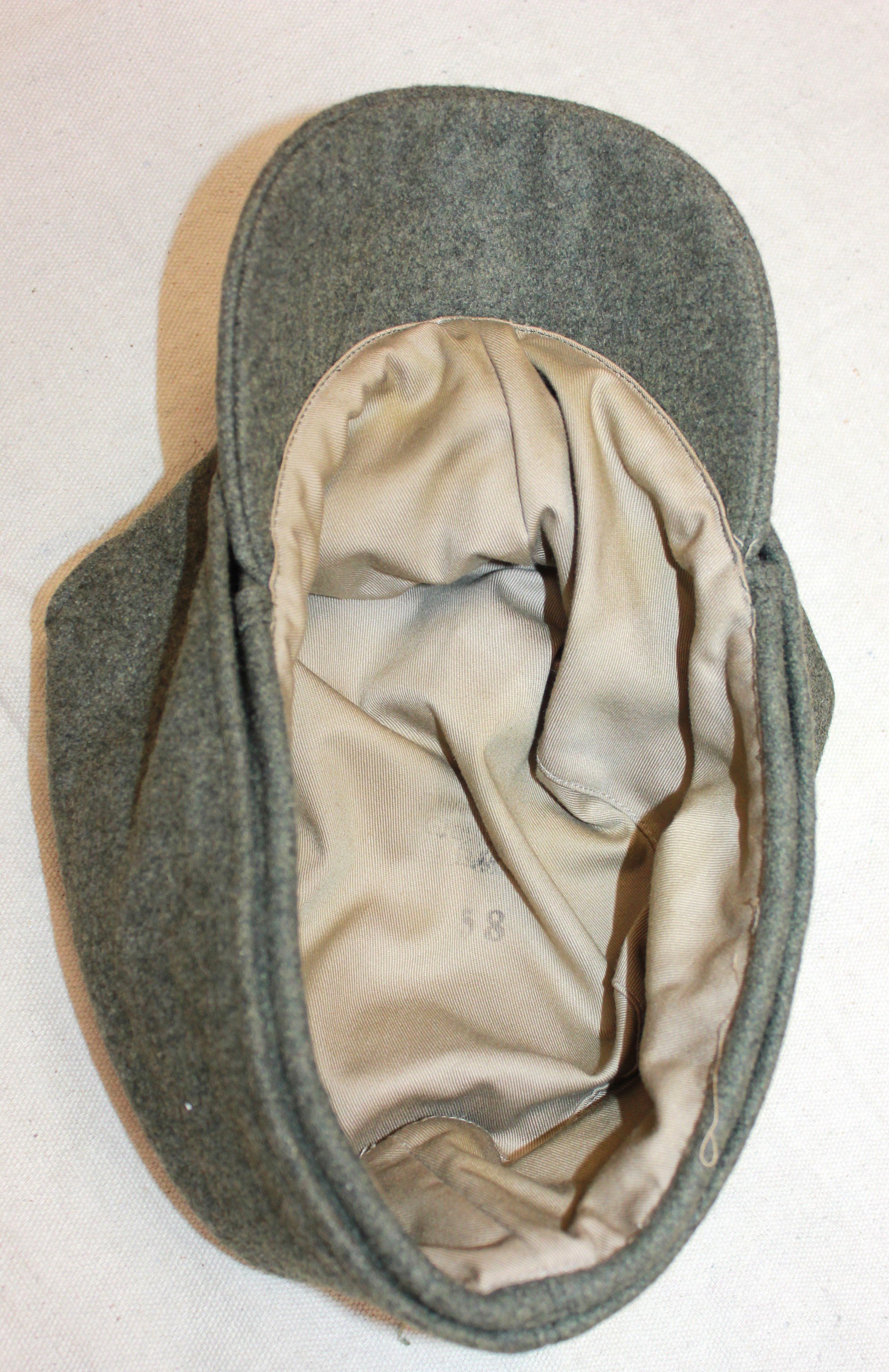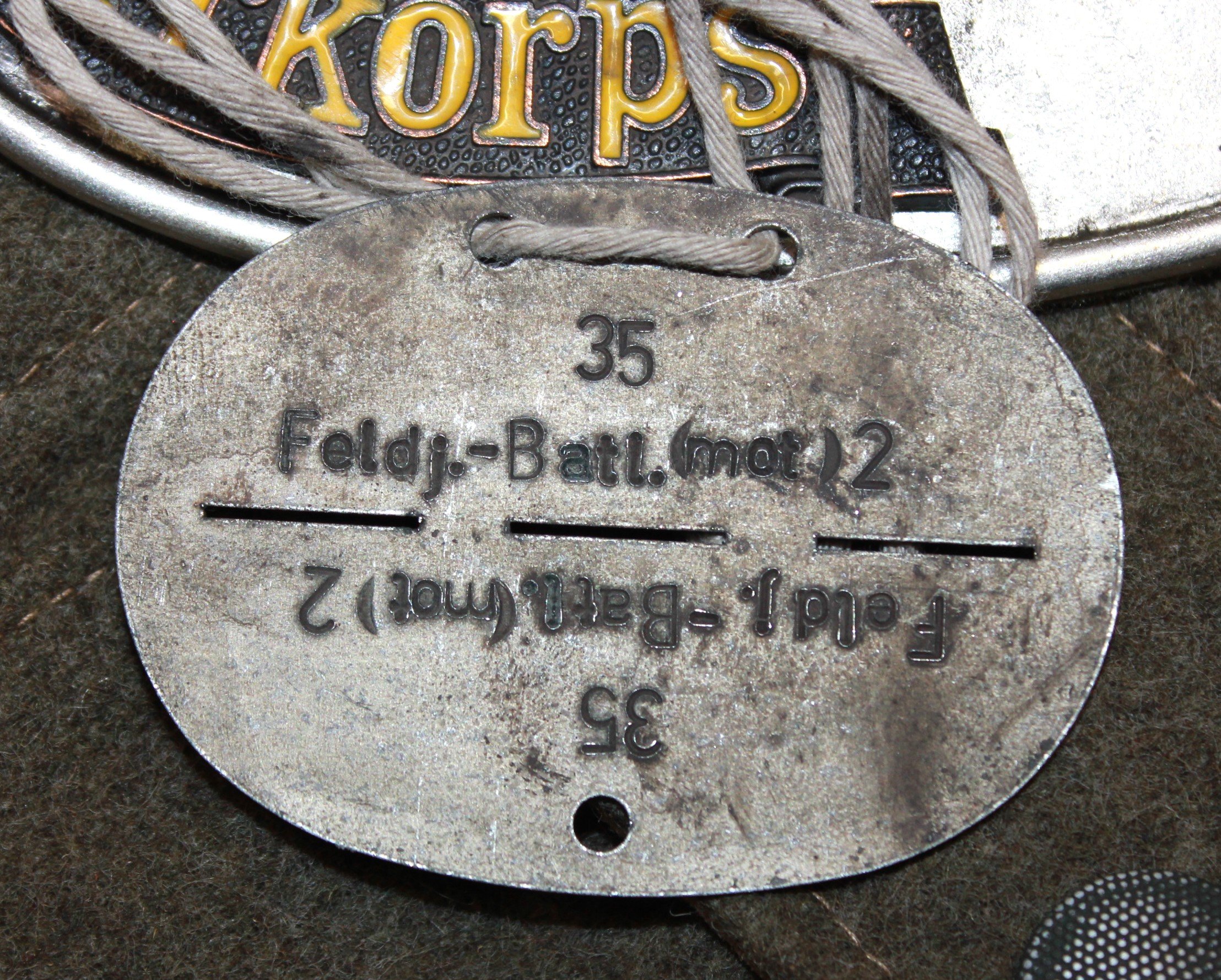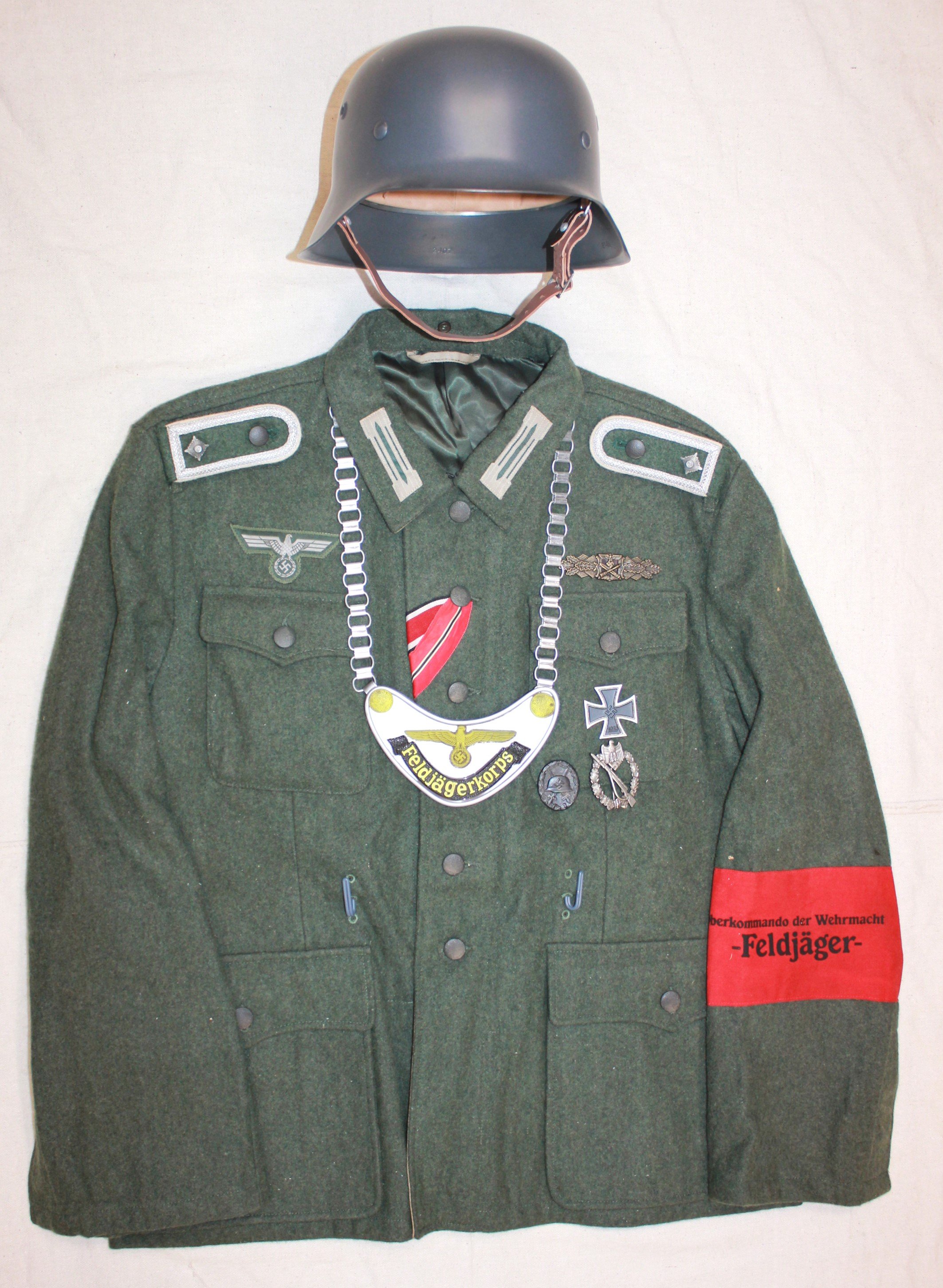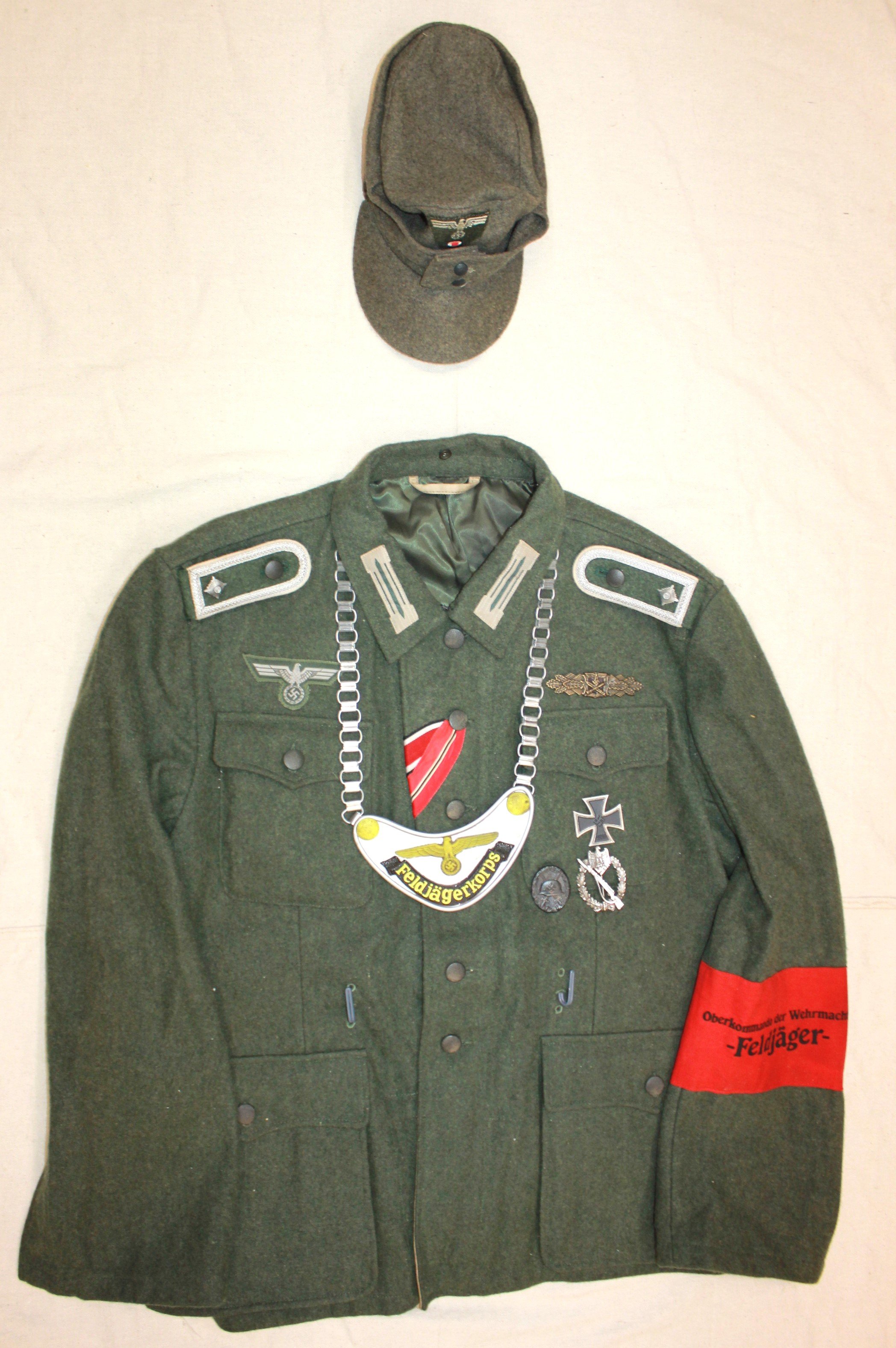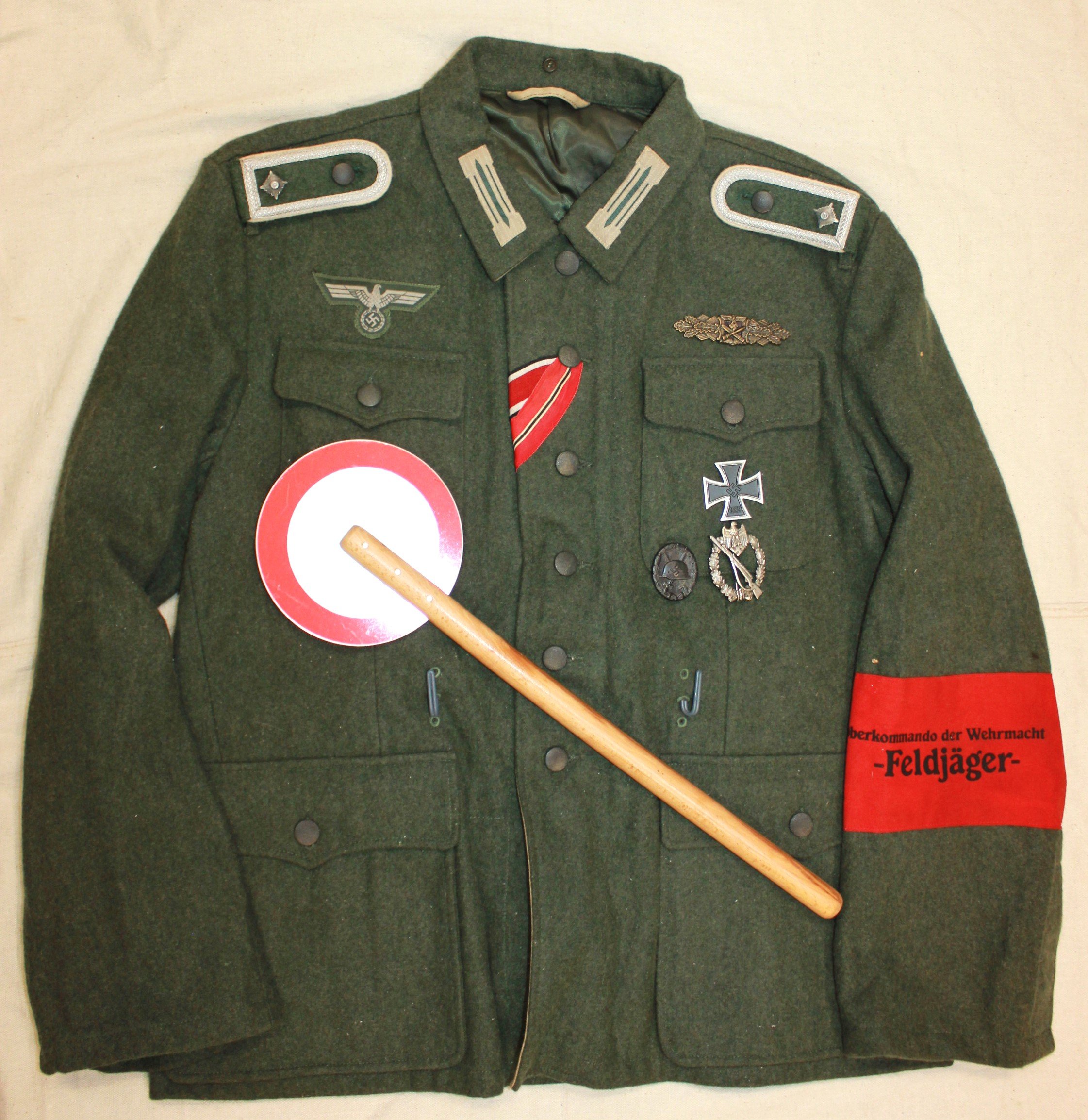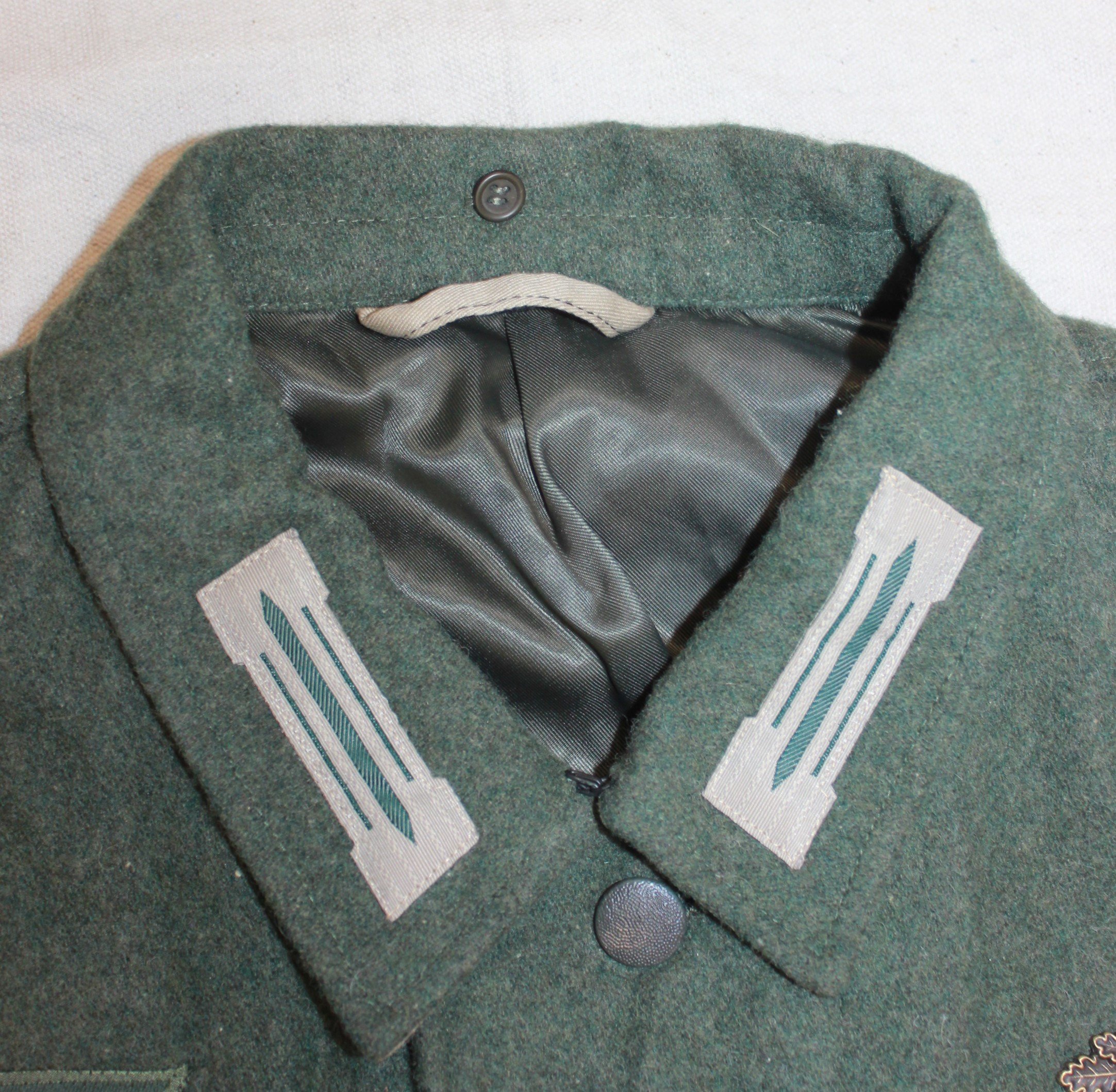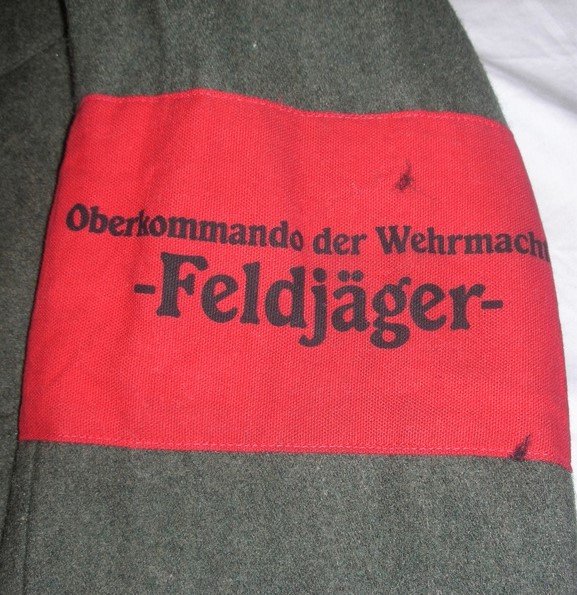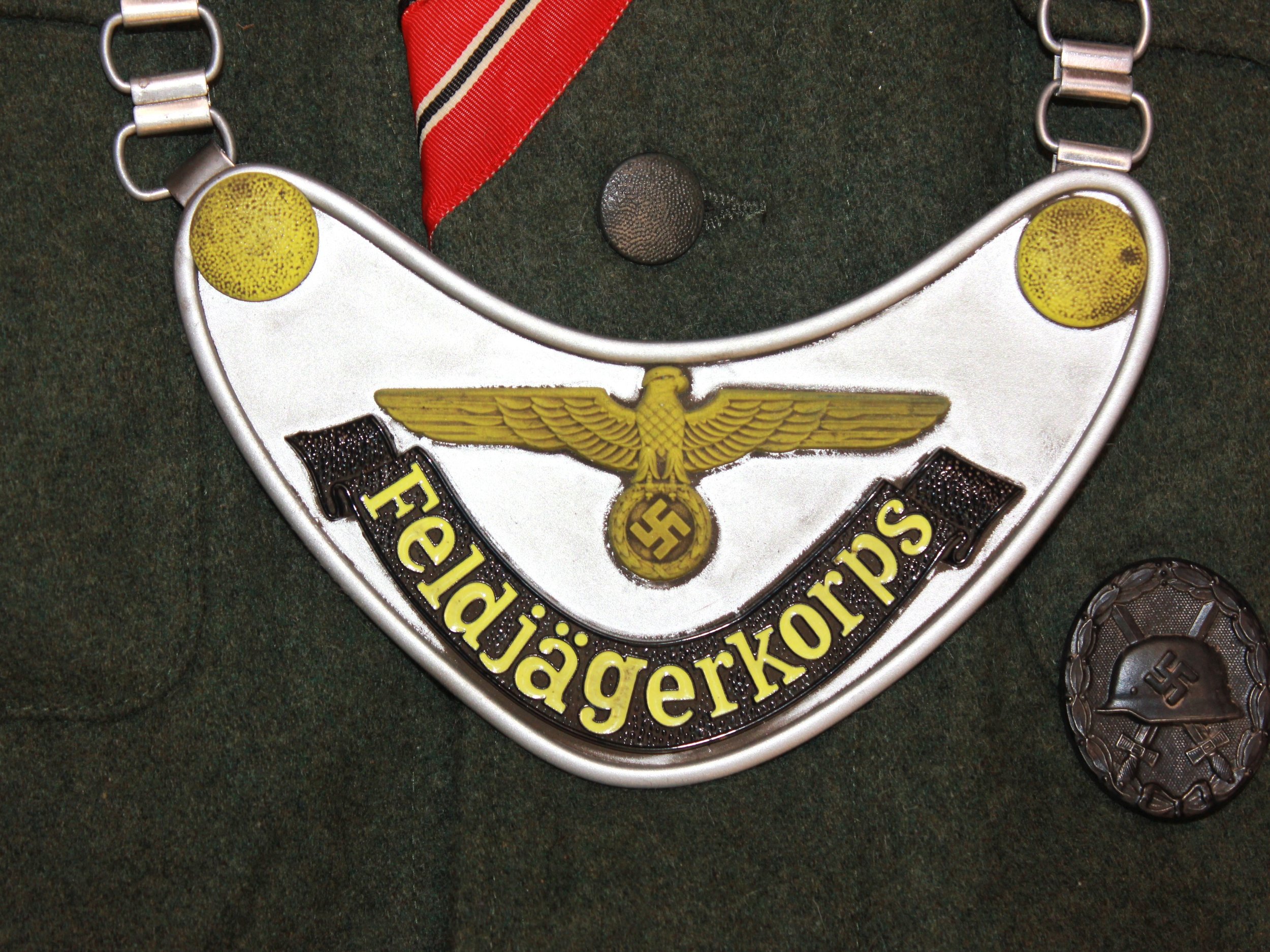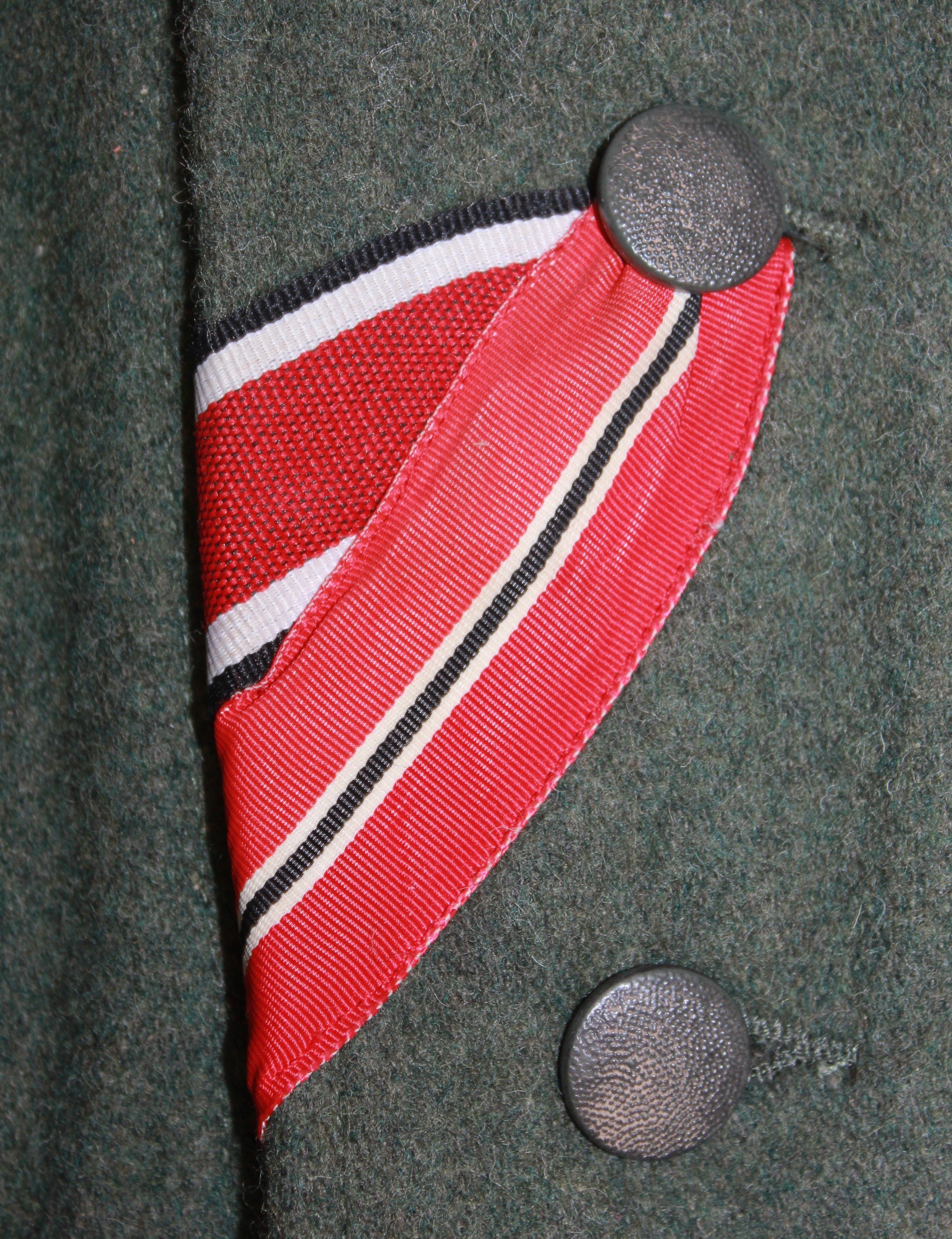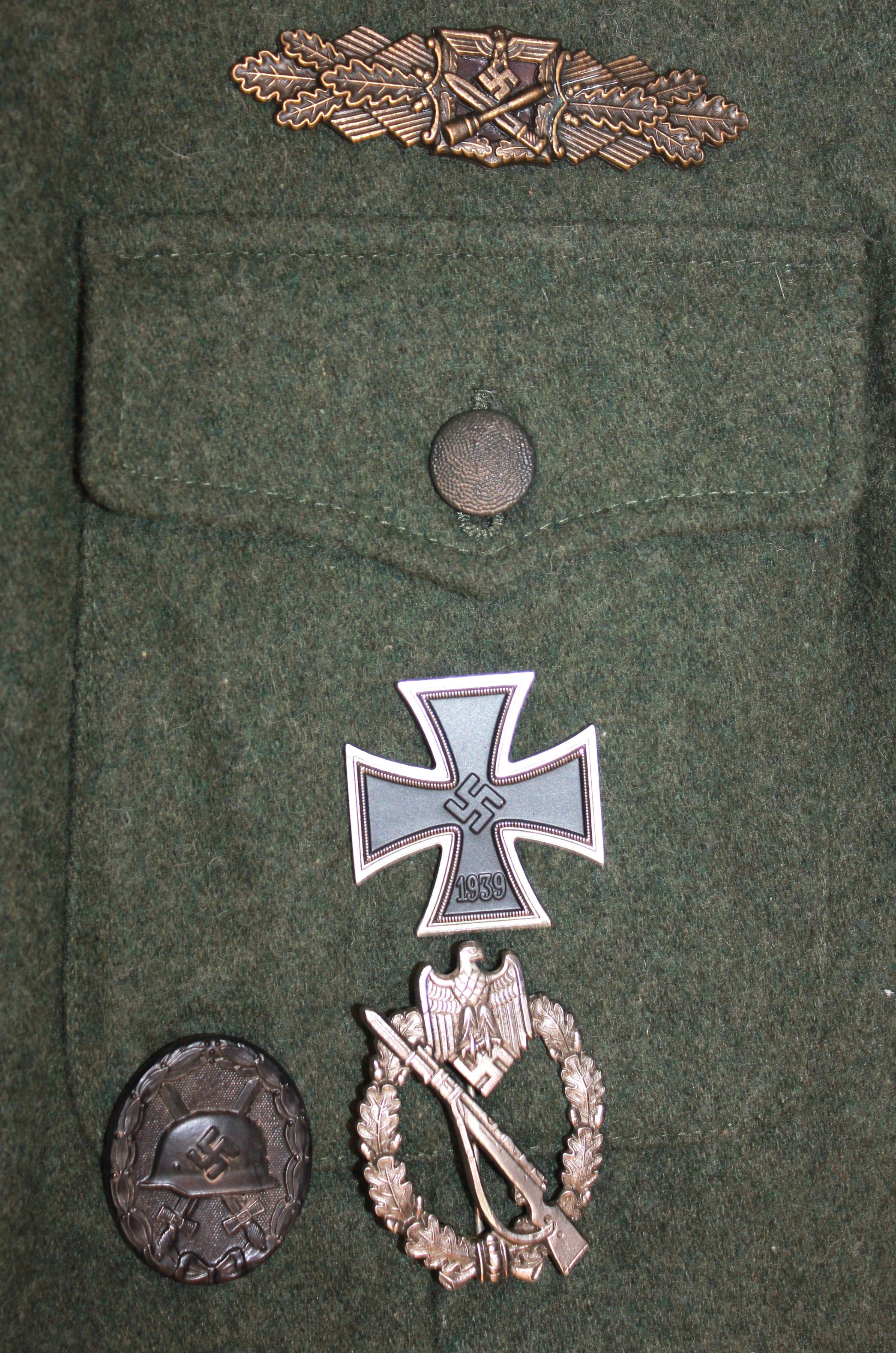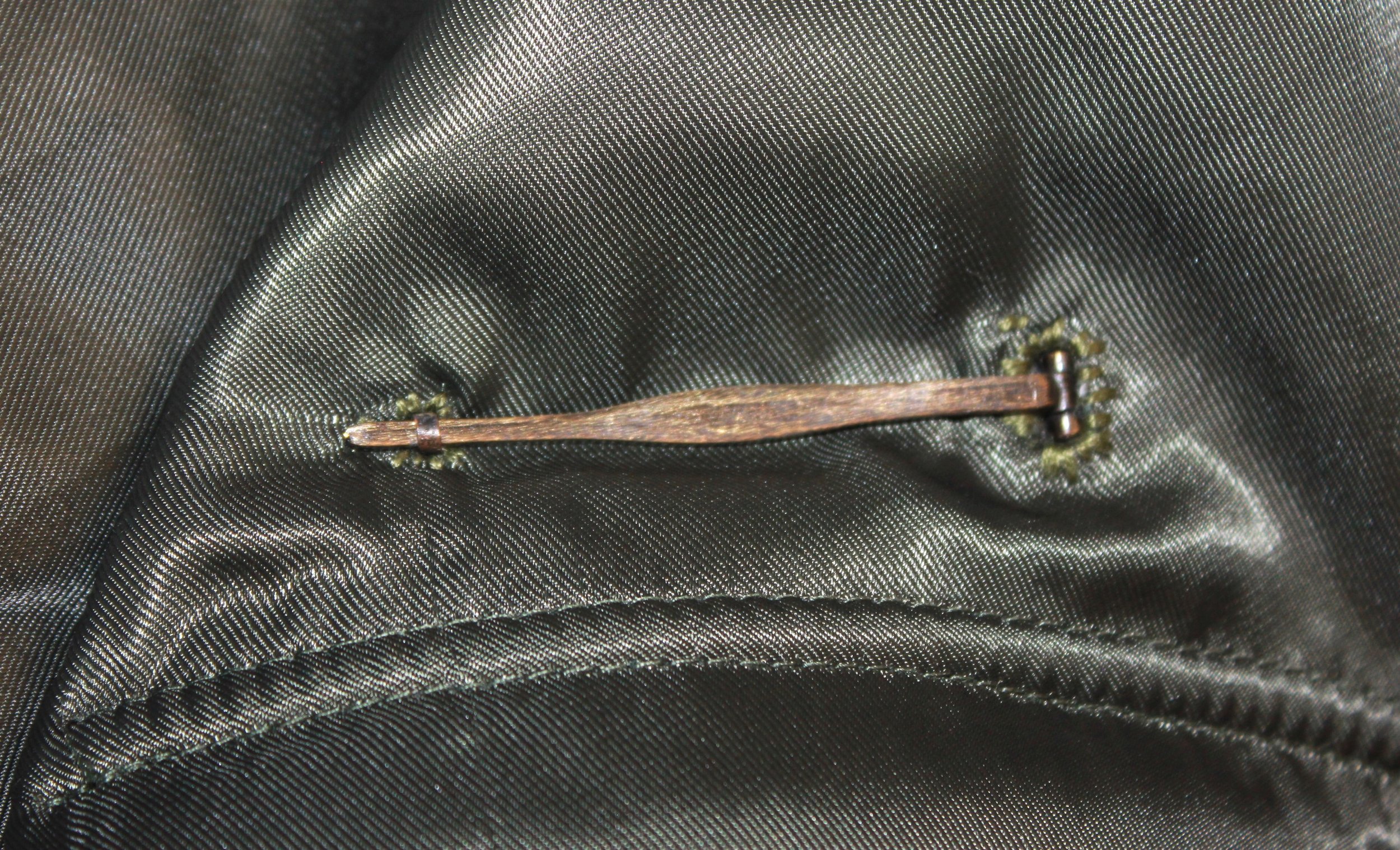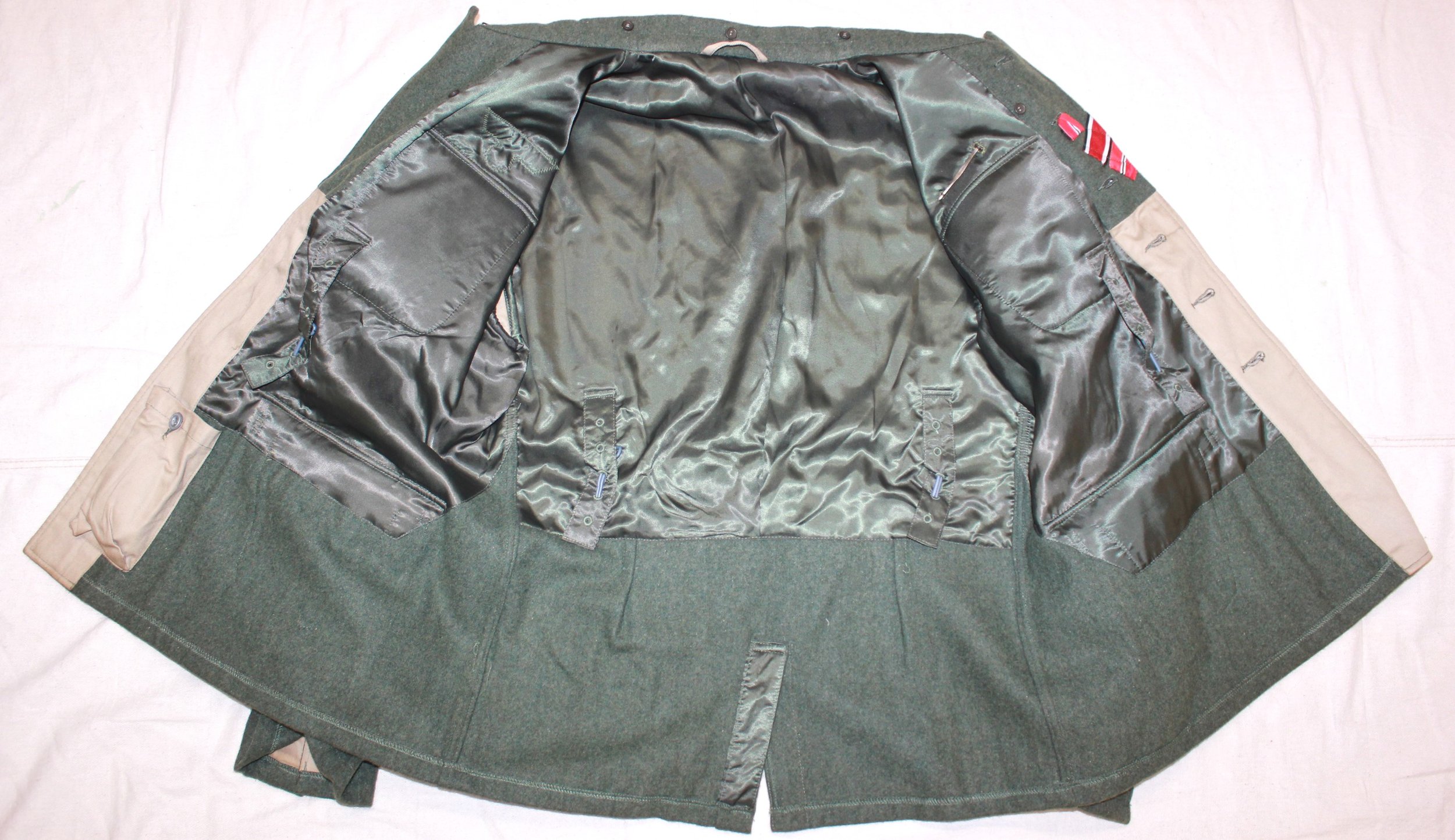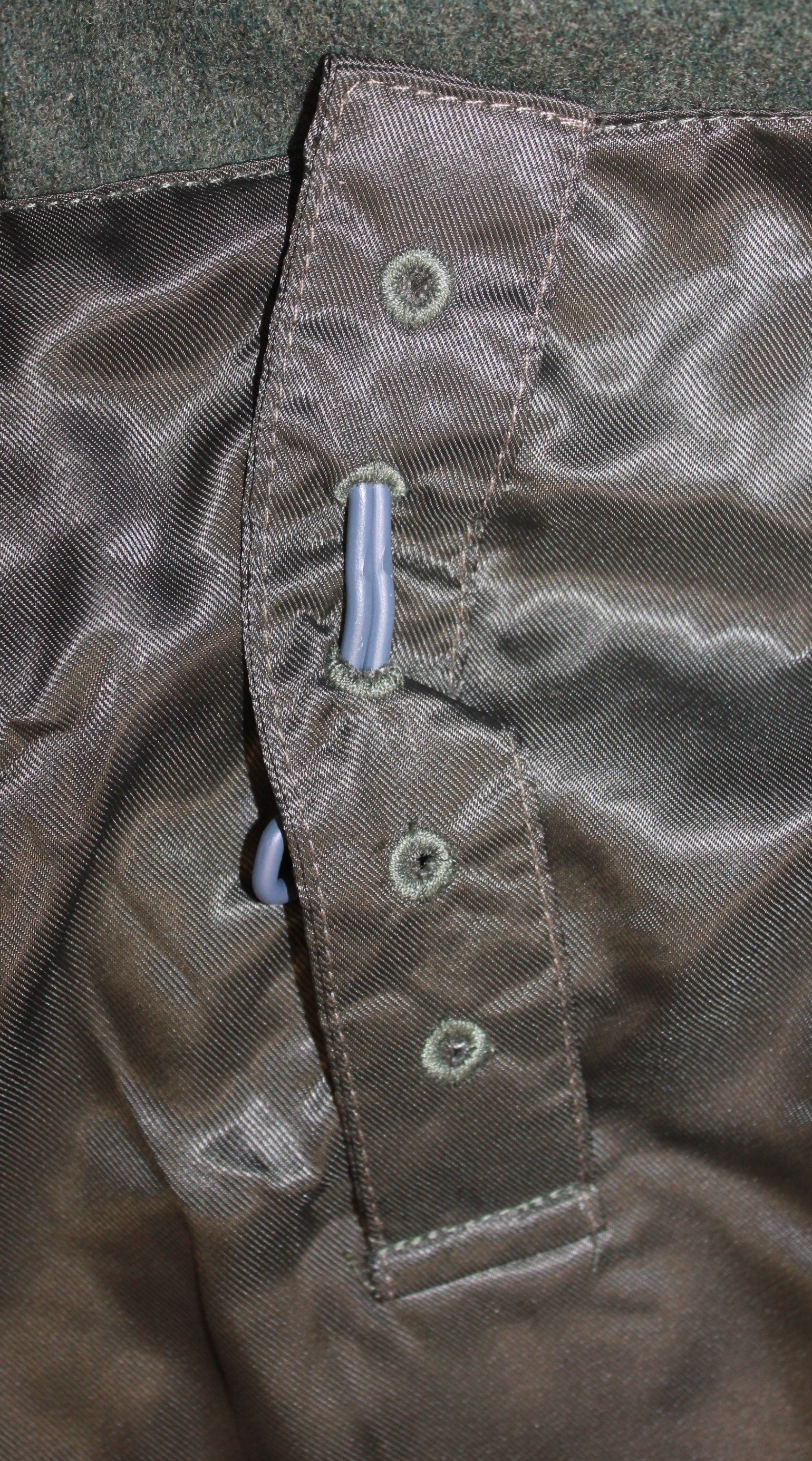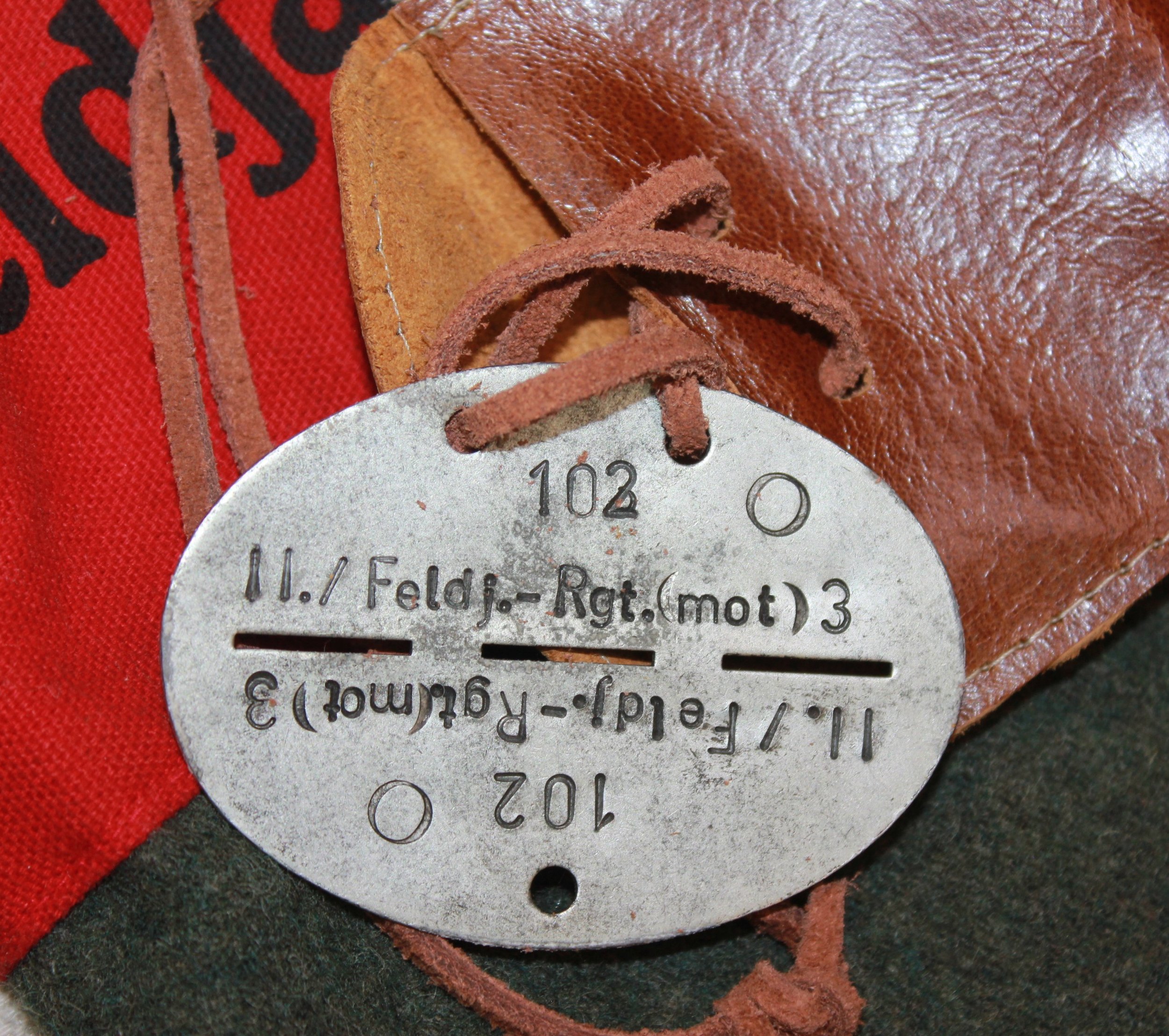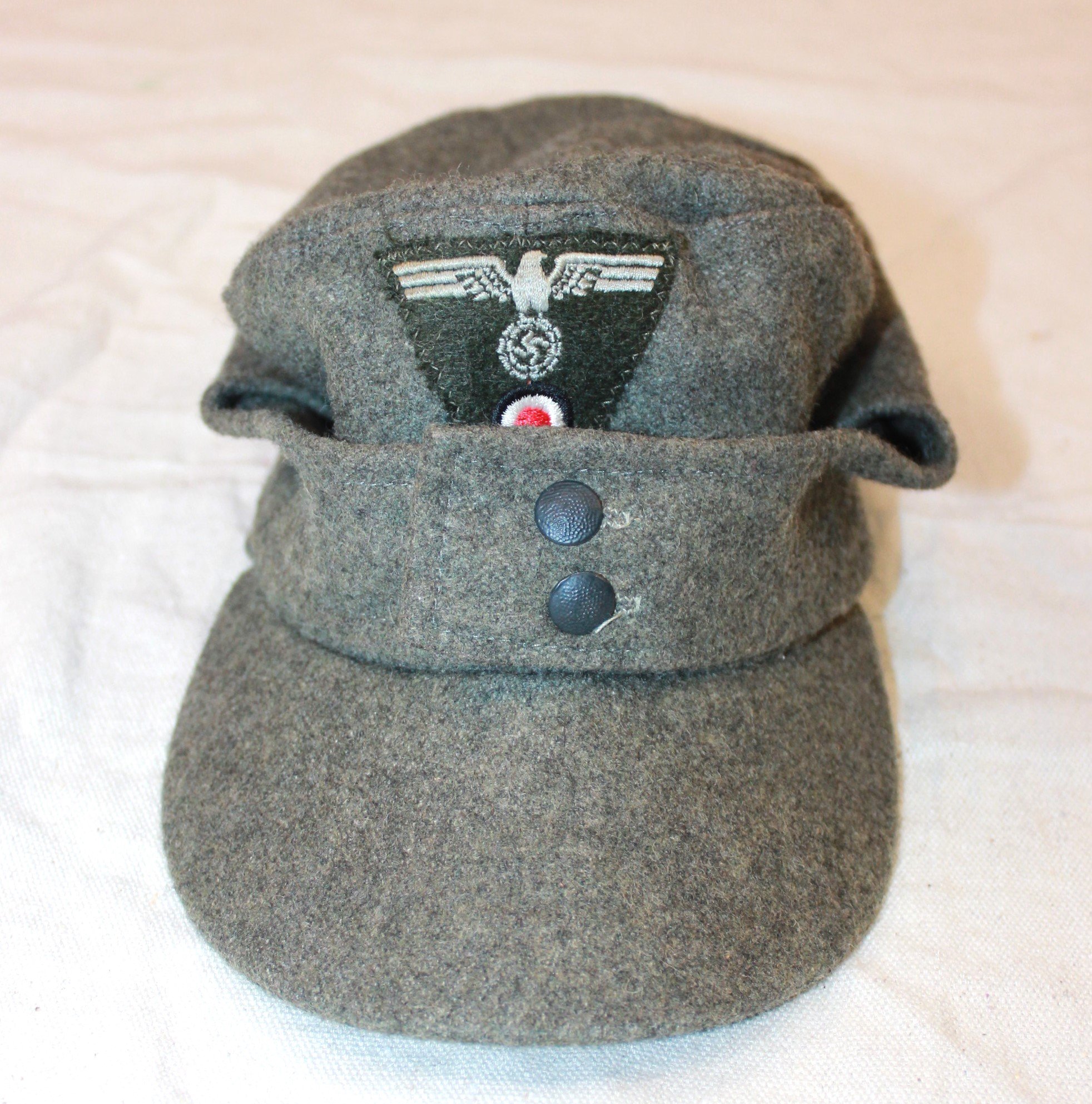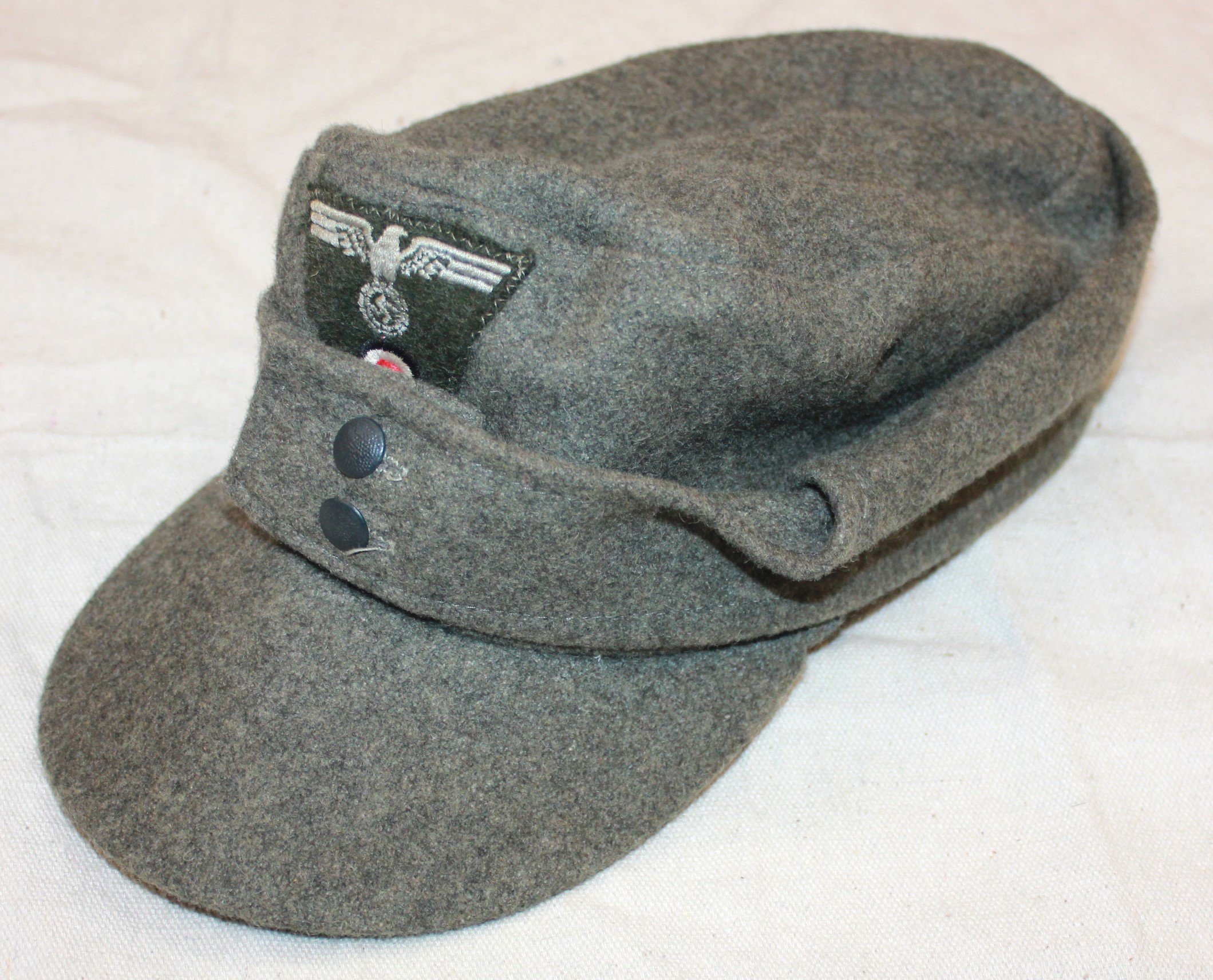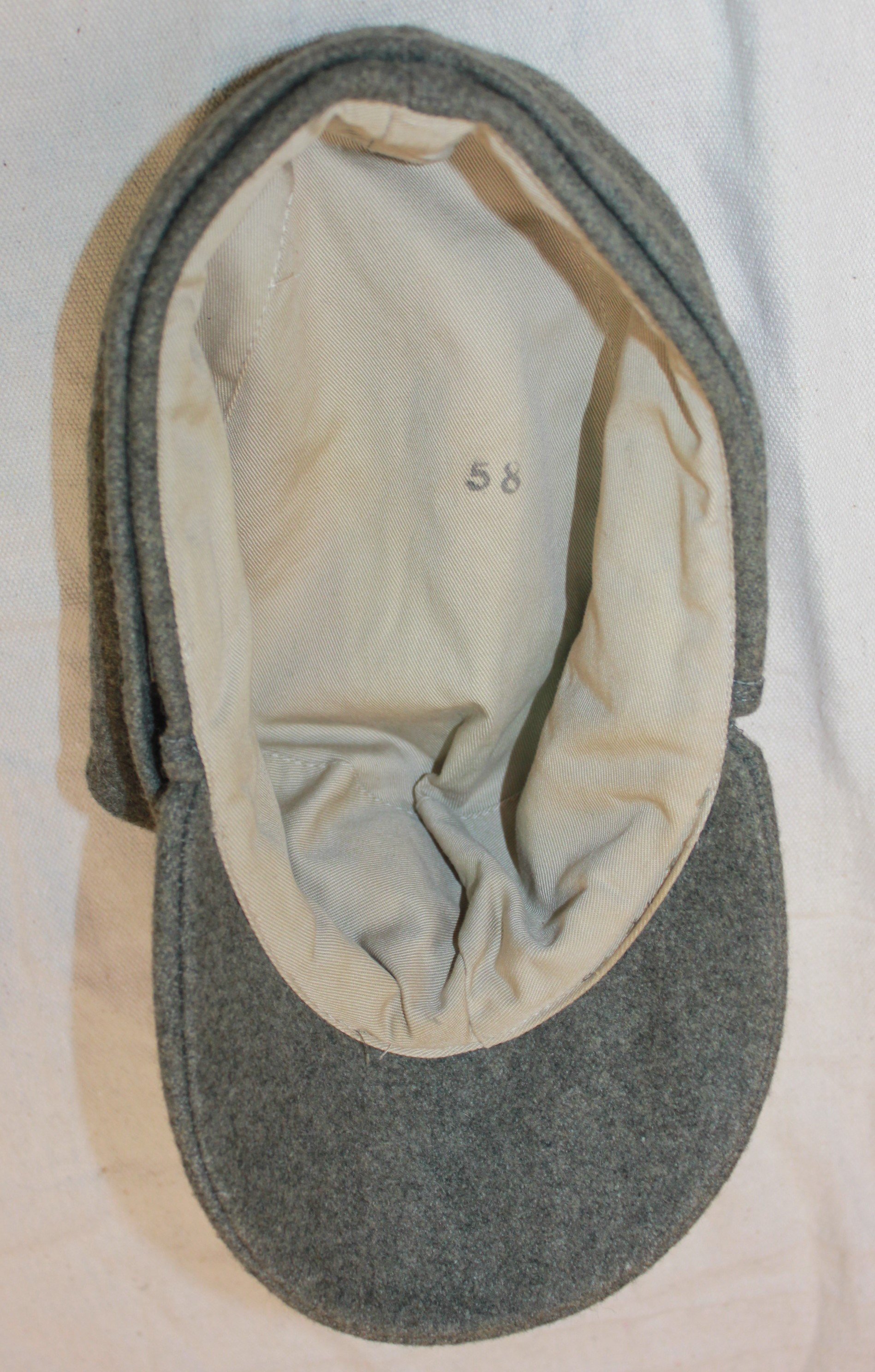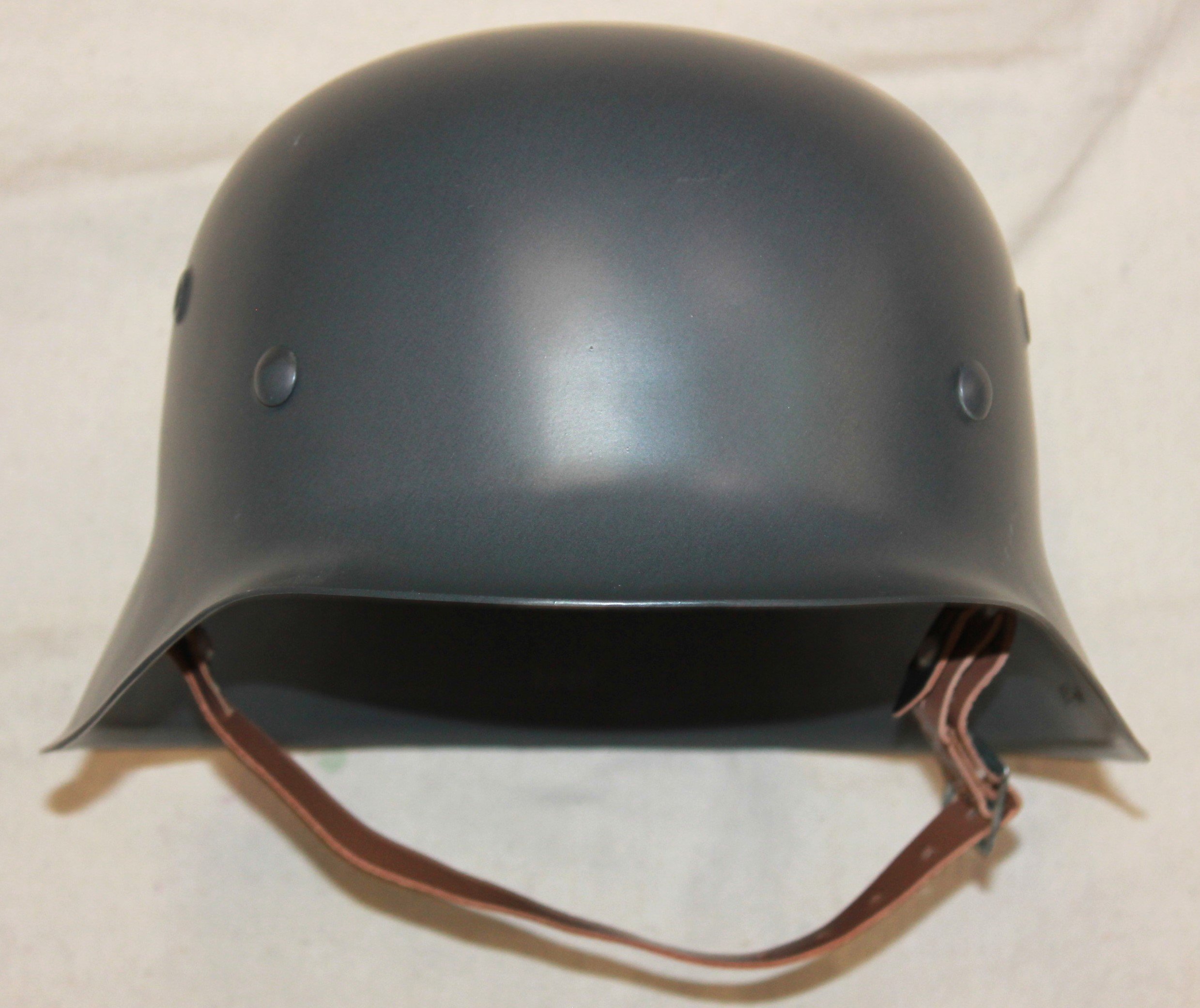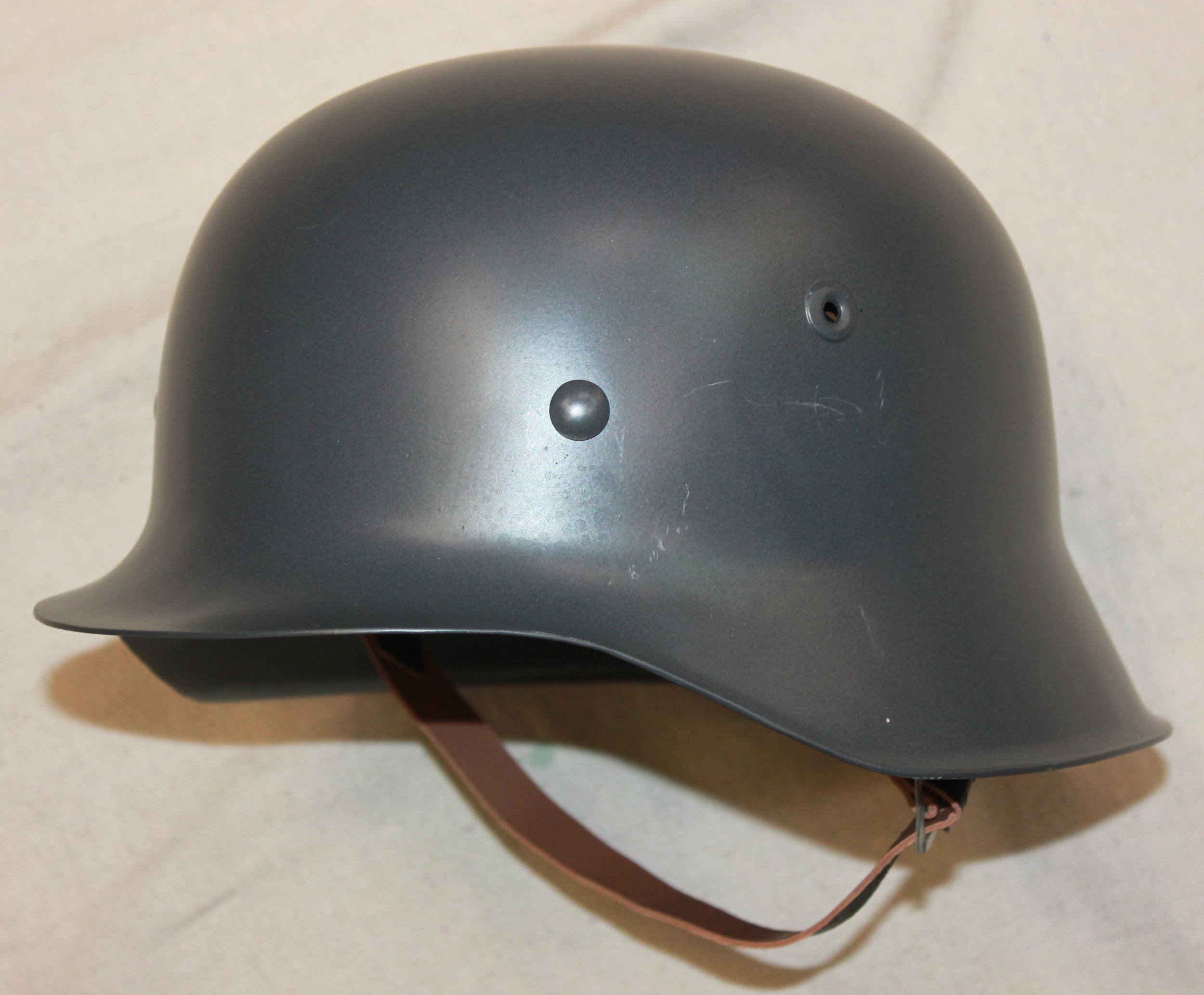Heer~Wehrmacht Feldgendarmerie:
Feldwebel, Feldgendarmerie Truppen (Motorized) 253:
The other side of the Polizei, the Feldgendarmerie, where military police, with more power than the civilian Polizei, who were reintroduced into the Wehrmacht in 1933. Newly organized Truppen received full infantry training and were given extensive police powers. To ensure a steady supply of new personnel, a military police school was set up at Potsdam, near Berlin. Subjects included criminal code, general and special police powers, reporting duties, passport and identification law, weapons drills, self-defense techniques, criminal police methodology, and general administration.
In a one-year school, the failure rate was high. For example, the Class Year 1935 graduated only 89 of the initial 219 candidates. Feldgendarmerie were employed within army divisions and as self-contained units under the command of an army corps.
They often worked in close cooperation with the Geheime Feldpolizei ( Secret Field Police), district commanders, SS, and Police Leaders. Feldgendarmerie Bataillons have subdivided into smaller-sized Truppen. A Truppen attached to an Infantrie or Panzer-Division would have up to three officers, 41 NCOs, and 20 enlisted men. Feldgendarmerie units were motorized, making use of motorcycles, Kübelwagen, and field cars such as the Horch 4x4, and 3-ton Opel Blitz trucks.
This would be the poster-perfect uniform (In my mind) to depict a Heer Feldgendarmerie. Wearing the Heeresfeldanzug Model 1936, the Feldwebel is ready for daily duty. An early graduate of the Potsdam Academy, he displays campaign ribbons for both the Sudetenland and Austrian Annexations as well as the wartime award of the Kriegsverdienst Kreuz II. Klasse mit Schwerten. The SA Sport, or as it was known after January 1939, Wehrabzeichen, is worn in the pocket. The badge was one of the few political decorations that the armed forces allowed to be displayed on a military uniform freely. By the end of 1943, over 2.5 million had been awarded.
Below this, he wears the Verwundetenabzeichen in Schwarz for a combat-related injury sustained during service. While on duty he wears the Feldgendarmerie Gorget, a badge of authority along with his Stahlhelm, a leather cartridge belt with holstered P08 or P38 pistol. An interesting historical aside is that following the massive surrender of German forces to the American and Western allies Feldgenarmerie and Feldjäger were kept on duty, often side by side with US MPs and often independently to maintain the movement of surrendering forces.
Unteroffizier, DAK-Feldgendarmerie:
The Feldgendarmerie sent to North Africa, with the Afrika Korps, were to help in traffic control and disciplinary action, much as the orders for them in Europe during the war, however, being early in the war and Africa, they were not involved much in the rounding up of so-called undesirables, and Jews, there was no place or time for that, and they did not have the numbers to carry out such an order, they were more so used for their original purposes, tell they retreated through Tunisia, and eventually surrendered with the rest of the German Army, after their surrender, some were used alongside the Allied Military Police to help question individuals, and keep order at roadblocks, and prison camps and the like.
The uniform depicts what I would call the standard look of a Feldgendarie with the DAK, with orange piping on the uniform indicating his MP affiliation, he has a general assault badge, though the Feldgendarmerie were not generally used on front-line duty, they often found themselves there, and for the movement and containment of prisoners.
The “Corporals” boards are in a possibly locally obtained, subdued format, and don’t match the uniform directly. He does have the rare sleeve eagle of the Polizei type. The uniform has a pocket-hung torch (Light) And even in the intense heat and dust, a shirt with tie is worn, tropical trousers were worn with the uniform, various shoes and boots could be worn as well as belt / Y-staps and equipment, and may have had a vehicle assigned to him as well. He often had the direction stick for traffic control with him, and while on service (Most of the time), he wore the gorget around his neck too.
Hauptmann, Feldgendarmerie Truppen 719, 719th Infanterie Division:
719. Infanterie Division was formed in May 1941 as part of the fifteenth Aufstellungswelle or wave from Wehrkreis III, which was Berlin. Like the other divisions of the fifteenth wave, it consisted of only two rather than three Infanterie regiments. The division was transferred to occupation activity in the Netherlands and remained there, eventually fighting against the Allied advance following the Normandy landings and Operation Market Garden, fighting at Merksem, Woendrecht, and Breda before falling back into northwestern Germany’s Saarpfalz in February 1945. Destroyed by US Army forces, it surrendered near Münsingen in May 1945.
Feldgendarmerie units were activated in all branches of the Wehrmacht in 1933. Polizei personnel were sent to a year-long Infanterie training. Following that, they attended the Feldgendarmerieschule at Potsdam. Subjects included the Criminal Code, general and special police powers, reporting duties, passport and identification law, weapons drills, self-defense techniques, criminal police methodology, and general administration. Graduates then served at a Feldgendarmerie command for a year, where failure rates were high: in 1935, only 89 soldiers graduated from an initial intake of 219 candidates.
Feldgendarmerie were placed into Armeekorps in Bataillon size groups. The Bataillon was subdivided into smaller-sized Truppen which were attached to each division or smaller commands. A Gruppe, a section-sized unit, was then assigned to specific sections of the division. A typical Truppe attached to an Infanterie or Panzer Division would have up to three officers, 41 NCOs, and 20 enlisted men.
The Hauptmann wears a custom-tailored Model 1944 Feldbluse that has been made from a camouflage Model 1943 style warm weather Bluse. Extremely popular from the time of issue, those with means who could not get the new M44 uniform had one made. In this case, the officer, probably the commander of the Truppen, has obtained the look as well as hot weather functionality. The Schulterklappen straps have been sewn into the shoulder, perhaps for a sharper look. With the enlisted Feldgendarm sleeve eagle, he also has used a locally sourced machine embroidered Ärmelstreifen. His Einheitsfeldmütz fur Offizier has the final pattern BEVO single-piece insignia.
Hauptfeldwebel, Field Expedient-Feldjäger:
Feldjäger-Bataillon (mot) 2 By 1943, the war had turned against Germany, and morale amongst the front-line troops was dropping a. Curbing of desertion and maintaining order had, until this time, been the job of the Feldgendarmerie and Geheime Feldpolizei. In November of that year, the Feldjägerkorps was established as a single service dedicated solely to catching deserters. Eligibility requirements were stiff: a minimum of three years of frontline combat experience and an award of the Eiserne Kreuz II. Klasse.
The Feldjägerkorps consisted of 3 Feldjägerkommandos: Feldjägerkommando I was formed in Königsberg. It was commanded by General der Flieger Ernst Müller. Feldjägerkommando II was formed in Breslau. Its commanders were General der Panzertruppe Werner Kempf, General der Infantrie Karl von Oven and General der Artillerie Willi Moser. Feldjägerkommando III was formed in Wien. It commanders were General der Infantrie Hans Karl von Scheele, General der Infantrie Martin Grase and General der Flieger Wilhelm Speidel. Feldjägerkommando I and II saw action on the Eastern Front, while Feldjägerkommando III saw action on the Western Front.
Each Feldjägerkommandeur originally controlled a Feldjägerabteilung of Bataillon strength, by 24. In April 1944, this became a Regiment. The Feldjäger Bataillon consisted of five motorized Kompanie, each of 30 Officers, and 90 non-commissioned officers. The basic unit was the Streife or patrol, which was made up of anywhere between 1 Feldjäger and 3 Feldjäger and an officer. Every Abteilung had command over a Fliegendes Standgericht or flying court martial, which was composed of three judges. The authority of the Feldjägerkorps came directly from the OKW, and as such, even the lowest-ranking soldier theoretically carried more power than army officers.
The commanding officer of a Feldjägerkommando had the same level of authority as an Army commander, with the authority to punish any soldier of any branch of service. The Feldjägerkorps operated parallel to the front line and approximately 12–15 miles behind it. The mission was to maintain order and discipline, prevent panic retreats, gather stragglers, and assemble them at collection points to create ad hoc battle groups or units. Additionally, they checked soldiers’ travel and/or leave permits at embarkation points, rounded up deserters, and either returned them to their units, handed them over to the Feldgendarmerie or Geheime Feld Polizei, or issued punishment themselves.
When employed to act as Feldgendarmerie they could also gather Prisoners of War and hand them over to the appropriate authorities. After the surrender of Germany, the Feldjägerkommando remained armed and at the disposal of the US Army in order to maintain discipline amongst the German PoWs not formally surrendering arms until 23. Juni 1946. Feldjäger were often selected from front-line Infanterie who had been detailed to rear echelon duties due to wounds received at the front. The Hauptfeldwebel wears the Dienstanzug Model 1944 with an identifying Feldjäger gorget and red Armband.
Feldwebel, Heer / Feldjägerkorps:
The authority of the Feldjägerkorps came from the German Army High Command, and as such, even the lowest-ranking soldier theoretically carried more power than army officers. The commanding officer of the Fildjagerkommando had the same level of authority as an Armee commander, with the authority to punish any soldier of any branch of service (the Waffen-SS) included.
The Feldjagerkorps operated parallel to the front lines, within 10 to 15 miles of them. Their basic duties were to: Maintain order and discipline, prevent panic, stop retreaters, gather stragglers, and assemble them in collection points, where they could be formed into ad-hoc units. Check soldiers’ travel/and leave permits at embarkation points; round up deserters, and take them back to their units, or hand them over to the Feldgendamerie or Geheime Feld Polizei, or even issue punishment on the spot. They might gather PoWs and hand them over to the appropriate authorities. They could also be deployed as general Feldgendarm.
After the surrender of German Forces in Europe, Feldjagerkommando III remained armed and at the disposal of the U.S. Army to help maintain discipline among the German POWs. Feldkommando III finally and formally surrendered its arms to the Allies on 23rd June 1946.
Although the image of the Feldjagerkorps was one of a tough, brutal soldier who shot on site, this was often not the case. Veterans have reported that some of them had been caught by them and treated fairly well while under their control.
This Feldjager is very decorated with all the respectable battle decorations one could earn then. He has been a good leader in battle, having both 1st and 2nd Class Iron Crosses, and has seen plenty of hand-to-hand combat, earning the Close Combat Clasp in Bronze. He was a respectable NCO, earning his Infantry Assault Badge likely early on, during that first brutal winter in Russia, shown by the “Ost” ribbon, aka the “Order of the Frozen Meat”. All this led to an official putting him in this emergency Police position to keep order in the streets, soldiers were deserting, and civilians fleeing, but his job was to lead them in battle when it came to that, and it is expected soon.
All that likely helped to keep him in the position he is in, in the final throws of the war, he would be called to, he had to participate in situations he had never conceived of, in his head, but by this point, has already seen more than he ever expected to see as well, serving in the battles that lead the way to the East to and then the passed the same grounds coming back through Russia coming back to Germany, now he was serving as part of the “Home-Defence” in a Fortress City, Likley some SS fellows running the show, they were instructed to hold at all costs, even though, it was very clear the war was lost, and it would be like throwing peanuts at dragons, they were going to their fate. The Feldweble is amazed he made it back home in one piece, now they pray to just survive these last battles, be through with the war, find what may be left of the family, move on, try to survive the aftermath, and yet ordered to die for Hitler, and make sure everyone else does too, the whole damn thing just too crazy to comprehend. Then, just by chance, he is asked to interpret and help to “Police” at barricades or checkpoints with the Allied Occupation Forces that took over the city and helped the MPs stationed there, it was good to be alive and have some food, and purpose again, soon the Nazi insignia dis-appeared. The uniforms slowly turned to dust, and bugs ate them up, lost in the attics of old homes.
The M44 cut uniform depicts the time they were used in the last year of the war and the beginning of the Cold War, he would have likely worn late trousers as well, and a Stahelm helmet, or an M43 cap if the helmet was not needed. black belt with holster, and often a Gorget of a Feldgendarmerie, and had either short boots with leggings or marching boots.
